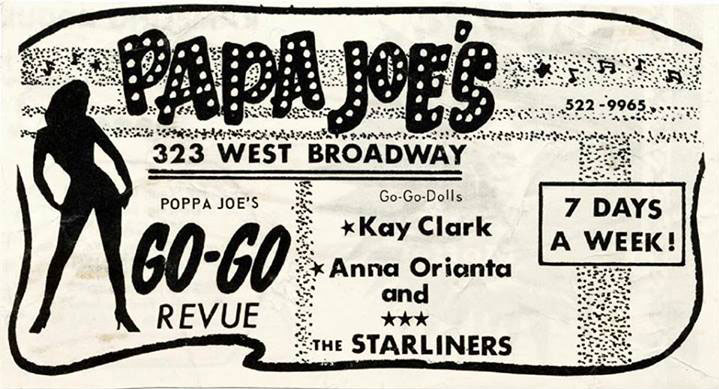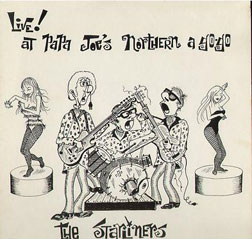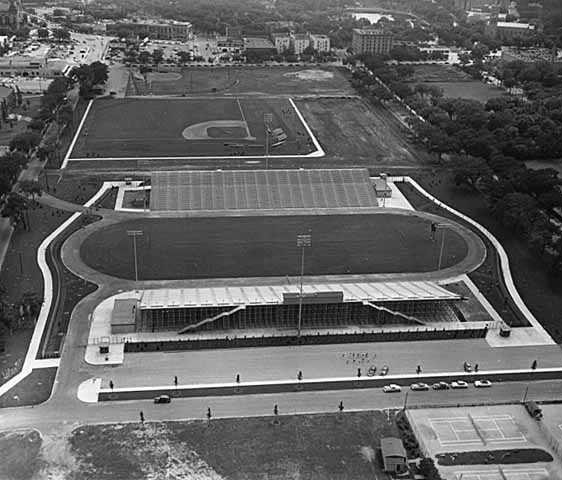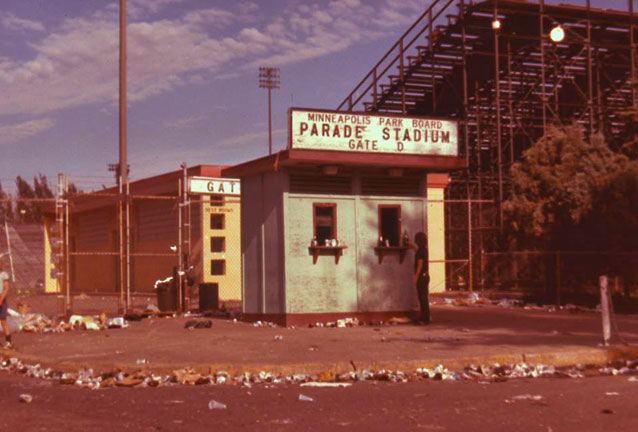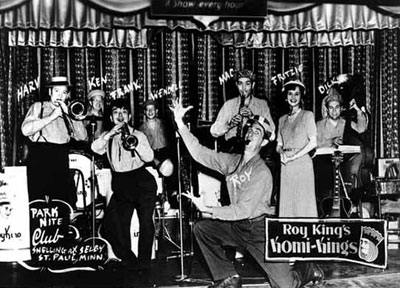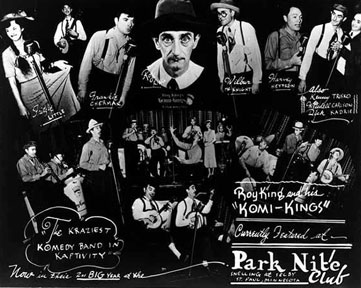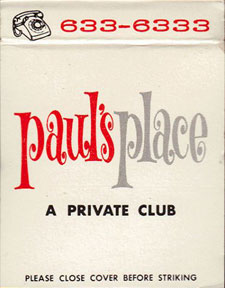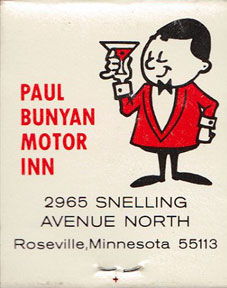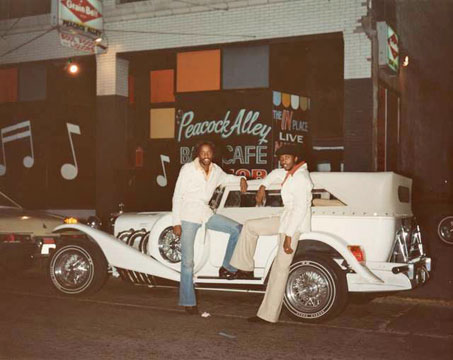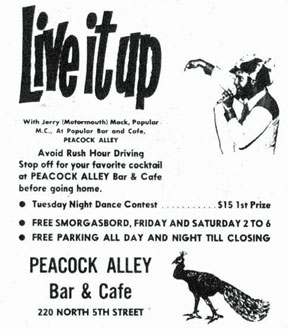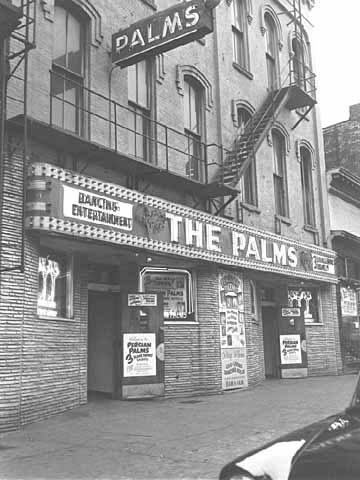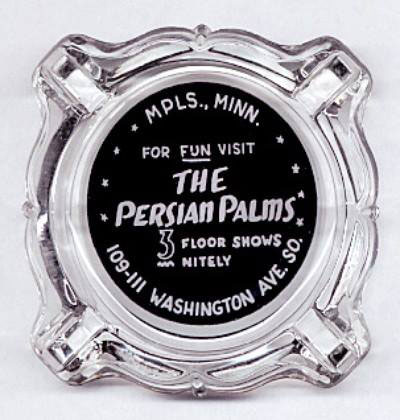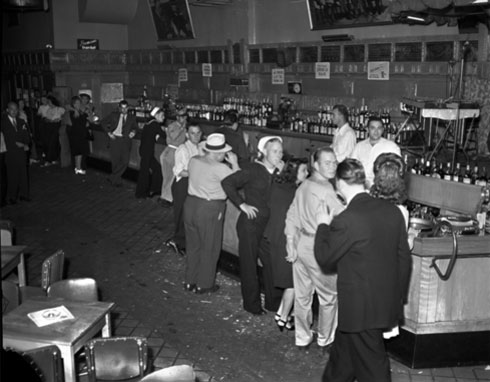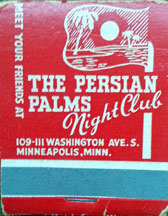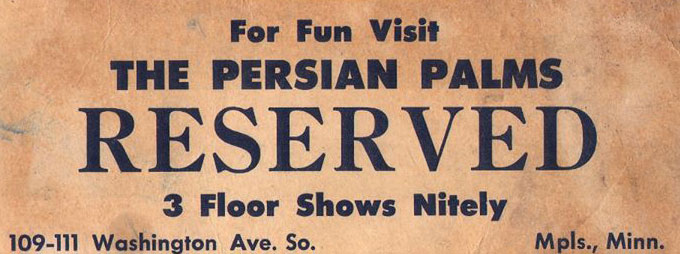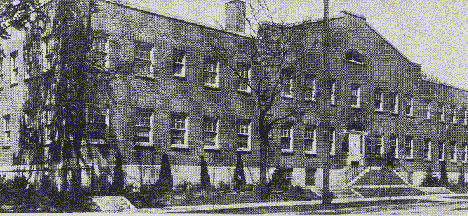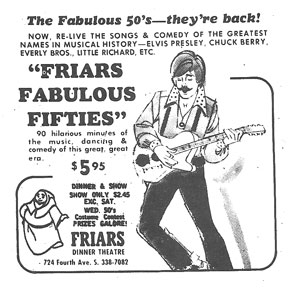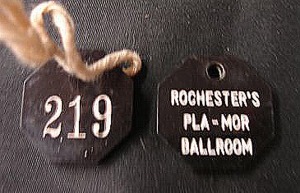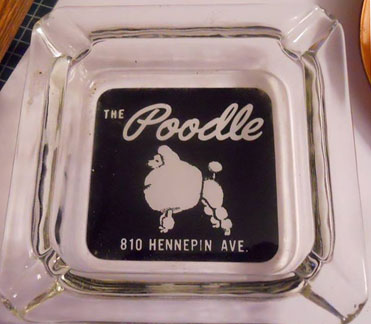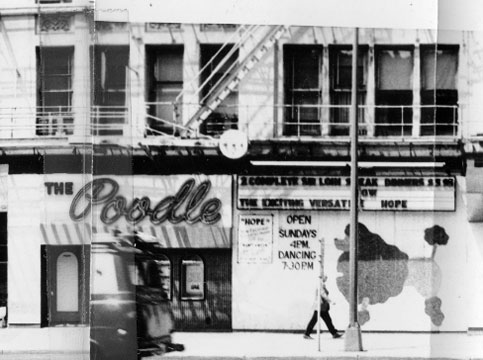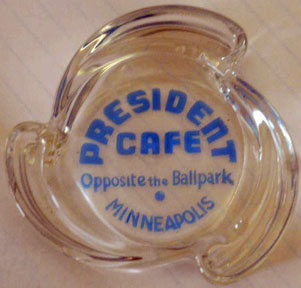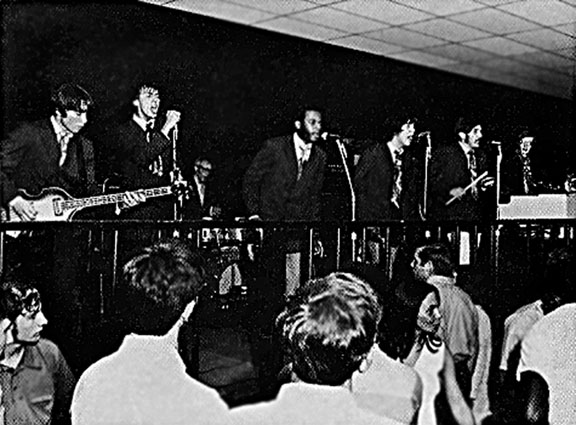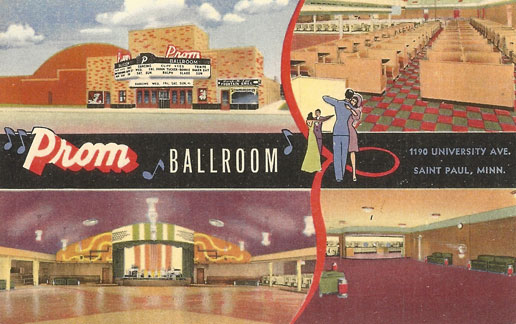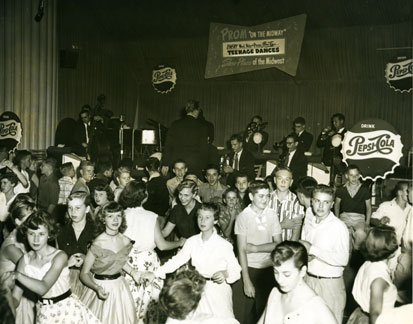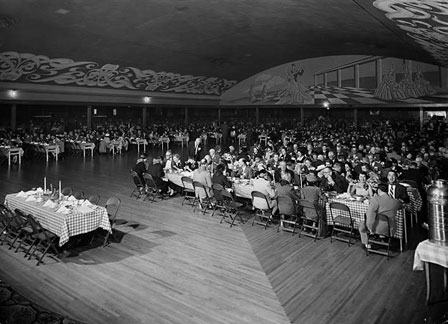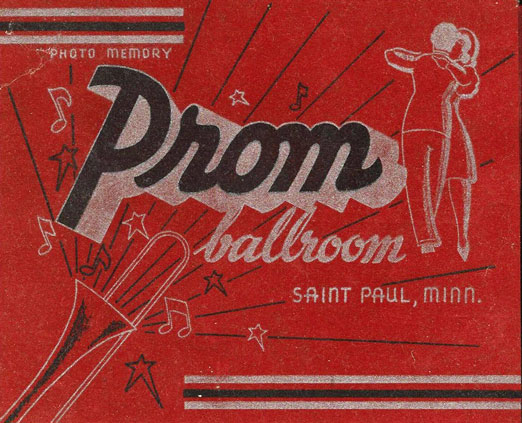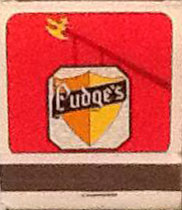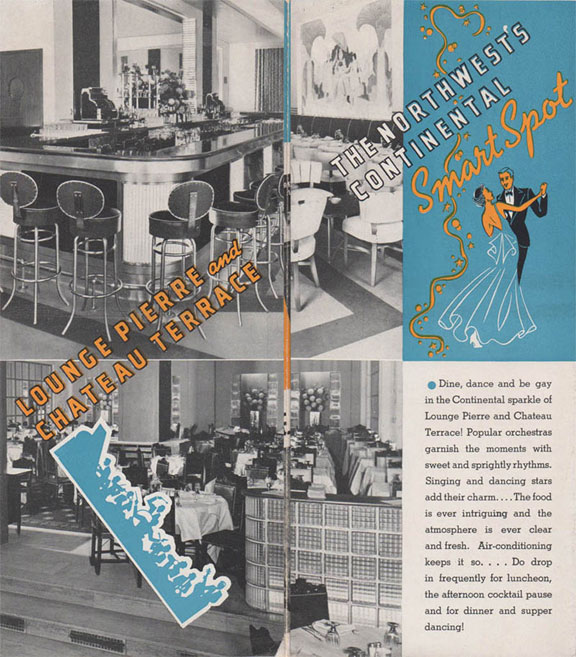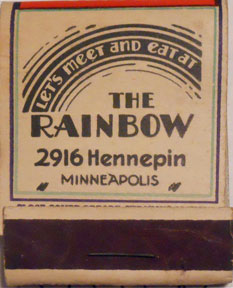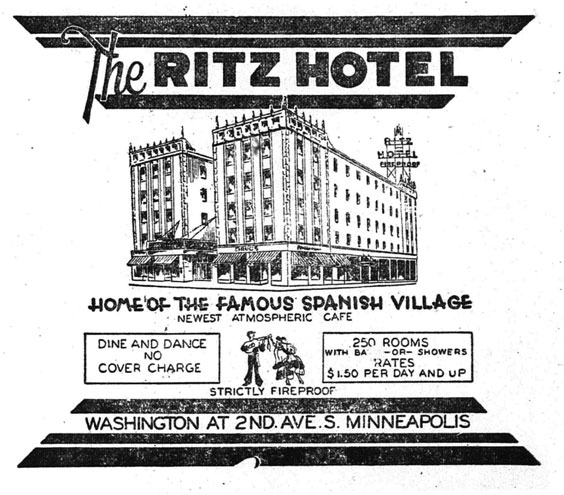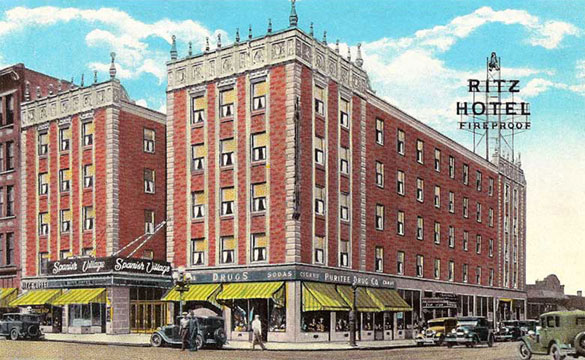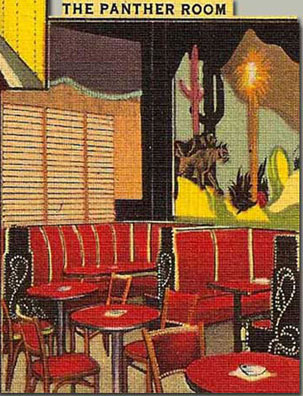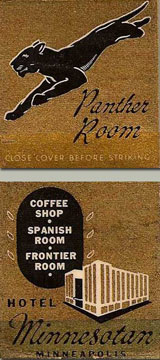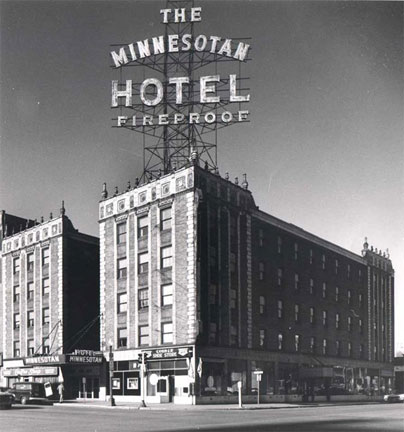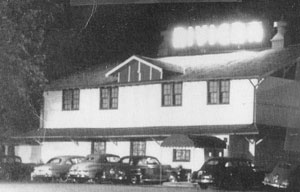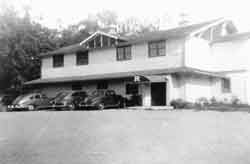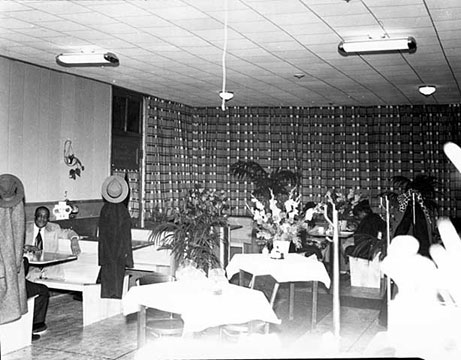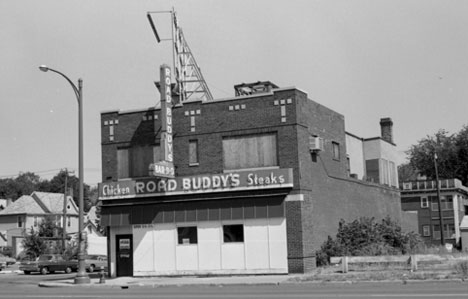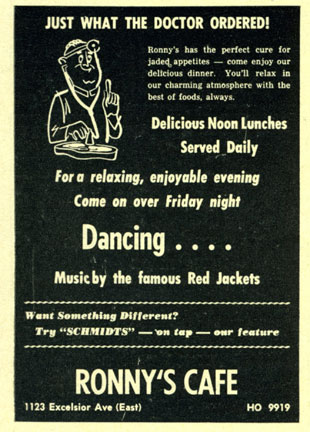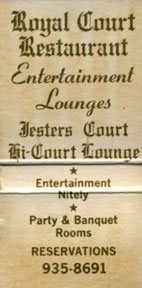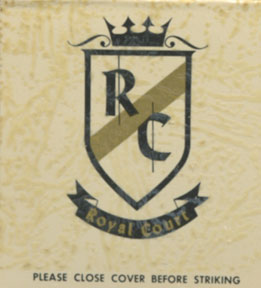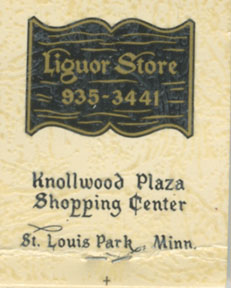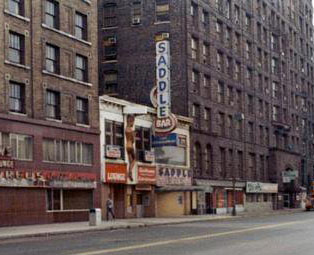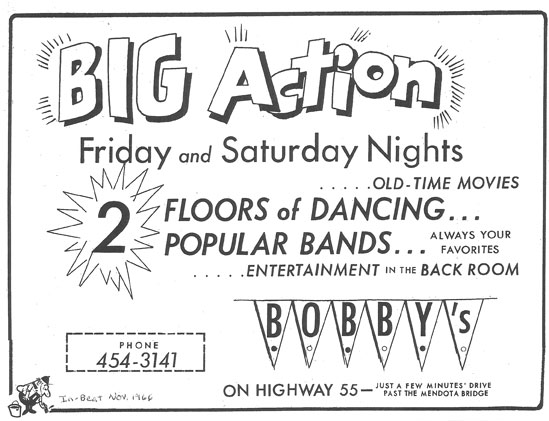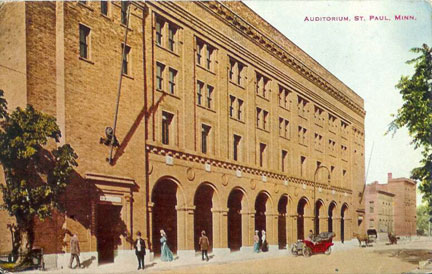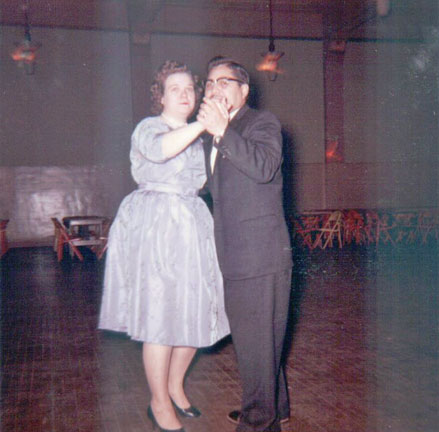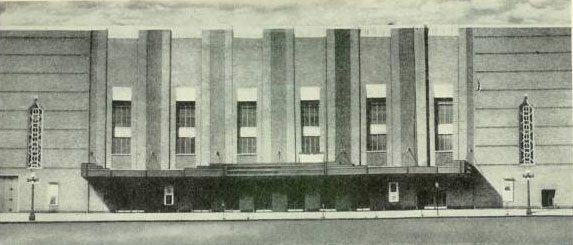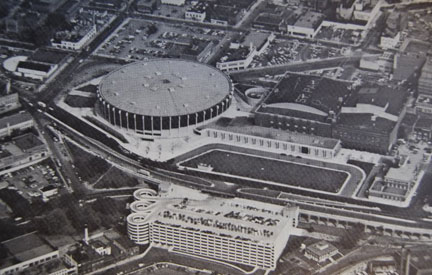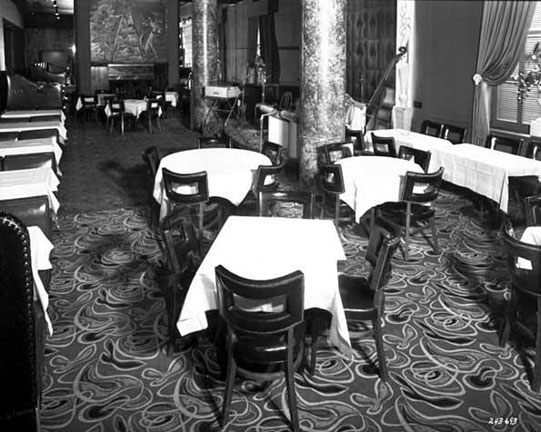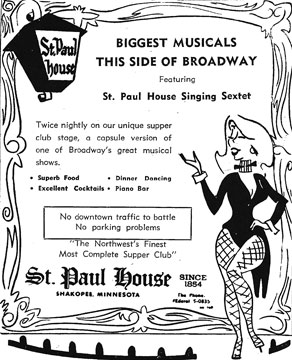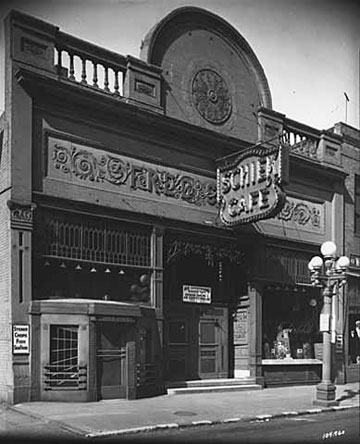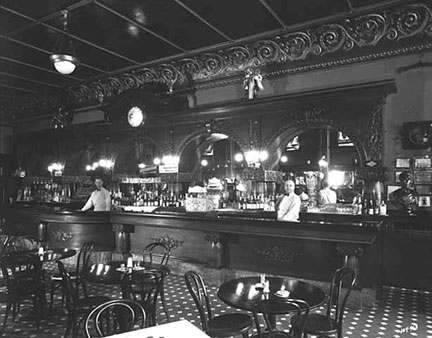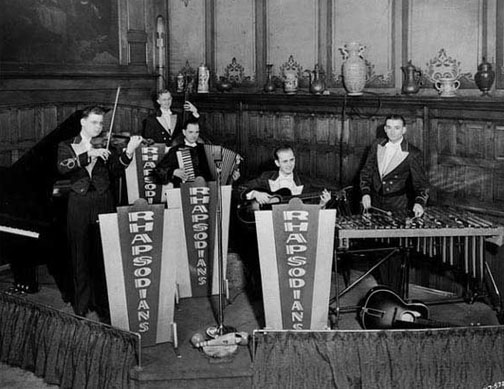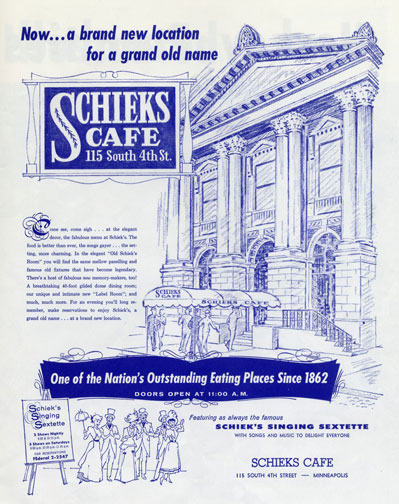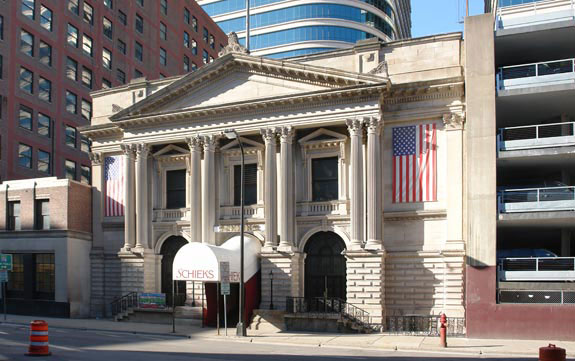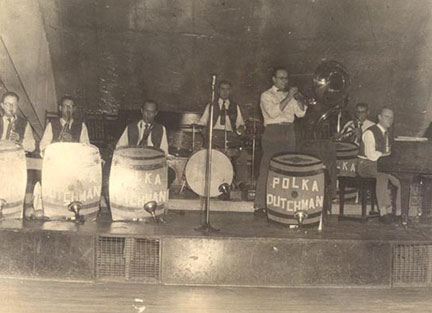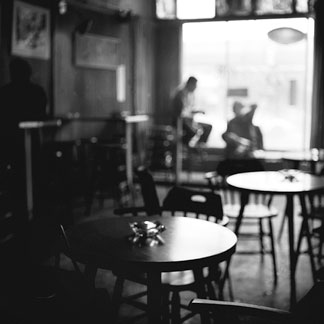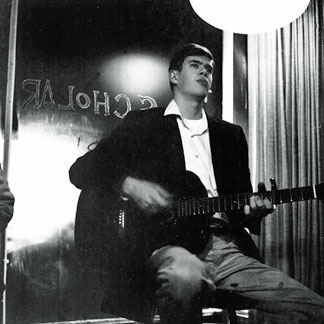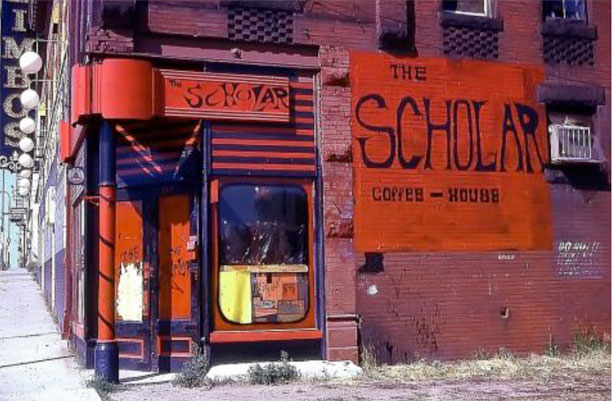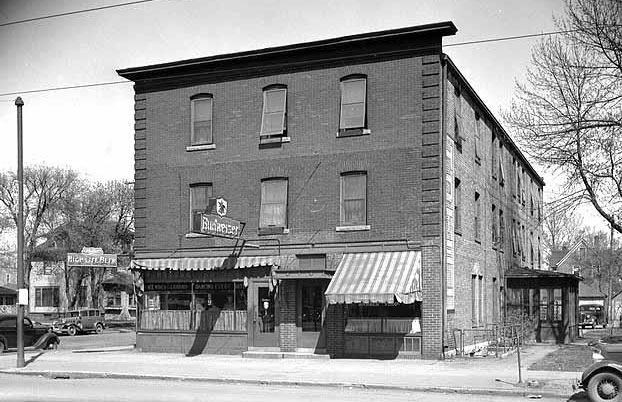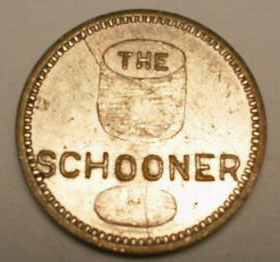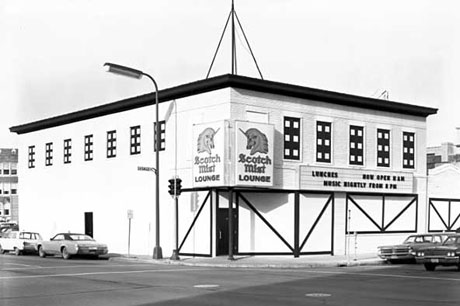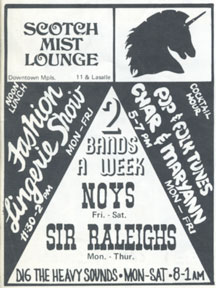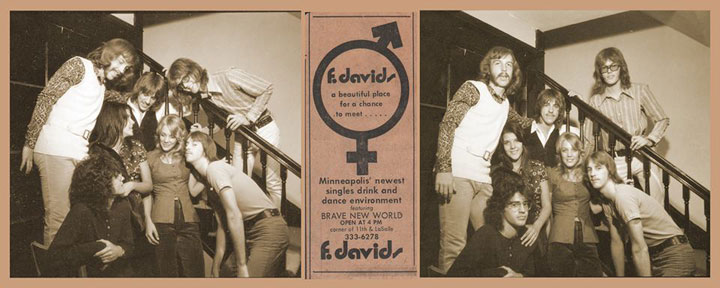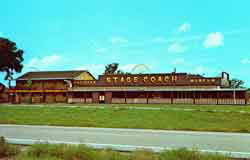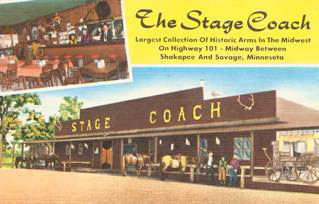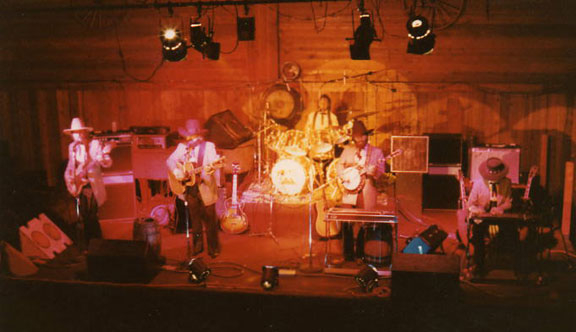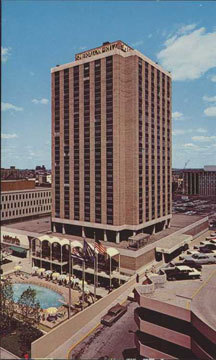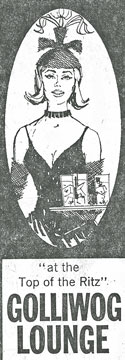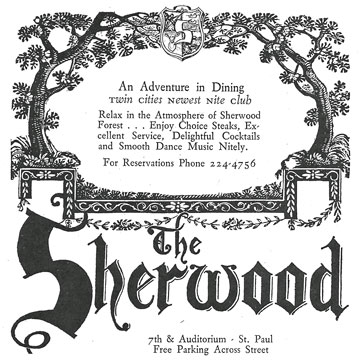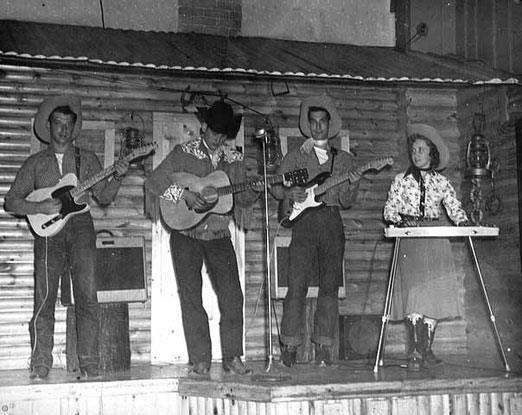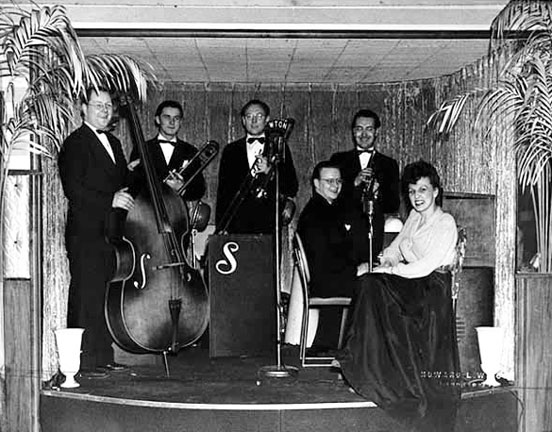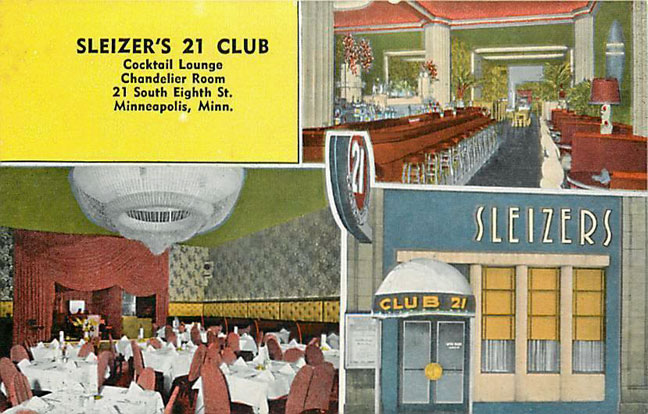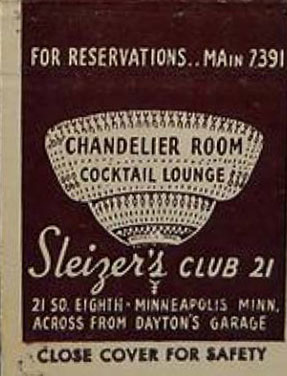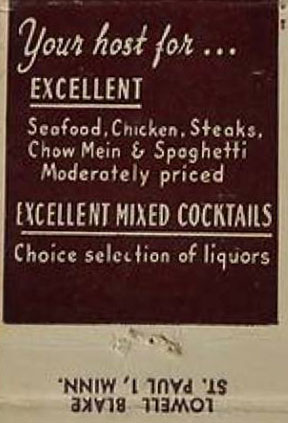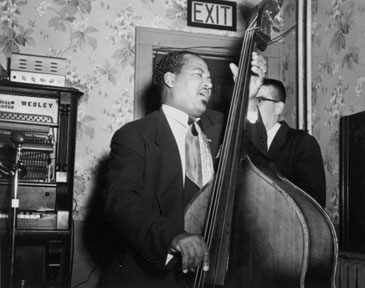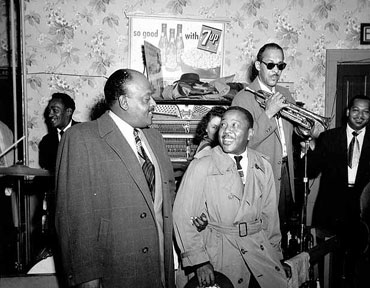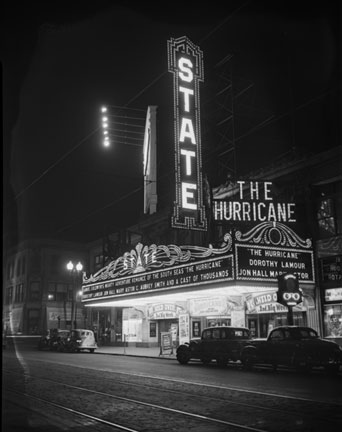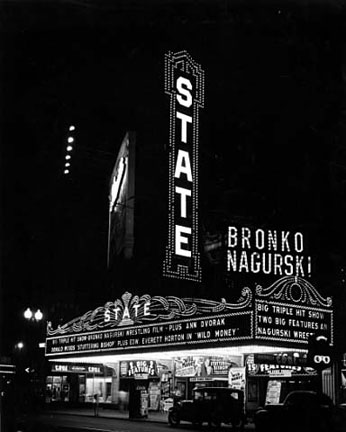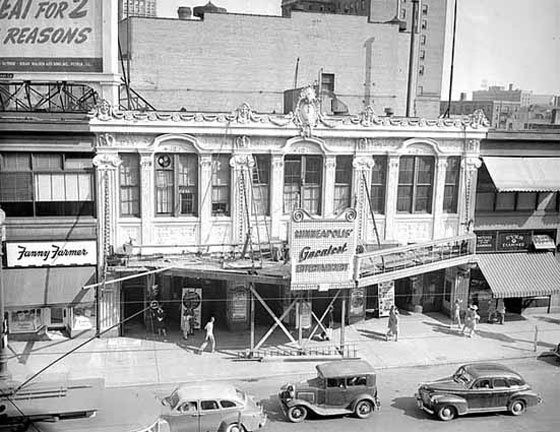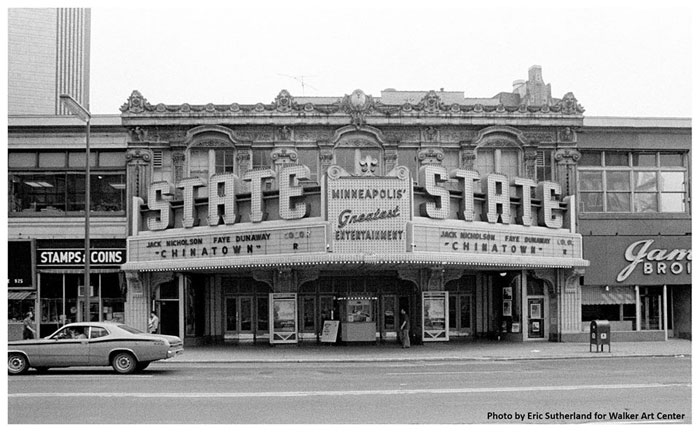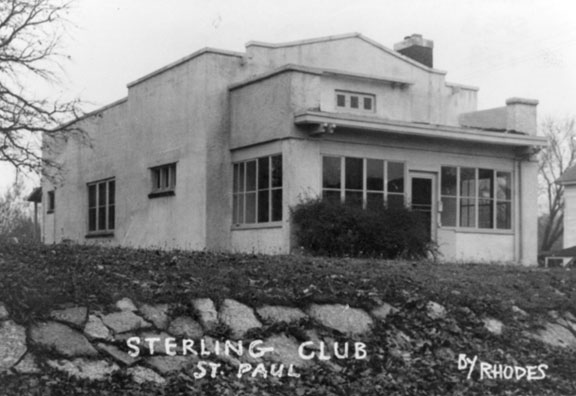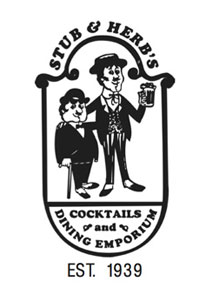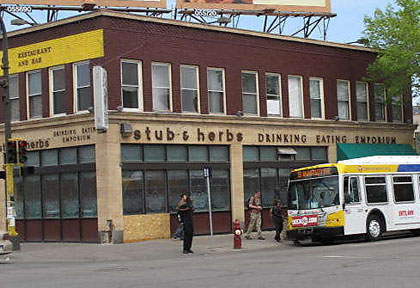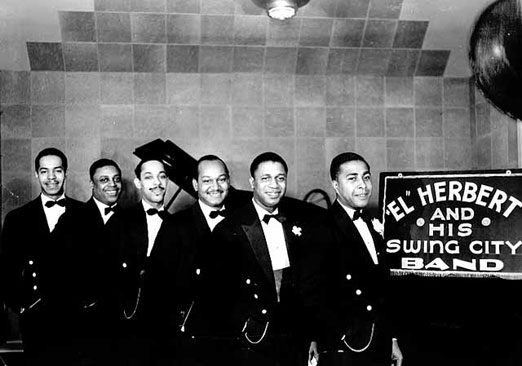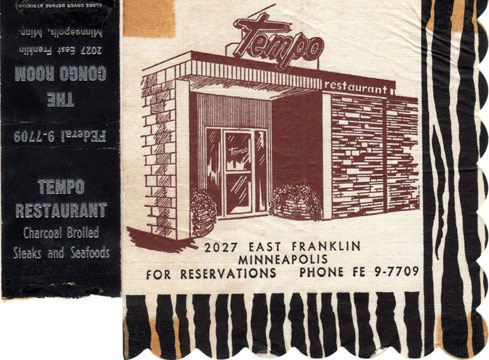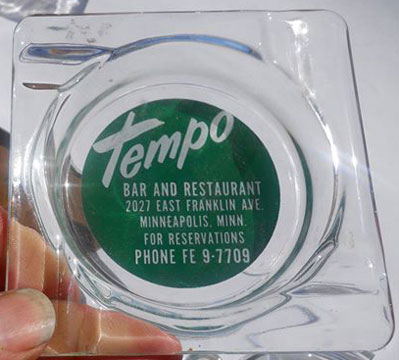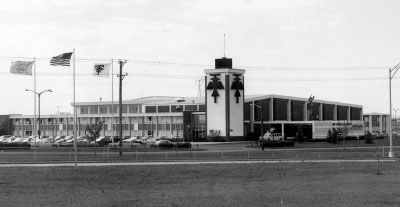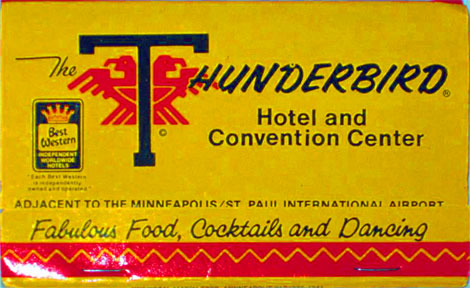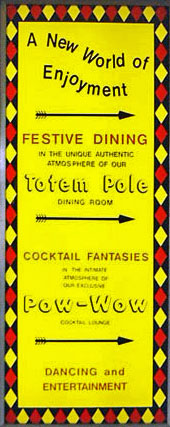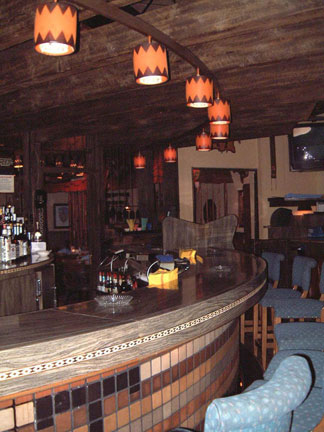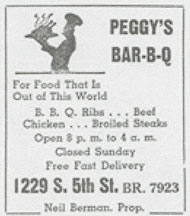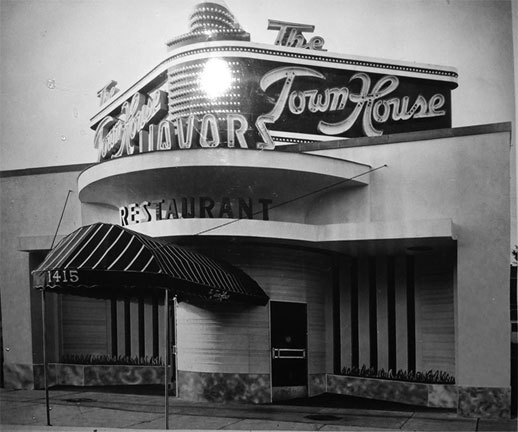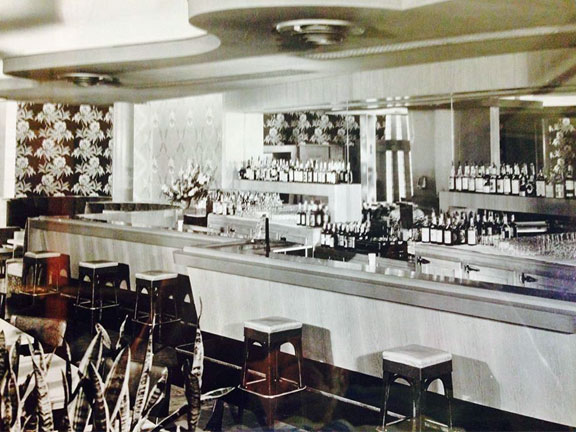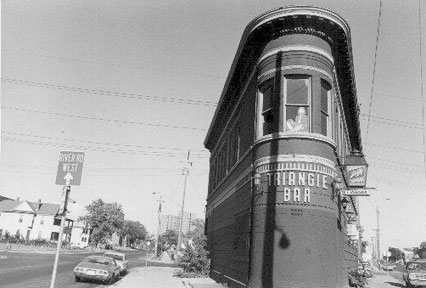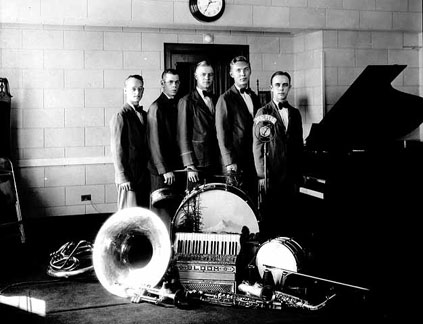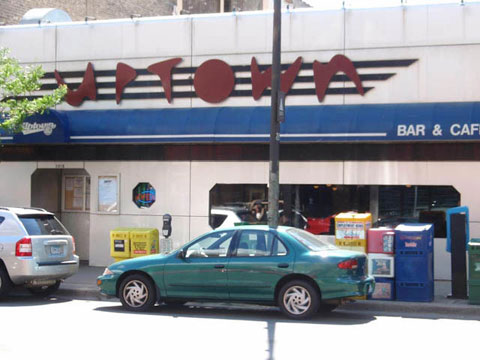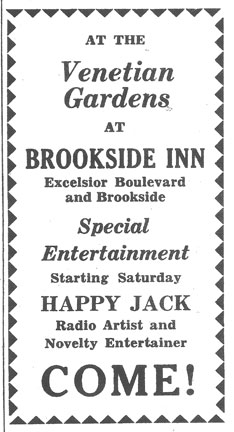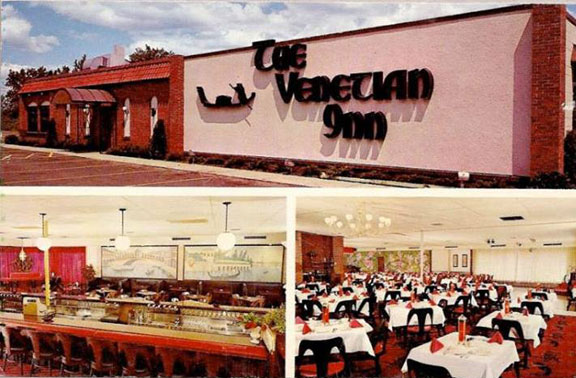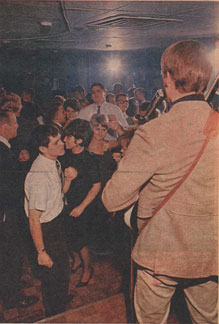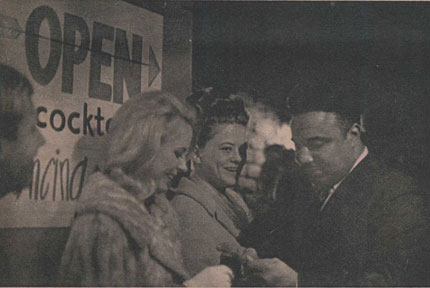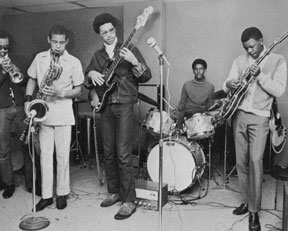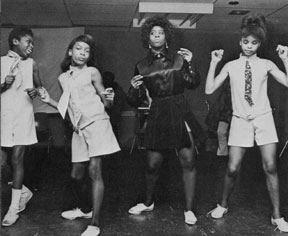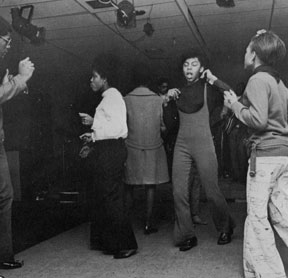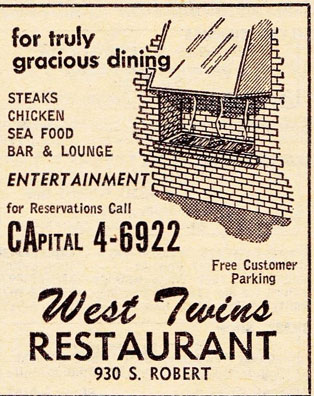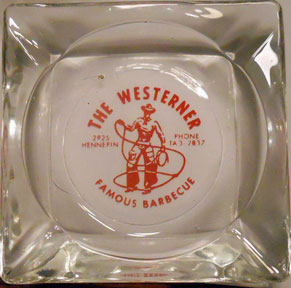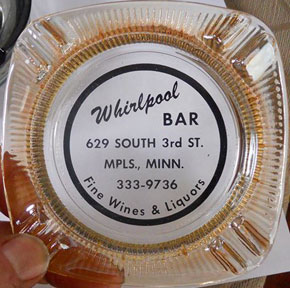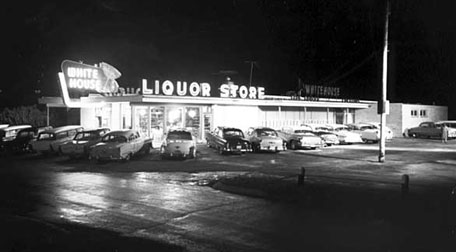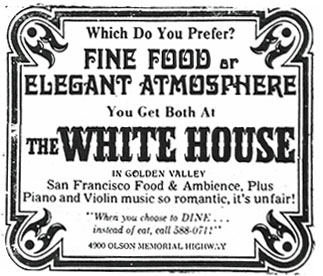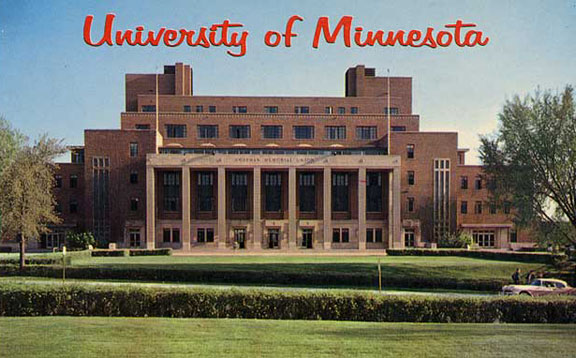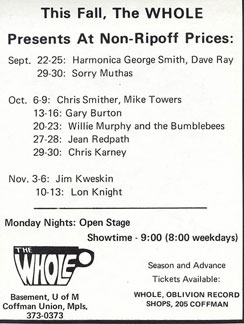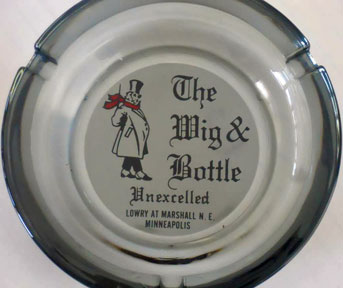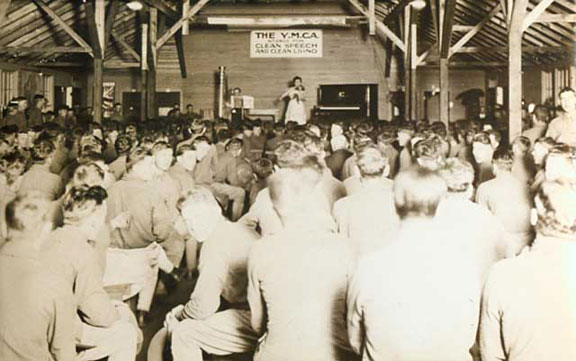 |
|
This is just one page of my website, Twin Cities Music Highlights
There were tons of dance and music venues in the Twin Cities and
the surrounding
area. If you have any to add or corrections to make, please
contact me! SOURCES
The Minnesota Historical Society has copies of an apparently short-lived newspaper called the Republican Register, dedicated to electing Dewey for President. The copies run from 1941-1944 and for some reason included ads by just about every bar in the Twin Cities and surrounding area. No explanation for this, but it is a treasure trove of information for venues with live entertainment.
And, of course, many of these photos and information come from the folks on Facebook. I try to get permission to quote people and give credit on the photos. If I've grabbed one of your photos and not given you credit, please let me know!
PROTOCOL
If there were more than one club at a single location, I have alphabetized them with pointers to the original club. Thus, if the Huddle existed before Arturo's, the entry for Arturo's would say "See the Huddle" and any information about Arturo's would be under the Huddle. Hope that's clear.
Also, hotels are not listed under H but under their other name, thus Nicollet Hotel, not Hotel Nicollet.
Acme Palm Garden, St. Paul - jazz venue
Addison's Bar and Lounge, 1504 E. Franklin, Minneapolis. Don't know anything about this place, but I found this matchbook online, so what the heck? Besides, doesn't "lounge" call for a lounge singer?
Adolph's, Robbinsdale - jazz venue
Alary's: See Heinie's
Alkali Ike's Eatery and Saloon was on Highway 101 just north of the 7-Hi Shopping Center in Minnetonka. In July 1973, Jody and the Jonquils performed nightly in the Saloon: "Their original dance routines and their variety of pop tunes, country western music and show tunes have entertained thousands of audiences." Another ad was for Delores Del-Rae and Her Vitamin E Trio - I'll bet that was a fun act!
Allen's Tavern, St. Paul - jazz venue
Alpine Room: See the Chalet.
The Alps: 801 E.78th Street in Bloomington. A new (1999) building
sits there today. Was originally supposed to be part Dixieland and part
Rock, but the Dixieland was quickly dumped. Had three levels and was
frequented by stewardesses, pilots, and other airline folks due to its proximity
to the airport. In 1967 it had a "super soft" sound. The
Jokers Wild played several dates there, as did Danny's
Reasons. The Insider reported that as of December 1968
it had been closed for many months because it was too noisy
for an adjacent trailer court. Alvin Burlesk: Not sure a strip joint belongs here, but their ads appear in every paper, including the Minnesota Daily! One from December 1944 in the Republican Register advertises a show with a cast of 40, including Jessica Rogers and Jack Diamond. The ad doesn't give an address but seems to indicate the name was Alvin and Hirsch's. In 1952 Dagmar was all the rage.
Ambassador Motor Lodge, Highways 100 & 12 in St. Louis Park. The Ambassador (1961-1991) had three possible music venues:
This is the entrance to the Kashmiri Room and a poster with entertainment info for the Manders Lounge.
Ames Lodge, Number 106 of the Improved Benevolent and Protective Order of Elks - See Elk's Lodge
ANDY'S
This building at 14 North Fifth Street housed many venues over the years.
ANGLESEY
The Anglesey Cafe/Motor Lounge was at 1331 Hennepin. Anglesey is an island off the north west coast of Wales. From 1940-44 Earl Irons' dance band was the house band, playing a little jazz. An undated and unsigned memo (probably from the mid 1940s) says that the owner of record was the Minneapolis Bridge Co. but suspects that Tommy Banks may have held the deed. In March 1946 owner George Sampanis was charged with discrimination by two black men who were not served at the bar. Each filed a $500 suit against Sampanis. The Minneapolis Spokesman reported that others had contacted the paper with complaints about discrimination. In 1963 it hosted folk groups like the Countrymen and the Jolly Swagmen, but Will Jones noted that the owners were looking to kick out all the rock 'n' roll and folk music. In 1970 there was the Regency Room for dining and dancing and the Surrey Room Piano Bar.
From the collection of Mark Youngblood
The Apartment: See the White House below.
Apex Hall: 635-55 Sixth Ave. No.; jazz venue dating from 1933.
Aragon Ballroom: See Dreamland Dancing Pavilion below
Arcadia Ballroom - See Dreamland Dancing Pavilion below
Arcadia Gardens/Dance Hall, 47 - 8th Street at Cedar, St. Paul.
1922 photo courtesy Minnesota Historical Society
Archie's, 11th and Excelsior Ave., Hopkins. 1971: Dance to your old time and new favorites to Chris Kober and His Orchestra. Also Country and Western by the Big River Ramblers.
Arthur's Four Seasons, 2300 University Ave. NE, Minneapolis. Jazz venue; in 1970 it featured entertainment in the piano lounge.
Artist's Quarter, 26th and Nicollet, owned by Bill Warner.
Arturo's: See the Huddle.
The Athletic Club in Minneapolis was a place to hear dance bands.
The Attic was in Chanhassen, 1972
B&R, St. Paul - jazz venue
The Bamboo Room: see White House below.
The Bank: 770 W. 7th in St. Paul. Changed
from the Cabaret in 1969, owned by Bob Mecay. THE BARN
The Barn was located south of Highway 494 and east of Highway 169 (then 18) in Eden Prairie. It was variously known as the Purple Barn (Phil Kitchen says to sound more psychedelic) and the South Barn. The front at least was painted purple. Jim Mattox says: "I used to work with a local band called the Soul Package in the seventies. We played at the Purple Barn regularly.
The Caretakers at the Purple Barn, winners at a Battle of the Bands in 1969, sponsored by Len's Guitar City. Photo courtesy Bob Burtis, shown on keyboards
Another contestant at the Battle of the Bands was a band called Flight 69, show above. Photo courtesy band member Harry (Eddie) Eiss
Photo of the South Barn below courtesy Susan Shallman Anderson.
An item in a December 1968 Insider said that Bill Roslansky formed Young America, Inc. and purchased the South Barn with fellow shareholders Stuart Swartz and Stan Taube. In 1969 it was owned by Roslansky and Timothy Millette and was a teen club. Bruce Glewwe remembers: "That whole area was probably farm land then. Went there only once…pretty freaky for a couple 16 year old guys from South St. Paul. The 'black lights' inside scared us off and we didn’t go in. We probably didn’t have the dollar or two it would have cost to enter either." When the teen clientele started to drop in 1970 the Barn closed on Fridays. By 1973 it was the only teen rock club left, open only on Fridays.
North Barn: According to the eye witnesses on Facebook, there was another Barn in Plymouth, on Highway 18 (now 169) and Bass Lake Road, on the north shore of Bass Lake. It was apparently a rough place, with chicken wire to protect the musicians from projectiles from the appreciative audience.
In 1960 there was a Barn Restaurant on County Road 18 and 42nd Ave. North, with dancing Saturday night to the Aristocrats.
Bartenders' Club, 32 South 6th Street, upstairs. After hours jazz and gambling hangout.
Bashland: St. Paul dancehall (barn) owned by WLOL DJ Throck Morton.
House band the String Kings.
Bellanote: Sixth and Hennepin
Belmont Supper Club, 615 University Ave., St. Paul, 1953-74. Go-go girls in cages in 1965. Owned by the group the Belmonts (not Dion's Belmonts).
Big Daddy's - See Town Hall Cafe.
Big Ten Bar, U of M Campus
Bill's Inn: 1-1/2 miles east of Excelsior on Excelsior Blvd. In about May 1926, William L. Millington of Minneapolis bought the Vine Hill Cafe. Bill had previously been in real estate. Ad below dated May 21, 1926. Possibly a "chicken shack" so prevalent during Prohibition; an excuse for a set-up place? That October he added a Benzo gas station.
Bill's Place, 5410 Wayzata Blvd, Golden Valley. Bill was William J. Schindler, who went on to own the Boulevard. A relative describes him as a real estate investor who moved around a lot. 1939: Dancing and An Enjoyable Time. Nice menu: Bar-B-Q-Ribs, Chow Mein, Home Made Chili, Hot Tamales, and Glueks on Draft!
Billybud's Bar, 1301 Washington Ave. No. at Plymouth. Country bar in 1973-74, with house band Freddie Haas and his Golden Nuggets.
Bimbo’s Old Tyme Saloon, 243 Cedar Ave. - Seven Corners on the West Bank. In 1967 it was open to teens Wednesdays through Saturdays. In 1967 it featured Sing Along Music Tuesday through Sunday and Old Time Movies on Monday nights. There was a fire in April 1968. It’s now the Theater in the Round. Did it move to Coon Rapids by 1973?
The Black Angus had a piano bar that became a disco - see the story up in 1963. Sue Earle performed nightly in 1969.
BLACK SHEEP CLUB
The Black Sheep Club, 901 Marquette, was supposed to be one of a chain of members-only "Key Clubs" that required patrons to pay a sometimes hefty fee for the privilege of admission. In February 1963 the club held a series of Open Houses, advertising their three rooms:
In June 1963 Will Jones wrote about this place as if it had been there awhile. The Four Lads were performing on June 5.
An ad in the July 1963 Select Twin Citian is pretty cute so please bear with me. It's hand written and all typos are intact here:
The project was undercapitalized, and two employees sued for back pay and took the furniture, which ended that.
Subsequent clubs at the location were:
Bloomington Roller Rink: 94th and Lyndale Avenue So. Blue Eagle Tavern, 1105 - 26th Ave. No. Not sure if this had any entertainment, but here's a story in case it did. In March 1968 a bomb was thrown into the entryway, blowing an 11-inch hole in the concrete of the building's basement, blowing the door off its hinges, and breaking its front windows. Eight idiots were arrested and charged, including three women; they told police that they planned to form a local chapter of Hell's Angels. The bombing followed an earlier brawl at the bar, and co-owner Erling G. Nelson and two young men injured in the fight reported they had received threatening phone calls.
Blue Heron, 6810 Lake Drive, Circle Pines, 1974.
The Blue Lantern was a night spot on Sixth Ave. No. in the 1920s.
The Blue Moon Cafe and Club was on the north side of Sixth Ave. No. between Bryant and Sumner Place.
THE BLUE OX
The Blue Ox was at 918 Third Ave. So. in Minneapolis, opening in March 1963 with "no strippers and no twisters." Ads promised "Floor Shows! Dancing!" Kitty and Her Aly Kats were the featured performers in 1963-64. A co-owner was Ockie Berman. Another owner was David P. Aronsohn. 1969: Dining, dancing and floor shows such as the Jolly Jacks and Fraser & Nevers in the main lounge. In the Blue Room (where the swingers are), sing along to Judy Moen and Valerie. The Blue Ox was around until at least 1978. "FACT: They had a few Booths back in the corner that had telephones in them. I knew a couple Bookies that took their Action there!"
1966
Boogie Woogie Club: U of M, early 1940s.
Booker T. Barbeque Ribs, 381 Rondo at Western, St. Paul. Owned by Mance Ellis and named for his son.
1960 photo courtesy Minnesota Historical Society
Bootlegger Sam's was above Mama D's Italian Restaurant in Dinkytown.
The Bottle Inn was on 78th Street in 1940, owned by Carl Miller. "Dancing Every Nite." THE BOULEVARD CAFE, MINNEAPOLIS
The Boulevard Cafe was located at 533 Dupont Ave. near Sixth Ave. No. May have been a converted store. Fame confined to the 1940s. Stebbins tells of a famous session in 1944 when some members of Duke Ellington's band showed up after hours and jammed until 10:00 the next morning. Another night Ellington and Count Basie were in town on the same night. The jamming started at about 10:30 pm and so many musicians joined in that there wasn't nearly enough room on the little bandstand. Stebbins quotes from Jim Bennett, "Jazz in the Twin Cities," Twin Citian, Vol. VI, no. 7, March 1964, p. 17:
In March 1945 proprietor Elmer Lewis and William L. Kelly were indicted by the Hennepin County Grand Jury on charges of purchasing stolen whiskey. They pleaded not guilty and were released on $1,500 bail. No details on the outcome.
THE BOULEVARD CAFE, GOLDEN VALLEY
Boulevard Cafe, 5530 Wayzata Blvd., Golden Valley. The Boulevard was owned by William J. Schindler, who had owned Bill's Place, at or near the same spot. 1945: Dancing Every Night. Iver Stanger - Al Hall. Probably an early jazz venue. 1963: "Ours is a humble place, but we think we have something to offer you." 1967: dancing nightly to the Richard Conrad Trio. 1969: New Tyrol Lounge. 1973: Dance to the Skylarks in the main dining room every Friday and Saturday night, and the "Carnegie Hall of Piano Bars," frequently featuring my fourth grade music teacher, Judy Moen. The Boulevard was torn down for construction of I-394. Ad below from 1958.
The Boulevard Dance Hall, 1929 N. Rice Street, St. Paul
Rosemary Ruffenach writes:
1929 N. Rice later became something like Curtis's Place? Cortls' Place?
In September 1955 it went under new management and became Club Reservoir, featuring entertainment Fridays through Sundays.
The Bow and Arrow Club was located just north of First Street in Mendota starting in early 1941. "In the early 1950s the Bow and Arrow became a modern jazz stronghold featuring the Bob Davis Quartet and Rook Ganz's band. There were also Sunday afternoon sessions which primarily attracted local musicians. A couple of years later the owner invited Doc Evans to take over in an attempt to bring Dixieland back to Mendota. For the occasion the name was changed to the Rampart [Street] Club, but the venture was not successful. A few years later it again became the Bow and Arrow Club, occasionally featuring a jazz group." (Stebbins)
Bowery Tavern and Dance Hall: 9400 - 6th Ave. No.
(Highway 55 and County Road 18), Golden Valley. Live
music and dancing on Friday, Saturday, and Sunday nights.
3.2 beer and setups. Lee Lofstrand, new owner, May 26,
1960.
Brady's was on the corner of 6th Street and Hennepin Ave., on the site where a sandwich shop and two different restaurants had been. It opened in 1936 and had intermittent jazz entertainment, including the Hall Brothers Dixieland Band. Became Shinder's Bookstore. Butch Thompson posted this photo:
The Brave New World (not Dudley Riggs) was in Cambridge, Minn., owned by Duane Huehn and Paul Malasky.
The Break was a folk spot at Oak and Washington in 1962.
Bridges Nite Club, St. Paul - See Stumble Inn
Bright Spot: 702 Olson Memorial Highway, 1948. Good Food - Latest
Records - Arcade Games - Make Your Own Record. Broken Drum: 327 Cedar Ave., Minneapolis - coffee house/jazz venue, 1967
The Bronco Bar was in Chanhassen. "Bulletin: Frontier in Chanhassen Announces the Opening of the Bronco Bar and Frontier Wines and Spirits (Package Store) For Your Convenience and Pleasure. MORE TO COME. Just the Beginning of a Great New Complex. Open July 19, 1968." (Ad in Minnetonka Sun) In the mid-'70s we would endure the country band and then dance our asses off to the rock they played during the intermissions.
Brooksville Opera House, Highway 13, Prior Lake. In August 1969 the bands featured included Gary Kent, Guy DeLeo, Lexie Johnson and Buddy White.
Bucky's
THE BULL PEN
Ashtray above from the collection of Mark Youngblood. Undated photo of Harry Blons from Minnesota Historical Society.
August 1962
Bungalow, 6221 - 56th Ave. No., 1967 - 1969. Nightly organist, weekend
piano lounge. Bunny's, 4730 Excelsior Blvd., St. Louis Park
Bursch's, 17 - 8th Ave. So., Hopkins. 1969: Dancing to the Sociables. 1970: Live music and entertainment (and art) in the Gallery Room; vocalize and fraternize in the tuneful Blue Note piano lounge. Still there in 1974.
From 1960 ad in St. Louis Park Dispatch
Buster's, 111 So. 6th Street in Minneapolis, was described as a popular place for "young swingers" in 1965.
Cabaret Show Lounge, Minneapolis: See Foreman & Clark Building.
Caesar's Bar - West Bank
Cafe De Lisa, 602 Lyndale Ave. No. Advertised as "Something Different" in September 1938, with "Chinese Foods and Good Entertainment." Also see Club Delissa.
Cafe De Luxe, 1329 So. Fourth Street, Minneapolis. Opened September 17, 1939, owned by Tommy and Harry Lewis. Opening night entertainment by Rook Ganz and His Entertainers. Chicken and Chinese Dishes their specialty - Come out and have a grand time.
The Cafe Expresso, at 2605 Hennepin Ave., was included as a coffeehouse/music venue in a 1967 newspaper list.
The Cafe Extraordinaire, 2933 Nicollet Ave. So. in Minneapolis, the former site of Magoo's. It opened in late 1970 and was owned by Bobby and Doris Jackson. They started with a Jazz Festival, bringing in such big names as the Elvin Jones Quintet, Joe Henderson, Eddie Harris and his Quartet, Kenny Burrell, and Freddy Hubbard. The people just didn't respond, so in December 1970 the format switched to soul, featuring acts such as Zulu and Showtime I and II. In 1971 there was some sort of "Buddy Miles imposter fiasco" that basically put them out of business.
The Calhoun Ballroom was at Lyndale and Lake in 1944. Probably the same location as one or more entries here. The Red Pepper Orchestra provided a smooth dancing program that December.
Calhoun Beach Hotel, Minneapolis. Site of many University of Minnesota Greek dances.
Camelot, 5300 W. 78th Street. This really was a medeval castle surrounded by a moat. Norwegian Hans Skalle opened Camelot in 1964, bringing French cuisine to the Twin Cities. Camelot was awarded the Holiday Magazine Certificate for Dining Distinction 1966, in less than a year of operation and again in each ensuing year. Continental cuisine, luncheons and dinner daily (closed Sundays/Holidays), buffet luncheons week days. Venues included:
The Camden Bank building was built by Odd Fellows Highland Lodge #99 in two parts: a two-story building in 1910 as their IOOF Lodge, and the three-story building in 1920 as a bank. Throughout its life it has also housed a post office, mortuary, pool hall, and professional offices. It is one of the only remaining buildings in the neighborhood thanks to I-94 construction.
Camden Bank, 1928, courtesy Minnesota Historical Society
Camel's Club, 520 Hennepin Ave. Illegal after-hours
club, 1934-36, where jazz musicians
would sit in after hours. Canterbury Inne and Pub was at 6481 University Ave. NE, Fridley, 1969-74 CAPP TOWERS
Minneapolis:
Capp Towers Motor Hotel, 1313 Nicollet, Minneapolis. This hotel cost $6.5 million, had 350 units, and opened in March 1963. The Minneapolis hotel had several venues:
The photo above appeared in Life Magazine on July 26, 1963 with the caption: "In the domed cocktail lounge on top of 15-story Capp Towers, motel guests can enjoy a view of Minneapolis skyline. A revolving stage in the center of the circular bar, here ornamented with a statue, can be raised or lowered. This downtown inn has accommodations for 800, an underground garage, three dining rooms, four bars, a rooftop pool enclosed in glass, exercise rooms and a sauna."
The hotel apparently went through several iterations:
It is apparently still owned by the Capp family.
Capp Towers St. Paul:
The Capp Towers in St. Paul, at 77 - 9th St. E. at Minnesota, has eight stories and was built in 1959. It is remembered for its Happy Hour. John Mannillo reports that "The owner of Capp Towers for many years was Earl Scott. His manager was George. I can't remember his last name. I believe George now manages Hazeltine Golf Club. They were big hockey fans during the Fightin' Saints era. Earl, better known as Scotty, owned an old fire truck which he gave rides on whenever he could. I was the real estate broker who represented the Union Gospel mission (I think in the late 1980s) on the purchase of the building from Earl Scott. They purchased this property which was mostly under utilized and in need of substantial repair, for the now Naomi Family Center." The Naomi Family Residence, a residential program for women and women with children, provides food, clothing, 25 life skill classes, and Bible studies and is operated by the Union Gospel Mission.
Captain's Galley: see Downtowner Motel.
Captain's Table: Ramada Inn, 494 and France. 1973 featured the Johnny Ricco Show.
Caribbean, Tonka Bay, Lake Minnetonka. See Curley's Caribbean.
Caribbean Room, Capp Towers, Minneapolis (see above).
CASABLANCA/GAY NINETIES
The Casablanca had become the Shanghai House restaurant by 1947.
In 1948 the bar had become the Gay Nineties Theater Cafe and Cocktail Lounge. The Gay Nineties was a strip club that employed jazz groups. In 1952 it advertised Eddie Bach and His Jentlemen of Jest, 5 Outstanding Vaudeville Acts, and the Gay Nineties Girls! On August 11, 1975, the Minneapolis Star reported that the Gay Nineties would close as a strip-tease bar as of August 23 and open on September 4 as a disco. "Richard Gold, owner and manager of the Gay Nineties, said the change to recorded rock music will mark the end of 27 years of stippers and live entertainment at the nightclub. 'The romance of the stripper is gone,' Gold said. He said the proliferation of pornographic filsm and adult book stores has diminished interest in live strip-tease performances." Gold said the name and the period atmosphere would be preserved, would be a "jazz discotheque" and would attract "the campy crowd that's on the street today."
1958 Photo courtesy Minnesota Historical Society
Casa-Loma, 1830 E. Franklin at Cedar. February 1942: Ward Mitchell, proprietor (also owned Ward Mitchell's Beer Tavern). Not sure the Casa-Loma had entertainment, but with that name it certainly should have!
The Cascade 9, located at 829 Hennepin, hosted the Del
Counts. Harry Blons and Band in 1969. Owned by Jerry Agar in
1970-72. In 1970 it was advertised as the Cascade 9 Supper Club.
When Duff's burned down in 1977, owner Bob McNamara moved it to this location.
Del Counts at the Cascade 9. Photo from the Insider, September 1976. Thanks, Bob Burtis!
The Casanova Lounge and Cafe, at 43-45 South 4th Street in Minneapolis, was owned by Tommy Ewing and Kipp Hale in July 1944 (across from Maurice L. Rothschilds). An undated memo that lists several places that are suspected to be owned by Tommy Banks states "last recorded owner Thomas W. Banks and Harry Shepard, 1316 Nicollet Av., which is the location of the coin-a-matic machine company and of which he is the manager. Shepard's resident (sic) is Maryland Hotel, 1346 LaSalle Av. The first state band of Wabasha, Minn. holds a $8,000 mortgage on the building."
Casey's Saloon was in St. Paul in 1973, and made the news when it hired a male stripper named Romulus. Owner Glen Triviski felt women should have their fair share. On April 8 the St. Paul City Council ordered the club closed because the go-go-dancers were allegedly performing indecently. A new ordinance was passed allowing dancers to be "covered with transparent or opaque clothing." Romulus, a/k/a Gary Watkins, was a 23-year-old med student working on a degree at Indiana State University. Although he had been touring the country, he sometimes forgot to unbutton his shirt. "And when that happens, he says, sometimes a button pops off." (Randy Furst in the Minneapolis Star). 'Spose there's a Dr. Romulus out there somewhere?
Casino Royale - Shorewood
Plaza Shopping Center. Formerly perhaps another
Hullabaloo rock club. Country place in 1973, owned by
Lee Silverton CASSIUS
George Donnay and His
Original Aces at Castle Royal, 1935. Photo from
Minnesota Historical Society. CC Tap is at 2600 Lyndale Ave. So. in Minneapolis, at least from 1967. In '69 it was owned by Pete Boosalis and bands included the Vacant Lot and Matinee. Photo below from Minnesota Historical Society.
Cedric's was owned by WCCO radio personality Cedric Adams. It was located on Highway 100 at 50th Street in Edina. The restaurant featured music occasionally and Adams occasionally sat in on drums. The restaurant failed for lack of a liquor license.
Somewhere in here is supposed to be the Century Music Hall, 5 So. Fourth Street, Minneapolis, 1904. According to MHS, this is Fourth Street from First Avenue South to Hennepin.
Chain Link: St. Paul country bar, 1973-74.
The Chalet, 3516 No. Lilac Drive (Highway 100). A June 1963 ad called it "The Northwest's newest and most distinctive supper club." The Playgirl Club in the Alpine Room hosted several national acts in 1963, including:
In 1969, the A. F. of M.'s, featuring Doug Masters. Around until at least 1974. Chanhassan Frontier - apparently had three venues in 1969:
Charlie's Cafe Exceptionale: Seventh Street and 4th Avenue South. 1933 to 1982. 1970: Entertainment nightly in the cocktail lounge; also a piano bar. Photo below from 1980.
Chateau de Paris - See Dyckman Hotel.
Chatsworth Inn, 979 Rondo at Chatsworth, St. Paul CHICKEN SHACK
During Prohibition there were lots of so-called "chicken shacks," which were often fronts for speakeasies. These photos from the Minnesota Historical Society show some folks in Minneapolis who worked at such an establishment in 1930. How could they not have had music? The notation in MHS's files say that this was located at 629 Sixth Ave. No., a hotspot of action in 1930. But notes on the frames of the pictures say "That was South Minneapolis."
Chimney Sweep Lounge: See McGuire's
CHISAGO CITY COMMUNITY CENTER
Hey, it's still there in 2014!
Chick's Steak House, per Kenneth Stuart, "was a popular watering hole and I was there only once and that was to see some of the Woody Herman Band sidemen come and sit in with the house band. Seems that was the thing to do after name bands closed at other venues, namely the Prom Ballroom. Saw Woody Herman there the night I went to Chick’s. Woody, at that time, had the Four Brothers sax section with Stan Getz, Zoot Sims, Serge Chaloff and Herbie Steward; Bill Harris on trombone; Billie Bauer, guitar; Don Lamond, drums; Ralph Burns, piano; Chubby Jackson, bass and Davey Tough on drums. I can’t tell you how many of the sidemen won the Downbeat Jazz Poll that year but the band totaled seven winners within a short span of years and they were fantastic. I say fantastic and back then it meant something; not just another term like young people use today. The word awesome was not in our lexicon then. had a house band and was also the site of after hours jamming with national acts that were in town such as Woody Herman's band in the '40s."
Chubb’s Ballroom was located in Eagle Lake, Minnesota. Advertised in 1959 were “Teen Age Hops” at the Spring Lake Ballroom (west of Prior Lake on Highway 13), featuring the Jolly Musicians.
The building was replaced in 1965.
The Cinnamon Cellar was on Highway 10 in Anoka, open to
teens on Saturdays in 1967. Classic Motor Company, 4700 Excelsior Blvd., St. Louis Park, June 1979 - March 2001. Click on the link for the story of this and the other clubs at this location.
Club Bengassi, 707 Olson Memorial Highway. Opened August 1943 by William "Bill" Freeman - "For an evening of fun." This site had previously been a hardware store, beauty salon, and Bill's Smoke Shop. In March 1945 Freeman was fined $100 because a pinball machine on the club premises paid off nickels instead of trade tokens. The machine was found by Oscar Eidern, new Minneapolis police morals squad chief.
Club Delissa: 607 Sixth Ave. No. September 1939: You are invited and always welcome; "Where the Crowds Go"
Club 47: University Ave. in Fridley, 1970 Club Kongo: See Cotton Club Chicken Shack.
Club Morocco: See Cotton Club Chicken Shack.
Club 78 was somewhere on 78th Street, next to the Bloomington Drive-Inn. The Twin City Tenpin of November 1964 included an ad welcoming bowlers; the ad shows there was live music and dancing every Thursday through Sunday and that the club had a capacity of 200.
Club 13: Nicollet Ave. jazz venue that booked Jerry Berry's Quartet in 1959.
Club 350
Coachmen Inn The Coffee Break, 313 Oak Street, next to the Oak Street Cinema in Stadium Village. Owned by Mel Lasky. Rivals of the 10 O'Clock Scholar in the '60s. January 1963 ad in the Select Twin Citian says "'Bohemian'" coffee house atmosphere in a converted frame house next to the Campus Theater. Dusty wooden floors, fish nets, stained glass windows. Authentic Negro blues performed by Dave Rey (sic). Friday and Saturday 9:30 to 1:30 am." Became the Lotus Restaurant.
The Coffeehouse Extempore existed in five different
locations on the West Bank over the years and closed in
about 1987.
Coleman's in Highland, 2239 Ford Parkway, St. Paul. 1963: Musical Entertainment. 1969: The Internationals Quartet.
Coleman's Stage, Bar and Cafe was at 444 Wabasha in St. Paul: jazz venue in 1944.
COLISEUM - MINNEAPOLIS The Coliseum Ballroom is located in the (Lake Street) Coliseum Building at 2708 E. Lake Street. The 70,000-square-foot, five-story Art Deco building was built in 1917 as Freeman's Department Store. It had a huge ballroom with high ceilings on the second floor; ads can be found for dances in 1937 and perhaps even further back. In 1967 it had Old Time Dancing. In 1968 it was age 28+ "Smooth Dancing." The large building held many businesses, such as Podany's Office Furniture, doctors' and dentists' offices, rehearsal space for music groups. Still a music venue in 1974.
Minnesota Historical Society
1920
COLISEUM - ST. PAUL
The Coliseum Pavilion/Roller Rink was at 449 Lexington Parkway at University, St. Paul. With 25,000 sq. ft. of dance floor, it hosted dance marathons in the 1920s and '30s. Wally Erickson's Coliseum Orchestra was the house band for most of the 1920s and early '30s. It was either also or became a roller skating rink until it closed in 1958, owned by Johnny Lane.
Wally Erickson's Coliseum Orchestra, @ 1925. Photo courtesy Minnesota Historical Society
1927 photo courtesy Minnesota Historical Society
Coliseum Roller Rink Band from 1927, courtesy Minnesota Historical Society.
The Coliseum was part of the left field fence for the Lexington Ball Park and patrons could often hear the sound of baseballs hitting the roof. 1930 MNHS. Thanks, Rick Schlosser. The ballpark was demolished in 1958 and the site became a Red Owl Grocery Store. Presumably the Coliseum went at the same time.
Sue Tad Nelson's father, Sam Spector worked at the St. Paul Coliseum - Sue provided the two photos below, with her father at the left in both of them:
Colonial, Mendota
Colony Club, downtown St. Paul: See Miller's Club.
Colony Club, White Bear Lake: In December 1938 the club was described as one of the most exclusive swanky night clubs in the Northwest. It was located 13 miles from Dale and Rondo Streets, just a half hour drive on Highway 61.
Commodore Hotel, St. Paul: Home of the Wolverines.
Community House, Lake Minnetonka. Site of dances in the Excelsior area in the 1920s.
Conroy's. Musical Entertainment and dancing, 1963.
Conway's Dance Emporium - See Dreamland Dance Pavilion below.
Cooks' and Waiters' Club was an after-hours jazz and gambling house, probably on South Sixth Street, Minneapolis.
Cooper's West was at 1209 W. 7th in St. Paul, 1972-74
The Copper Hearth - see North Star Inn.
Copper Squirrel, 413 Hennepin, Opened August 1963. On September 13 Will Jones reported that the new place had
At one time the Copper Squirrel was owned by the father of actress Kelly Lynch. "The Copper Squirrel became a gay bar/drag bar in the '70s called the Sun Disco."
1970 photo from post on Historyapolis Facebook page
Ashtray and money clip from the collection of Mark Youngblood
Cork & Fork, 16 So. Sixth Street, Minneapolis. Swing Lounge, 1970.
COTTON CLUB
The Cotton Club was a "Chicken Shack" located at 718 Sixth Ave. No., Minneapolis, 1924-28. One account says it was run by Ben Wilson, who also owned the Gin Mill and the Spot. A shooting on the morning of February 3, 1928, injured two policemen who were breaking up a fist fight, which was started when Jack Sackter allegedly "made a remark to a Negro entertainer." Also injured was Kid Cann, according to news accounts, although they gave Kid's real name as Harry Bloom, which is actually Kid's brother - which was it? Whoever it was was held without charge for days and then held for trial, accused of participating in the gunfight. Four men were eventually charged in the shooting, including Verne Miller, a former sheriff from Huron, SD, who had served a prison term for embezzling county funds and was carrying a large amount of money when the police came to stop the fight. A manhunt ensued for Miller and two others, with 1,500 fliers distributed, mostly over the Northwest.
Chicken shacks were common during Prohibition and this one had chicken and dancing and fighting all night. At the time of the Cotton Club Shooting a City Alderman proposed an ordinance requiring that curtains and screens be removed from all chicken shacks, so as to permit a view of the interiors from the street. In May owner Horace Pierson was denied renewal of his restaurant and dance hall license. Shortly afterward, Wilson opened another place across the street.
The place became:
Cotton Club, St. Louis Park: See El Patio below.
COVERED WAGON
There were two Covered Wagons, at least in November 1943: In Minneapolis it was at 114 So. 4th St. at Marquette (first opened two doors north). In 1956, music by Loren McNabb and his band. "Largest and Finest Dance Floor in Town." An undated ad in a Minnegasco cookbook touts its 20th anniversary. The house entertainment was the Cow Hands Band, but they are mentioned on both the Minneapolis and St. Paul matchbooks, so maybe there were two of them. On the menu were Mallard Duck, Ring Neck Pheasant, and Hungarian Partridge, but you had to call ahead in the morning so they could go out and shoot it, I guess.
COZY BAR - MINNEAPOLIS
Matchbook image thanks to the Match King, Alan Freed
In the late '60s it was a major venue for R&B acts (Mojo Buford was a frequent performer) and one of the few black-owned bars in Minneapolis.
In July 1972 it was one of at least three bars that was ordered to close by a group of 20-25 black youths, one reportedly carrying a high-powered rifle. Manager James Gibson said the youths told him to close down the bar and that if he didn't "somebody would get hurt." Around that time the bar was raided by police at 2:30 am and customers were still there, in violation of the 1 am closing time law.
The Cozy was still there in 1974 but was lost due to construction of I-94. Read the story in Twin Cities Funk & Soul, page 29-30. The photos below of the bar in the late 1960s were provided to Secret Stash by Jimmy Fuller, Jr.
Photo below left is of the Blazers
performing at the Cozy in 1968, taken by Mike Zerby, courtesy Minnesota
Historical Society.
COZY BAR - ST. PAUL
There was another Cozy Bar at 202 Concord (now Cesar Chavez St.) on the West Side of St. Paul (but not in the City of West St. Paul). In 1963 it was owned by Frank Pastuszak and billed as "Minneapolis's Hottest Polka Spot." Frank held a mortgage burning party that February and played with his band the Polka Pals. According to tales on Facebook, it was a fun but increasingly dangerous place; one report was that a body was found in a dumpster and a metal detector was installed to find guns and knives. It apparently changed hands several times and is now the Cozy Cantina.
Criterion - See Harry's Cafe, St. Paul
Crombie's: See Lindy's
Crystal Coach, 5630 Lakeland Ave. 1967:
dancing nightly to Mel Calbert Trio. C.S.P.S. Hall, 383 Michigan Street, St. Paul: The historic Česko-Slovanský Podporující Spolek (C.S.P.S.) Hall has been the home of Czech and Slovak Sokol Minnesota (Sokol MN) since 1879, and the focal point for its activities in St. Paul since the current building was built in 1887. It was declared a National and State Historic Site in 1977, placed on the National Register of Historic Sites, and is the longest serving Czech-Slovak cultural center in the United States, and oldest theater and national hall in the State of Minnesota. The building is still active and available for rental!
Coat check token
Curley's Caribbean, Tonka Bay, Lake Minnetonka. Opened May 1965, with Ginny Herrmann at the Piano Bar.
Became the Caribbean in May 1966. Ad below from Minnetonka Record.
CURLY'S
Curly's Theater Cafe, 20 So. 5th Street. Opened in 1933 where the Fifth Street Cash Market had been. This strip joint brought in name acts over the years, but was often in trouble. Curly was apparently Monroe "Curly" Shapiro, who was identified only as an employee in 1933 accounts, the owner being Nate Shapiro. In 1937 it was called Curly's Cabaret. Most of the time Curley's featured floor shows and local dance teams. The place was under attack by Rev. Henry J. Soltar, vice crusader and head of the Minnesota Good Government League. Thanks to him, Curly's got its dance hall and tavern license revoked for having slot machines, but got them reinstated in 1940 with a new owner. In the early 1940s pianist Bob Zurke played here after working at Mitch's in Medota. From time to time it also featured some Dixieland bands. In the late 1940s it was "a very swinging place - it was so crowded you could hardly get to the bar." Curley's featured jazz trios at the front bar. In 1952 owner Meyer "Makey" Gordon was convicted of selling drinks after hours and shut down, whereupon he sold the place to Oscar Rubinsky. Matchbook below from Robb Henry. 1944 photo from Minnesota Historical Society
A note on the back of the undated photo above says it is of some doctors whooping it up while in town for a convention (well, not in those very words..). The woman in back is a waitress, and the woman at right is Flora Bell Cook, the same woman who told fortunes at Lindy's (see that entry for another photo of Flora). At right above is the folder that the photo came in. Photo is courtesy of the Anne Cook/Gurr photo collection.
Curly's became:
The Curtis Hotel was at 3rd Ave. and 10th Street in Minneapolis. Dick Long and His Curtis Hotel Orchestra was there as early as 1928; in 1933 he debuted his new 12-piece band at the Saturday Night Frolic. Long was also at the Nankin. It was reported by Stebbins that he was at the Curtis for 47 years, so this need clarification. Various venues included:
Dick Long and His Orchestra at the Curtis Hotel, August 26, 1935. Courtesy Minnesota Historical Society
1939 - St. Louis Park directory 1954
DANIA HALL
Dania Hall was on the West Bank at 427 Cedar Ave. So., on the second floor above Richter's Drug Store. It was built in 1886 as a community center for the Danish community and hosted many cultural events. In 1963 pharmacist Phillip J. Richter bought the building from Society Danian for $25,000 - Richter had been operating his drug store on the first floor since 1948. Dances were held in the large hall featuring groups like the Litter, Jokers Wild, T.C. Atlantic, and the Paisleys. An article in the Star from February 1968 stressed the fellowship aspect; police officer Donald Reynolds, who worked dances, said "They're a group apart alright. You should see them Friday or Saturday night. Three or four hundred come, and they weaar costumes - rebel outfits, hats, and weird coats. But these dances, with as many kids as there are, are less trouble than I've ever had bouncing at bars."
When one of the groups wanted to advertise, Richter had the building inspected and got a dance hall permit, Alderman Jens Christensen insisted on a top-to-bottom inspection, claiming there were fire hazards. In 1968 the building was acquired by Cedar Riverside Associates and the building was in danger of being part of a sweeping urban renewal scheme. Thanks to the testimony of an undercover cop known as "Charlie," who reported drug trafficking at the site, the hall's license was denied renewal on June 28, 1968.
In 1975, with the help of the Danish American Fellowship and the Minnesota Historical Society, the building was put on the National Registry of Historic Places, giving it some measure of protection. It was acquired by the Minneapolis Community Development Agency in 1986 and the first second floors continued to be used until a 1991 fire caused extensive damage to the roof. Arson was suspected in that fire and the building was never used again. There were several plans for redevelopment; it was undergoing a $2.7 million renovation to be used as a cultural center when the Hall burned down in a four-alarm fire in the early hours of February 28, 2000. Flames soared 70 feet into the sky and burned for more than four hours. The fire was attributed to a discarded cigarette; a remorseful drifter was suspected, but his only asset was a pit bull puppy, so there were no actions to charge him. More sinister suspicions of arson were highly suspected by parties who wanted the building gone, but those were never proven. The front wall collapsed on top of burned-out cars that were in front of the building. 25 people were made homeless.
A complete history of the building is told best in a chapter of the book Swedes in the Twin Cities, edited by Philip J. Anderson and Dag Blanck (2001, MHS Press). The chapter, "Dania Hall: At the Center of a Scandinavian American Community," was written by David Markle.
Dania Hall, courtesy Hennepin County Library, Minneapolis Collection. Paisleys ad from March 16-23, 1969 Insider.
Above, interior of Dania Hall's large hall, 1969. Original gas chandelier still in place.
Zarathustra (above), December 28, 1968. Thanks to Bob Coates (on far right in photo above) for clarification!
Poison Bird Pie (above), December 31, 1968. Mike Barich, who took both photos, thinks this must be the second floor hall. Caption says "Band has a lot of promise."
DANCELAND AND BIG REGGIE - Click here for a special page.
Dantis Cafe and Bar, 1372 Nicollet. In 1937, Dancing every night.
Davy Jones' Locker: see Downtowner Motel. DAYTON'S
In the 1920s, Dayton's Tearoom had a three-piece band led by Dick Long.
From 1962 to 1966, Dayton's Department Store in downtown Minneapolis sponsored a teen dance in their 1,500-seat 8th Floor auditorium, emceed by WDGY disc jockey Bill Diehl. T.J. Skinner attended every Saturday, and said it was extremely popular because it featured live bands instead of records. Billboard Magazine announced that the 1964 shows would be simulcast on WDGY starting on April 4 as “Dayton’s Top 10 Club.” Bands may have played at Dayton's fashion shows on the 5th floor as well. Dayton's also sponsored "Youthquake" series of concerts in 1966 that featured national and local talent.
Del Otero Hotel, Spring Park, Lake Minnetonka. Below is a 1910 photo of the dancing pavilion, courtesy of the Minnesota Historical Society. This hotel was built in 1885 by James J. Hill to create passenger traffic for his railroad. The hotel burned down on July 16, 1945. Click Here for more information about this hotel.
Del's Orchid Club: see Dreamland.
The Delmonico Nite Club was located on New Brighton Road and County Road E in July-December 1943. Open Saturdays and Sundays.
Denny and Don's Saloon, University Ave. Started featuring rock on Mondays and Tuesdays in 1973. Same as Denny's Loft, on University across from the Prom?
Denny's was at 33 1/2 South 7th Street in Minneapolis, across from the Forum Cafeteria. It opened and closed in 1934 but during its short life it featured floor shows and dancing, and Joe Jung playing jazz violin.
THE DEPOT/UNCLE SAM'S/FIRST AVENUE
THE DEPOT
An article in the February 24, 1970, Minneapolis Star hinted at some very ambitious plans:
On April 3 and 4, 1970, the Depot opened with a bang with performances by Joe Cocker and the Mad Dogs and Englishmen tour. (First choice Santana didn't work out.) See EVENTS for photos a much more about this phenomenal Minneapolis happening. Below is a photo by Darrell Brand that shows the stage:
The movie Mad Dogs and Englishmen contained footage of this performance; CLICK HERE for an excerpt. At the end the camera pans the audience and you can see the two tiers of the huge building.
Purple Rain was also filmed partially in the facility.
Perhaps the Depot was a little too popular, and got a reputation of being kind of rough. Management also complained that people were coming to see name bands but not drinking enough to pay the bills. In late 1970 the Insider reported that Allen Fingerhut was running the club almost on his own, as Danny Stevens, who was president, wasn't around much, Abby was listed as the "former manager," and Skip Goucher the "former talent booker." An article in the St. Louis Park Sun reported that Stevens tried to get a liquor license and buy Bunny's, but was denied citing "press clippings from the early '70s in which Minneapolis city attorneys and municipal court judges complained about the large number of arrests and disturbances at the Depot overloading the court system. In 1971, the Minneapolis Police Department barred off-duty officers from working at the Depot as bouncers." (September 21, 1983) The club closed in 1971.
UNCLE SAM'S
Firecrackers were the signature drink at Uncle Sam's - I was too busy dancing to drink one. The ones on the left are what I remember - the ones on the right with the redesigned "A" must have come later. SEVENTH STREET ENTRY
Club Manager Steve McClellan started booking live acts in a smaller part of the building that used to be the bus station’s restaurant – this was known as Seventh Street Entry. SAM'S
By May 1980 it was just billed as Sam's - that continued until at least January 1981.
Sam's photo from May 1981 by Trudy Cunningham. Ticket posted by Jim Froelich.
SAM'S, A DANCETERIA
By September 1981 the ads read Sam's, a Danceteria.
Ticket posted by David Nelson
Poster posted by John Kass FIRST AVENUE
Finally disco died, the live music moved to the big hall, and
on New Year's Eve 1981 the club became First Avenue. The
venue became nationally famous as the central setting for Prince's 1984 film
Purple Rain. There's a list of First Avenue's live performers
Here.
There was another Depot "across from Lake Johanna in suburban St. Paul."
Deutsche Haus, 444 Rice St., St. Paul. Site of a dance and floor show on May 15, 1935.
Dew Drop Inn, Rondo and Western, April 1936. Bessie Pierce, Proprietor. In August 1937 the proprietor was listed as Bessie Massengale.
Diamond Lil's: See Pla-Mor Ballroom
Dirty Flo's - 24 Hennepin Ave. New in 1973 - country.
Doc Holliday's: See Shakopee
Dome Bar - See Foreman & Clark Building
Don's Owl Club was in Hamel in 1955. Donatelle's - 1 mile west of Twin Cities Arsenal on Highway 10. Ken and Betty nightly in 1969.
The Downbeat Ballroom opened in Spring Park on Lake Minnetonka in 1956. It competed with neighboring Lakeview, which opened the same year. The Downbeat featured George Myers' Band since 1958, and occasionally a name band like Kai Winding and Woody Herman. It featured remote broadcasts of jazz on KQRS and KUXL. In 1963 it was advertised as the Downbeat Club.
DOWNTOWNER MOTEL
Downtowner Motel: 400 So. 7th Street, Minneapolis. In 1963 this was owned by Marshall Sloane. There were apparently several bars/clubs in the building.
Downtowner Motel, 1966. Photo Minnesota Historical Society
The building was badly run down and used as a homeless shelter. It is apparently still there.
DREAMLAND CAFE
The Dreamland Cafe was located at 3755 Fourth Ave. So. in the heart of South Minneapolis's thriving black community. It opened on December 15, 1939 and was owned by A. Brutus Cassius and Thel Collins. Current addresses are 3759 (built in 1900) or 3753 (built in 1920). In 1941 is was evidently primarily a cafe, serving only beer and soft drinks and not mentioning entertainment in the ad. In December 1946 the Cassisues invited patrons to enjoy the newly decorated music room. In 1950 Mr. and Mrs. Howard Hudson became the new managers.
In May 1955 the building became Del's Orchid Club, O'Dell Livingston, proprietor. The Orchid Club was in trouble in 1957 for playing live music after 11 p.m. There had been numerous complaints about the place and a local minister called it a neighborhood nuisance.
It later became Briggs' Cafe, owned by Taylor Briggs. The change to Briggs' was announced in February 1958, but the Grand Opening was announced from July 18-19, 1958. Inez Clark was the new manager and the entertainment was Maurice Turner and Orchestra.
Dreamland building in 2013
DREAMLAND/ARCADIA BALLROOM
Dreamland Dancing Pavilion - 315 Fifth Street South in Minneapolis, across from the court house. Here are photos from 1911 (outside) and 1915 (inside) from the Minnesota Historical Society.
ARCADIA PALACE
Photo below from 1918 (as the Arcadia Palace) from the Minnesota Historical Society.
There was a busy schedule here in 1925, when it was called the Arcadia Dance Palace:
CONWAY'S ARCADIA PALACE
As Conway's Arcadia Palace, 1933
ARAGON BALLROOM
By September 1934 it was called the Aragon Ballroom, but the change must have been fairly recent as ads said "Formerly Arcadia."
Driftwood Room: See Lowry Hotel
Drum Bar
DUFF'S
Duff's was at 21 So. 8th Street in Minneapolis. An ad in the Tribune dated May 13, 1963, says "Door to Delightful Dining... in one of the newest and nicest places in town! The Charming Gay Nineties decor... the personal attention by Joe and Ray Duffy, your hosts... the perfect touch with a prepared beverage...the delicious food at down-to-earth prices... the live entertainment and dancing... at this adds up to a delightful dining experience." Dinner was $1.75!
1963 ad courtesy Robb Henry
Duff's was a hangout for celebrities, especially wrestlers and athletes. And newscaster Dave Moore, they say. Duffy held the Duff's Celebrity Golf Tournament for many years. In 1965 they danced in the Blarney Room. The Titans were their house band in 1967-69. Ralph Hitchens was the manager in 1972. Batch was the house band in 1973-74. Owner Joe Duffy retired in 1977 to become the general manager of the Olympic Hills Golf Club and the club was bought by Bob McNamara. The building burned down on Christmas Eve 1977. The original building belonged to the Jesus People Church when it burned. McNamara moved Duff's to 829 Hennepin Ave., where it continued until about the mid 1980s.
The photo below right is from a 1969 Connie's Insider. Caption reads: "Duff's in Downtown Minneapolis has long been noted for its pop music action and the abundance of pretty chicks." Photo courtesy Paul Strickland.
I saved this one as Duff's 1973. Who posted it and which band is playing?
Duff's in the Park, 4700 Excelsior Blvd., St. Louis Park, 1974-76. Click on the link for the story of this and the other clubs at this location. DUFFY'S
Duffy's Bar, at 2601 - 26th Ave. So., was at the notorious "Hub of Hell" at 26th and 26th in Minneapolis. It had previously been Heinie's Tavern. It opened as (Ray) Duffy's in 1953 and featured quality jazz orchestras, notably Ray Komischke. In the early 1960s the open courtyard that had been Heinie's beer garden was closed in with a "spectacular plastic domed Satellite Room." The bandstand, now in the center of the dance floor because of the conversion of the beer garden, was made to revolve to accommodate the dancers on all sides. A June 1963 ad said you could dance to an orchestra nightly, but you could also twist with house band Terry and the Pirates in the Satellite Room. In 1964 Stebbins reported that Duffy's was still one of Minneapolis' more consistent jazz clubs. That year it advertised as the home of the "Unforgettable Sandwich." In 1967 it featured M.G. Ruppert and the Firebirds. In the July 11, 1979 Minnesota Daily it announced that it was trashing its disco records and going Rock 'N Roll. Although it had been around for ages, it was advertised as "Twin Cities Newest Club."
Duffy's and Mr. Nib's, 1965. Photo courtesy Minnesota Historical Society
The above matchbook, posted by Justin Wood, is a little worse for wear, but love that band!
Turns out this is a souvenir tape measure! Ashtray from the collection of Mark Youngblood.
In June 1984 it was painted pink (from its traditional green) and dubbed Norma Jean's, but closed in 1991 after gunfire left a man dead. It was demolished on November 3, 1997 and was rebuilt as the New French Bakery.
The Dug Out was at 206 So. Third St., 1953. Ashtray below from the collection of Mark Youngblood.
Dulono's was at 607 W. Lake Street, Minneapolis, 1967-74. 1969 had the Wayfarers.
Dyckman Hotel, 6th and Hennepin. Entertainer Auzie Dial performed in the Robin Hood Room in 1946. The Chateau de Paris hosted barrelhouse piano player Meade Lux Lewis in 1963. The Fox and Hounds Lounge featured nightly entertainment in 1969. The hotel was demolished in November 1979. Click on the link above for James Lileks' site with history and photos.
The Eagan Safari Club (not to be confused with the Safari Club in Mendota Heights) was located at 2705 Highway 55 in Eagan Township. A March 20, 1966 article in the St. Paul Pioneer Press said that it could hold as many as 600 teenagers, according to Robert Cargill, a member of the Franchise Investment Corp. "We hope to expand with another club but we're waiting for the right place to come along."
Eagles Ball Room, 574 Wabasha at Summit, St. Paul, 1926-35. The photo below is labeled Eagles Hall, St. Paul, 1926 - Minnesota Historical Society.
Edgewater Inn - on the Mississippi at Lowry and Marshall NE. In 1962 Al Sheehan directed a group who performed Broadway music in the round, with Don McGrane's Riverboat Orchestra. 1969: Edgewater Eight did a show; dance music by Frank Oliver and his Orchestra; Jimmy Bowman Duo in the cocktail lounge.
El Grotto: See Howard's Steak House
El Morocco Bar and Kin Chu Cafe, 723-725 Hennepin Ave. Not sure if there was music. One commentator said it was gone by 1962.
EL PATIO/THE COTTON CLUB
A line in a 1938 ad in the Minneapolis Spokesman
indicates that the El Patio was whites-only. Boyd
Atkins had played for a dance at the Minnesota-Iowa Club in
South Minneapolis' black community on December 26, 1938, and
was scheduled to repeat the performance on January 2, 1939.
"Because Cotton Club band, admittedly one of the country's
best bands, plays nightly at the El Patio Club, it is seldom
that colored dancegoers get an opportunity to hear and dance
to their music."
Rook Ganz Boyd Atkins, 1941. What is she wearing?
In 1939 an article described how the proprietors were fined $25 for staying
open too late. The same article said that the "roadhouse was a favorite spot for
jitterbugs and high school youths." In a Village council hearing about the
matter, the indignant crowd and even the Mayor himself mentioned rumors about
the place; one citizen was quote thusly: “It is a known fact that they have been
catering to high school kids for years, serving near beer to be spiked.”
It was known as the El Patio-Cotton Club until at least 1944.
ELK'S LODGE
The photo below is identified as being taken at the Elk's Club (presumably this one) in 1950. Minnesota Historical Society
From the Elks' web site it appears that this Lodge no longer exists.
Elsen's Inn was at the corner of Bass Lake Road and Jefferson Highway from 1940-44 and was advertised in the Polish American and the Republican Register. "A Good Place to Eat and Be Merry," "Dance Floor in Connection."
Embassy, 35 W. 122nd Street, Burnsville. Dancing to the Bobby Bird Trio, 1969.
Emporium of Jazz: See Hall Brothers.
Esquire Bar, 823 University Ave., St. Paul - Country bar in 1973.
The Establishment - See Foshay Tower.
f. david's: see Scotch Mist.
Feifarek Nite Club, run by Harry Feifarek, was in Red Rock from at least April 1943 to February 1944. Where was Red Rock? A tiny township in Mower County? Advertised in the Republican Register.
Ferraras Cafe, 2501 E. Hennepin. Italian restaurant with a wine press in the middle of the room. 1963-69: Manny De Silva in the piano lounge. 1969: John Skelly, organist in the dining room.
Fink's Pavilion, Tonka Bay, August 1931.
Fiorito's Drinking Emporium, Park Square Building, 400 Sibley, St. Paul. Owned by Stan Fiorito, 1974. Jazz.
The Fire Barn was on 38th St. just west of Minnehaha Ave. in Minneapolis. Billy Hallquist tells this story: "Winter of '65/'66. Bitter cold. The Transgressors are playing at The Fire Barn. One of the evening's highlights will be our debut performance of 'Play with Fire' by The Rolling Stones. Al Sterner is going to go beyond his rhythm guitar duties and play the song's introduction. He looks forward to bathing in the spotlight that all of us 'lead' guitarists experience every gig. We inform Al that his moment will lead off the second set. We all stand back allowing Al to stand front and center. Al turns up his Fender Jazzmaster to maximum volume and history is made. Ooops. Did I forget to mention that while we were on break, Leon, Bob or I had secretly turned the tuning pegs on his guitar in random and opposing directions. Al, being quite nervous about his moment in the sun, plays practically the entire intro before realizing something is dreadfully wrong."
The 5: See Foreman & Clark Building.
5 Corners Saloon: West Bank. Pictured below are Willie and the Bees, 1966. Photo by Ramon Muxter.
Five O'Clock Club - 34 So. 5th Street. Moved to Foshay Tower in 1963.
THE FLAME, NICOLLET AVE., MINNEAPOLIS
This is the story of two different buildings on the east side of Nicollet Ave., on either side of 16th Street E. It's complicated but here goes:
1523 Nicollet was built in 1937, owned by and brothers Abe and Ray Percansky (who also went by Perkins). Abe owned it continuously until it closed. Abe died in 1985.
The Ramona Bar and Cafe opened on December 21, 1938.
The bar was soon renamed the Happy Hour Cafe, still owned by Ramona Bar & Cafe, Inc.
The Happy Hour was a happy hangout of Kid Cann. Stebbins says that jazz first took hold at the Happy Hour around 1943. A number of name bands appeared at the Happy Hour, including Fats Waller and Jay McShann's Band, which included Charlie "Yardbird" Parker. But there was much trouble:
Above - jazz combo featuring Oscar Pettiford at the Happy Hour, 1950 - photo from Minnesota Historical Society.
Club Carnival Night Club opened on April 8, 1948 under new management. Frankie Carle and his band were the first to entertain. Ted Cook was the manager at opening. [His probation officer said that Yiddy Bloom was manager from 1948 to 1950.] The club hosted incredibly big-name acts during the 40s and 50s with Percy Hughes' house band for six years (Jewel Box Revue). The bandstand had hydraulics to lift the dance floor.
1949 photo above from Minnesota Historical Society
The folder at left came with a picture of Cab Calloway. Evil clown on the back courtesy Tracy Wych
Revelers at the Club Carnival enjoying the Ink Spots, 1949 - posted by Tracy Wych
In 1951 the license of the Flame Club, which was previously located across 16th Street on the same side of Nicollet (see below), was transferred to 1623 Nicollet.
In January 1952 the Minneapolis Flame began to program jazz on Sunday nights, a show called "Jazz Carousel" produced by bandleader Bruce Dybvig. Both Dixieland (Harry Blons) and modern (Percy Hughes) jazz was presented. In October 1952 the Four Notes were ongoing entertainers.
In October 1952 an article on liquor licenses indicates that Mrs. Freda Swartz, 2716 Drew Ave., was the former operator of the Flame at 1523 Nicollet.
The Flame had featured Country/Western acts in the smaller front bar since the early '50s, but in on February 1, 1956, the management hired Johnny T. and his Tennesseeans for the bigger back room and the entire place went C&W. "The Flame has become House of Western Swing - Newest Musical Fad!" Square dance groups were invited to come in for dancing and bring their own callers. In mid-1956 the regulars in the front bar were Ardis Wells and the Rhythm Ranch Girls, with Jimmy Wells and the Dakota Roundup in the back room. In the mid '60s the club hosted some big names like Stonewall Jackson and Porter Waggoner. By 1973 the main ballroom was back to rock, with country relegated to the bar, no doubt bowing to the pressures of the newly-emancipated 18-year-old drinkers. Photo below is from 1961.
Under the gun from police for being the scene of prostitution and assaults, the city closed the club down in September 1978. At the time of closing, the sign promised Hard & Soft Rock, Old & New Blues, Snacks, Dancing, and Giant Drinks. On the Marquee it simply said Disco Soul. At age 76, Abe Percansky still hoped to regain his liquor license, but he filed his appeal a day too late. Abe died in 1985. In 1981 the building became the home of Greatapes Multimedia Company, which displayed photos of performers who have appeared at the old Flame. Greatapes has rented out the old Flame and moved around the corner.
Painting by Claudia Stack
1605-07 Nicollet
Meanwhile, on the other side of 16th Street, was 1605-07 Nicollet. Originally the Gladstone Gardens Restaurant, it became the Flame in 1942. The Flame featured jazz and other types of music. An unsigned and undated memo (probably from the mid-to-late 1940s) indicates that the deed was held by one Michael Crakes but that the quite claim deed could be held by Tommy Banks.
In 1951 the Flame's license was transferred to 1523 Nicollet (above). The old Flame became a 3.2 beer tavern called the Hoop-D-Doo Bar and Cafe, site of '50s jazz jam sessions. Stebbins: "This place quickly became a congregating point for jazz musicians both local and out of town, and it was not uncommon to have national stars sitting in with the [Bob Davis house] band." In October 1955 it advertised four shows a night with dancing before, after, and between shows. "It's the Liveliest Spot in Town" The place burned down in 1957. That site is now vacant land or a parking lot.
Hoop-D-Doo jazz session, September 1956, courtesy Ira Pettiford/Minnesota Historical Society
FLAME JAZZ CLUB - ST. PAUL
FLAME ROOM - SEE RADISSON HOTEL
The Foo Chu Cafe was on Excelsior Blvd. in St. Louis Park. In February 1963 owner Jimmy Wong added a new piano room featuring veteran blues-and-bordello style pianist Frank E. Hines. Hines wrote "Physical Therapy Blues" at the Veterans Hospital after undergoing a double leg amputation.
FOREMAN & CLARK BUILDING
As far as I can figure out, the so-called Foreman & Clark Building was at 5th and Hennepin. It was surrounded by the Loeb Arcade Building, which was a neo-shopping mall built in 1914 and demolished in 1967. The F&C Building had frontage on both 5th and Hennepin. The building has had a number of entertainment establishments in it. I can't pretend to track them all, but here are some.
Dome Bar, 507 Hennepin. This was a stage lounge that opened in 1947. Before that it had been a series of liquor stores and restaurants, including Andy Leonard's Restaurant, going back to prohibition. It featured mainly small, national jazz groups such as Henry "Red" Allen, Johnny "Scat" Davis, and Red Reynolds.
Minnesota Historical Society
Vic's (Vic's Dome?), owned by Vic Levine, Sr. Vic's opened in 1951 with Bob Davis's Trio appearing there for the next six years. In October 1952 the ad featured six acts, performing four shows nightly. "The best in the west!" Vic's started advertising jazz performances in the Minneapolis Spokesman in April 1954, with Red Allen, "King of the Trumpet and his Royal Court of Jazz." An ad from that July 1954 shows incoming acts such as Lester Young, Earl Bostic, Big Jay McNeely, and Illinois Jacquet. Vic was famous for introducing cheesecake to our fair city, flying it in from Reuben's in New York daily. Vic later became a salesman of the Whisp, which was a pressurized spray bottle full of Vermouth for the making of the perfect martini.
On October 25, 1954 Vic's was destroyed by fire, leaving Big Jay McNeely's band stranded and without instruments. Local black businessman A.B. Cassius headed a committee that held a benefit dance for McNeely on November 7 at the Labor Temple "so that they can get back to their homes and maybe a down payment on some new instruments.'" reported the Minneapolis Spokesman. "Hear the Twin Cities' Finest Musicians."
Minnesota Historical Society photos
A big ad in October 1955 announced that it had been remodeled and featured Lombardi's Italian food.
By 1957 Vic's had become Osterberg's, a jazz venue.
In 1961 Osterberg's became the Jockey Club, owned by Dave Rackner. The Jockey Club started out with jazz but soon boomed as a twist spot in 1962-63. A June 1963 ad described a race track decor with the accent on fun and excitement, with Dixieland music and dancing nightly.
These photos are from Gary Myers: "I was with the Night Beats (actually from Florida, booking out of Milwaukee, but I guess whoever did the ad thought Chicago sounded more impressive), playing there from 8/20 - 9/1/62. The photo of me (below) was on my 20th birthday, singing 'Runaround Sue.' (For awhile I tried standing at the drums whenever I sang.)"
On May 1, 1964, the club became the Roaring Twenties with Doc Evans' Dixieland Band providing the music. In 1969 the band was the Norm Berger Orchestra.
Ashtray from the collection of Mark Youngblood Photo above from 1971
Next to/underneath was:
More Down Stairs was the showcase for Danny’s Reasons in 1968. It was an honest-to-goodness bar as opposed to the teen clubs a lot of the bands had been playing. June 1969: T.C. Atlantic and The Group. In '69 owners Bobby Bell and Jerry Erickson hired strippers for the place. Ad below is from a 1968 Insider. Photo is from Danny's Reason's website.
The 5 - Mentioned in the Insider's 1972 directory. Opened by the XL5, former house band of the Cascade 9?
The Cabaret Show Lounge was a gay bar from at least December 1974 until mid-1975. Facebook chat: "It specialized in female impersonators lip-syncing and it was a blast until the owner, Jerry Collins, was killed in the men's room by Royal Hayes." Collins had apparently put Hayes in prison, and Hayes got revenge as soon as he got out. Hayes was acquitted but has been on death row in California since 1986 for a double murder committed in 1981.
Blitz Bar - 1976 - shown below.
Photo from 1977. The Arcade clothing store next door is a nod to the old Loeb Arcade Building that surrounded the F&C Building before the Arcade Building was demolished in 1967.
The Forsthaus, 1539 South Robert St., St. Paul. 1974: Featuring the Northwest's Finest & Award Winning Entertainment! Upstairs in the main dining room: Vintage. Downstairs at the Bottom Half: Sue Drude.
The 4-M Club was advertised in the Minneapolis Spokesman
as a "Twin City New Dance Hall" in May 1952. It was
located at 150 West 4th Street, across from the St. Paul
Auditorium. It was never mentioned again in the
Spokesman.
FOSHAY TOWER
Several clubs have taken a shot at the space in the (basement? first floor?) of this iconic Minneapolis building at 114 So. 9th Street. The building, Minneapolis's first skyscraper, was built in 1929 by Wibur B. Foshay to emulate the Washington Monument. It was an office building for decades, and is now a luxury hotel. Photo below from 2014 courtesy Stephen Raymer.
Photos above from 1968 provided to Secret Stash by Dean Constantine (pictured).
In a column dated July 31, 1967 (right after the North Side riots), Will Jones remarked:
On August 16, 1968, the club was raided for underage drinking and serving drinks after closing time and the club had its license suspended for a time. It was in trouble again that November, when police license inspector Harvey Everson described it as "the worst run place in the city," saying the police were called numerous times to check on assault cases. See the story in full in Twin Cities Funk & Soul, page 29. Constantine became the manager of the Friar's Club.
14th Circle - folk venue at Hamline University The Fox and Hounds was on Freeway 35 E at Larpenteur. In 1973 you could get a gourmet meal for two of flaming duck for $15 or shell peanuts in the Fox Hole. There was a Judy Pfaff style show every day at happy hour, and downstairs the Del Counts were playing rock 'n' roll.
Fran McDonough's, St. Paul. Mystics were house band in 1974.
Frank Seifert's - See Key Club below.
FREDDIE'S
1948 ad said Freddie's was for Epicures: "If you are particular about what and where you eat, make it a date at Freddies... where choice foods are prepared and served."
In 1959 Pete Karalis, who had owned the Cotton Club in St.
Louis Park, bought
it and moved it around the corner to 211 So. Sixth
St. There appeared big name jazz performers such as
Fitzgerald, Oscar Peterson, Gene Krupa, and Ahmad Jamal.
Jack Teagarden did a remote on KSTP radio with Leigh Kamman
on May 31, 1960. Was it the same
Freddie's that was a downtown folk venue in 1962-63?
In February 1963 Karalis still owned it but it was going
broke. In 1964 Stebbins noted "This night club has since
abandoned all musical entertainment." It
apparently had a resurgence, as folk remember seeing the
Smothers Brothers and Dick Gregory at Freddie's.
Freddy King's Tavern was at 501 University Ave. and offered dancing every evening. Despite being in the Republican Register (September 1943), it claimed to be 100% Union.
French Press, downtown St. Paul
Frenchman's Nite Club was at 1400 E. 66th Street and in July 1943 advertised Soft Drinks - Dancing - Refreshments. Guess the Frenchman didn't have a liquor license.
Friar's Club: See Pla-Mor Ballroom
Al. Friendlund's Cafe and Bar was on Plymouth and Washington Ave. No. in September 1936. It offered foods, wines, choice liquors and entertainment.
The Friendship Club at 2935 Nicollet had dancing Friday and Saturday nights starting March 1960, with dance lessons by Tony Demarko. FROLICS
Frolics Stage Bar was first at 516 Hennepin. There is an ad for the Frolics in the Republican Register in December 1944 promising Continuous Entertainment from 2 to Closing. Stebbins says that it featured out of town acts. An undated and unsigned memo (probably from the mid 1940s) says that the owner of record was Walter Benz but suspects that Tommy Banks may have held the deed. There was a fire at the Frolics on December 14, 1943, as shown below courtesy of the Minnesota Historical Society.
March 1944 ad from Our Town, courtesy Alan Freed
In 1957 the Frolics moved to 314 Hennepin and began to feature strip acts accompanied by jazz groups. A 1963 article cited Nick Colich Jr. as the license holder and noted that the bar would be torn down that February as part of the Gateway redevelopment project. Although the Housing Authority bought the building in March 1960, it continued to operate until December 31, 1962. The Frolics was on the police's list of the city's six most troublesome night clubs, based on arrest reports covering a five year period, primarily involving morals violations.
Front Page: 417 So. 6th Street, Minneapolis.
Owners were Victor Levine and Daniel La Barre. In June
1966 the bar was bankrupt, but the bar was sold to
David Y. Morris, former part owner of the Chalet in Crystal.
1969: Jack Seel and Dick Macko.
1970: Entertainment nightly to please all ages.
It burned (down?) on April 26, 1973 [still listed in 1974
Insider]. The Gables was located at Franklyn and Lyndale. In 1969 the house band was XL5. Became the House of Gables in 1970, owned by Jim Boosalis.
Gallery, 8th and Hennepin, featured Art Goldberg on piano. He later became known as Hollywood writer Arthur Morton.
Gallivan's Bar and Restaurant, 354 Wabasha, St. Paul. 1970: "The host with the most downtown, a friendly place where the courthouse gang and the newspaper people meet with sports figures and celebrities who might be in town... Piano bar, folk groups on weekends.."
Gannon's Restaurant, 2728 W. 7th Blvd. in St. Paul, had a new piano lounge in May 1963 - Sing along with Mike!
Garden Lounge: See Curtis Hotel. GASLIGHT
The Gaslight was at 1420 Washington Ave. SE at Seven Corners, from at least 1960 to 1967. William Bloedow writes: "Some memories of the Gaslight - from so many. Seven Corners glittered at night. The restaurant was in an old theatre (now the Southern) and only took up a portion of the space. The original stage and arch were in the back, used for storage. The business was owned by the Bonander family, with Lillian always at the door with a cigarette in hand - daughter Gloria and some Leonard with often at her side. Many of my favorite evenings included noted chanteuse Auzie Dial at the piano in the bar. She could do a mean 'Satin Doll!' It was a popular spot for the dinner crowd after U of M football games." An ad from 1967 says that Doc Evans played nightly, and the club had "authentic grand decor typical of the 1890 era."
Gay Nineties, Minneapolis: See Casablanca.
Gay 90s, St. Paul
Gay Paree, Mendota
GAYETY THEATER
Contributed to the Old Minneapolis Facebook page by Bryan Krefft:
One notable burlesque act at the Gayety was Carrie Finnell, seen below left, early in her career. Carrie may not look like much, but by all accounts had the ability to spin her tassels without moving her body. How that translated to radio, I don't know.
George's in the Park, 4700 Excelsior Blvd., St.
Louis Park, 1967-74. Click on the link for the story
of this and the other clubs at this location.
Gibbon Ballroom Gin Mill, Lyndale Place just north of Olson Memorial Highway. Jazz venue owned by Ben Wilson (who left town in the late '40s).
Gleason's Inn was located 10 miles out Central Ave., NE on Highway 5 in 1932. Ed Gates was the proprietor and their ad in Twin City Brevities invited us to Dine and Dance!
The Golden Fox was at 7300 Brooklyn Blvd. 1969: Jimmy Bowmon Duo in the piano bar. In 1973 it featured David Carroll and the Magic Touch with his Tribute to Elvis. Cool ashtray below from the collection of Mark Youngblood.
The Golden Garter, Navy Island, St. Paul. Dixieland haunt; in 1962 the banjo band Dave Wesley Levee Loungers led nightly group singing by the audience.
The Golden Pheasant was a Chinese restaurant at 52-56 So. 7th Street just south of Hennepin Ave. in Minneapolis. In 1925 the house band was Emmet Long's Golden Pheasant Orchestra. In 1927 Walter Anderson and His Golden Pheasant Hoodlums made a recording at the Lowry Hotel in St. Paul. Later Wally Logason's Orchestra was the house band.
Golden Steer, 1010 So. Concord Street, South St. Paul. 1963: Musical Entertainment, Piano Bar, and Dancing. 1969: Ralph Primm in the Jack London Bar. Also Cornbread Harris
The Good Times Ballroom was in Dodge Center, Minn.
Goofy's: See Herb's, below.
Gopher Grill: See St. Paul Hotel
Gordon's Supper Club, 7725 Zane Ave. No, Brooklyn Park. 1969: Jim Feeney Trio featuring Ear Pritchard, dancing nightly.
Great Lakes Bar: "New Fun House - Enjoy a Sensational Evening's Entertainment" 101 Nicollet Ave. across from the Great Northern Depot. Ad in the Minn Daily October 1953.
Green Gables was on Rice Street, Four miles north of Larpenteur. In 1932 you could Dine and Dance to Radio Sally and the Merry Melody Makers.
Grove Night Club, Inver Grove Heights. Site of a live broadcast
Guzzo's, 992 Arcade Street, St. Paul. Sam "Gus" Guzzo bought the place in 1954. He died in 1958 and his wife Alvina ran it until she sold it in 1963. Dancing on Friday and Saturday nights. Photo below from 1957-58 posted on Facebook by Connie Guzzo Winterhalter.
Guzzo's 7th Street Cafe, 7th Street and Broadway in St. Paul, was apparently a precursor to the Guzzo's above. The photo below is from 1939, also from Connie Guzzo Winterhalter.
Hafners Lord Aldon Inn, 1560 White Bear Ave. 1974: Always the finest in dining and entertainment. Jim Harvey at the organ. Now playing in the Lord Aldon Inn: Skyline. In the Rumpus Room: Ken Nelson
Halfway Club: See Kistler Building
Hall Brothers Emporium of Jazz, Mendota: 1966 - 1991. In March 1968 it was only open on the weekends and served beer, setups, and pizza. Will Shapira is quoted in the May 2008 online newsletter the Mississippi Rag: "... in 1967 I was delighted to find that the Hall Brothers had opened their own place, Doc Evans' former club in Mendota. The Emporium of Jazz originally was a bottle club -- bring your own booze and buy setups -- and I remember Charlie DeVore tending bar and acting like a mad scientist during band breaks. Eventually the liquor license was upgraded and the restaurant was added, but the Emporium, with its smoke-browned ceiling, always had a loose and welcoming ambience, I thought. And, from the beginning, the Hall Brothers, Henry Blackburn, Bill Price and others not only showed us Minnesotans what real New Orleans music sounded like, but they imported many of the old musicians from New Orleans who were and some of the very best musicians in traditional jazz. That scene went on for 25 years -- from 1966 to 1991 -- despite fiscal distress. The band members/business partners weren't in it for the money."
Below is a photo of the Hall Brothers in 1973, courtesy of the Minnesota Historical Society. If you are a Hall Brother in this photo, let me know so I can identify you!
The Hallie Q. Brown Community House was established in 1929 in St. Paul. It was named after the African American educator, elocutionist, women’s suffrage leader, and author Hallie Quinn Brown. Soon after it was established it moved to the Masonic Hall at 553 Aurora Ave. In 1972 it moved to its current home at the Martin Luther King Center at 270 No. Kent.
Hank's Horseshoe Bar, 574 Rice Street, St. Paul - country bar in 1973.
Hanson House. Overlooking beautiful Long Lake, Minnesota. There until at least 1976. Julianne Renner reports that "The Hanson House was the only fine dining restaurant in Long Lake for many years." It later became Billy's Lighthouse (the owner was named Bill Light) "and now stands there forgotten and empty and sad." Matchbook from the collection of Scott Bottolene (as posted on Facebook).
Happ's Nite Club/Auditorium: See Shakopee.
HAPPY HOLLOW - ROCHESTER - TREASURE INN
This legendary roadhouse, located at 1691 Rice Street at Wheelock Parkway, was just beyond the St. Paul city limits, at least in the early days. It had at leas three interesting iterations.
The Happy Hollow Cafe was a jazz joint, with musicians like Lester Young, Percy Hughes, and Rook Ganz performing there. Although there is some doubt that Kid Cann had a presence outside of Minneapolis, others city Happy Hollow as one of his hangouts. In the 1930s it was owned by the Netto Sisters, and Marjorie Netto was said to be a "paramour" of Kid Cann. In November 1945 Proprietor Robert Wesley was arrested for selling liquor without a license. He pleaded guilty to two charges and was fined $100 and court costs. He was also fined $50 for selling cigarettes without a license. At the time of the raid (2 am) there were 35 patrons in the place.
The Rochester: this may not have lasted very long, but was called this in September 1946.
Treasure Inn:
Lost
Twin Cities II has a segment on this jazz club.
The Treasure Inn opened on November 2, 1946 and existed for two and a half years. It was owned by
three African-American entrepreneurs, Richard Mann, Claude Mason, and Howard
Brown. A matchbook advertised its "Hot Sepia Dance Music." It
featured black musicians such as Lester Young, Oscar Pettiford, and Prince
Rogers, Sr. and drew white college kids as well blacks. A great ad reads "Whamp!
Dig this Nervous Opening! Percy Hughes and his great dance band.
Let's Rock! Rock! Rock! Let's Dance! Dance! Dance! Let's Go! Go! Go!
Real Cool and Crazy!" The dancing got so cool and crazy that the "nervous"
owners had to shore up the floor to keep it from falling into the basement.
Leigh Kamman broadcast live shows from the Treasure Inn on his "We Call it Jazz"
show, Sundays at 9pm on WLOL. A contributor to its demise (1948) was a fatal shooting. There were other clubs that were described to be in the same general vicinity:
Note that Swing City (see below) was across the street at 1682 Rice Street.
Happy Hour: Bar next to the Gay Nineties owned by Richard Gold in 1975. "The Happy Hour attracts primarily gay persons," reported the Minneapolis Star on August 11, 1975.
Happy Hour Bar: See Flame, Nicollet Ave., Minneapolis
Harbor Bar, Cedar Ave., Seven Corners, West Bank. House band in the '60s was the Houle Brothers, a country and rockabilly band made up of Bobby, Mike, Jim, and Cal Houle, of Cree and French descent. The bar catered to Chippewa Indians, according to Erik Storlie.
Harlem Breakfast Club: See Musicians' Rest.
Harlem Club, 1311 Washington Ave. So. In November 1939, Jessie Scott, Entertainer-DeLuxe Appeared Nightly.
Harmonial Hall, 200 No. First Ave., Minneapolis. Found this 1937 in the Minnesota Historical Society database - just sounds musical, doesn't it?
HARRY'S CAFE, MINNEAPOLIS
Harry's Cafe, 74 S. 11th Street, Minneapolis. In 1939 it was described in the Spokesman as "swank." It burned down sometime in the 1970s - it was in the winter and folks remember it encased in ice. Photo below right is from 1948 - Minnesota Historical Society.
Green matchbook from the collection of Scott Bottolene as posted on Facebook.
HARRY'S CAFE/CRITERION, ST. PAUL
This building at 739 University Ave. at Grotto, most commonly known as the Criterion, was Harry's Cafe, as evidenced by the photo below dated January 29, 1948, from the Minnesota Historical Society.
THE CRITERION
We know that the building was the Criterion by 1957 because of this story: "McDonald's owner Ray Kroc came to Minnesota in 1957 with an idea to build a McDonalds franchise in a cold-weather climate. This first in MN opened September 1957 in Roseville. Ray hung around town to see how it would do, and used a table at the Criterion as an office. It was here that he fell for the piano player, Joanie. Smitten, Ray kept in touch, and finally married her in 1969."
1969: Dick Clausen played organ and piano in the dining room.
The Criterion burned down in about March of 1978 and moved to the Southgate Office Plaza in Bloomington. Facebookers remember the lobster, crab, and especially the popovers that made it a special place.
Matchbook posted on Facebook by Ron Ciccone
Photo of fire posted on Facebook by Rick Schlosser
HASTINGS HOTEL
The Hastings Hotel, 32 North 12th Street, in Minneapolis. Featured the Blossom Room in 1950. The Mar-Key Club was also here, and in 1969 Phillip LaMont performed in the Alley (?).
Inside view, 1930 - Minnesota Historical Society
1948 - Minnesota Historical Society
Jimmy Hegg's Starlight Club: See Curley's
The Heidelberg, 708 W. 66th Street - in 1974 Insider.
Heinie's: University and Virginia in St. Paul. Became Alary's.
HERB'S
In 1940, 324 Marquette was the site of the Persian Bar (not the Persian Palms), owned by Charles A. McCutchan. That March it was under indictment for maintaining gambling devices.
Herb's opened here in 1946, and Stebbins described it as "Another night club in Minneapolis which became the principal rallying point for modern jazz musicians in the late 1950s." Skeets Reiman played Hammond organ and piano here in 1954. Stebbins noted that "it was almost ten years before anything of significance for jazz was to be found. Herb Pilhofer, a native German who had arrived in Minneapolis around 1954, led a trio here, off and on, from 1955 to 1961, when the place was torn down..." Herb's preserved a nice balance of local and out of town talent. Twin Cities jazz musicians crowded around to hear Barney Kessel, the Tree Sounds, Red Garland's Trio, Herbie Mann, and others. Often Pilhofer's trio served as the house band on these occasions.
In 1963 Herb's reopened at a new location at 654 Second Ave. No. In November 1963 it was owned by Herb Klein, who had sung with Abe Lyman's band. In November 1963 the entertainment was the Herb Pilhofer Duo, with Ted Hughart on bass. In 1964 the club featured Jim Marentic's Quartet, a modern jazz band. In 1967 a band was Gary Neilson and the Nite-Caps.
Ashtray from the collection of Mark Youngblood
Goofy's, just before demolition, 1988. Photo by Barb Economon.
Herman's Bar and Restaurant, 32 South 6th Street, Minneapolis. 1963: In the Artists and Models Room you could have your picture sketched while you were entertained by Rusty "Oh-Those-Lyrics" Nielsen, apparently a Scandinavian knockoff of Rusty Warren. Or swing with Jimmy Harris at the Piano Palette.
The Here: Folk club, 1963.
Hideaway: See Chisago City Community Center. Bruce Glewwe remembers
going to the Hideaway "and it was probably the High Spirits playing. The band
put lighter fluid on the drums and lit them on fire with black lights and a
strobe light flashing. WOW!" Highland Recreation, 1209 W. 7th Street, St. Paul. Is this 7th Street Rec? Ad for Harry Blons, vocalist Joann Dale on November 20, 1953. Host Bill Larson, Jr.
Highlander, 136th and Nicollet in Burnsville. Opened in August 1963 with a 30 piece bagpipe band.
Hilton Hotel, 11 E. Kellogg, St. Paul
Hippogriff, 400 Highway 169 South, St. Louis Park. 1971 - 1985. Click on the title and scoll down to find it.
Holcomb's: Musical Entertainment and Dancing, 1963.
Holiday Inn Central: See Capp Towers
Holiday House (St. Paul?). 1963: Musical Entertainment, Piano Bar, Dancing.
Holland: Cedar Ave, West Bank. Polka in the back room in the '60s.
The Home Saloon was at 1933 Lyndale Ave. at Franklin. It was formerly the Gables/House of Gables. In 1970 it was owned by Jim Boosalis. In May 1971 Frank Marino was the new owner and Jason Kennedy, manager. Became Rudolph's.
Homewood Lounge: This was a north Minneapolis club that opened and closed within two weeks. Pianist Peter Nero had been signed to perform there in 1962, and as a result of the club's closure he only got partial payment. Claiming he was owed $1,237, the Minneapolis Musicians Local 73 sought payment by ordering its members not to play at the Gay Nineties, which was owned by Richard Gold, a member of the board of directors of the company that hired Nero. The dispute was settled out of court for "less than $1,237." (Tribune 12/10/63)
Honeywell Union Hall, 2636 Portland Ave. So., Minneapolis. This came to be an R&B venue when KUXL Program Director Jack "Daddy Soul" Harris, who worked at Honeywell, was looking for a venue to hold dances. The Jackie Awards were held here on August 30, 1969.
Hook 'em Cow - 150 No. Concord, So. St. Paul.
Country bar in 1973. The Hopkins House featured live music at 1501 Highway 7 from at least 1963-74. The restaurant opened in 1948 and the Motor Hotel opened in 1963. Venues at the hotel in 1963 were a fancy dining room called the Madiera Room, a less fancy Eye of the Rib restaurant, a Black Pearl cocktail room, and a piano loft tucked up into the rafters of the A-frame building, according to Will Jones. In 1967-69 there was the "fun, fun Velvet Garter sing-a-long Lounge." In 1973 the entertainment was billed simply as the Italian Show Band.
A Hopkins House - in Golden Valley? Apparently so - on Highway 55 east of Highway 100, new in July 1967.
House of Gables - new name of the Gables at Franklin and Lyndale, 1970, owned by Jim Boosalis. Became the Home Saloon.
House of Kronfeld, 308 - 310 1/2 Marquette Ave., Minneapolis. Again, not sure if there was music, but here are two shots of a very cool ashtray from the collection of Mark Youngblood:
Howard Wong's Famous Chinese Restaurant, 494 and Penn, Bloomington. "Where you see the World's only Twin Headed Flaming Dragon." 1967-70: Don Taft nightly for your singing and listening entertainment in the Dragon's Head Lounge.
HOWARD'S STEAK HOUSE
Howard's Steak House. Photo by Minneapolis Star Journal Tribune via Minnesota Historical Society
Ira and Jeanne Pettiford and Friends at Howard's Steakhouse, 1950. Photo courtesy Minnesota Historical Society
Hub Cafe: See Wonder Vue. There was a Hub Bar at 224 Hennepin in 1943 (photo below from Minnesota Historical Society) but not sure it was a music venue.
The Huddle Restaurant and Lounge, 101 E. Hennepin, Minneapolis. 1963: Smooth Organ Music Nitely
The Huddle became Arturo's, mentioned in the Insider 1971-74.
Ichabod's was a downtown Minneapolis folk venue in 1973.
Infinity, 4700 Excelsior Blvd., St. Louis Park, 1976-79. Click on the link for the story of this and the other clubs at this location.
Inn Towne Motel, 4410 - 10th Street No., Minneapolis. July 1963, per the Twin Citian: "Dan Lee, organist and pianist, appearing in the Hubcap Bar amidst an atmosphere of antique automobile accessories." Cool.
Inn-Tuition: Frank Seifert of WTCN-TV opened this club at 7 Corners in October 1961, featuring a comic and a jazz trio. See Key Club below.
Iron Horse
Jack's Chicken Shack was on the northeast corner of Walnut and West 7th in St. Paul. From Placeoography:
Jack's Place had a rather strange ad in the Republican Register from July 1943 to August 1944. It was only identified as being in Bloomington, offered Refreshments - Music- Dancing, and promised to be "A Clean Place to Go." Must have been a speakeasy!
Jazzmines, Minneapolis
Jerry's Nite Club, 449 N. Snelling in St. Paul, offered dancing in 1943. This wonderful artifact below was posted on Facebook!
Jetaway (Dick's Jet-Away Lounge): See Herbs, above.
Jim Williams' Tavern, 560 St. Anthony, St. Paul. First Black restaurant in Minnesota to have a legal liquor license. Demolished in 1960.
Jimmy Hegg's Starlight Club: See Curley's.
Jimmy's on the Levee was beneath the Wabasha Bridge (56th and Wabasha?) on Navy Island.
Jimmy's became the River Serpent; from at least 1974, Passage was house band at the River Serpent. And they were fantastic!
JJ's Heidelberg was at 66th and Lyndale. In 1973, dance to Frank Wagamon.
Jockey Lounge, St. Paul 1971-74
Johnny's New Cocktail Lounge, 2251 University Ave., St. Paul. No information whatsoever, but Mark Youngblood has this ashtray so it has to be a swanky place.
ROBERT JOHNSON'S PAVILION
This was a family place at 4639 Excelsior Blvd. in St. Louis Park, built by gas station mogul and home builder Robert Johnson in 1935, at the end of Prohibition. It was one of the early entertainment places that would center on Excelsior Blvd. This particular building would become the Swan
The Joint: See the Rex
Jolly Note Piano Bar, at the Lilac Lane Restaurant and Cocktail Lounge, Highway
100 and Excelsior Blvd., St. Louis Park. 1963 entertainers were Susan
Aldrich and Keith Gamm.
Junior Pioneer Hall, 2013. From the side (right) you can see what might have been the gymnasium where Little Richard played!
The Kasota Legion Hall in Kasota was listed as a venue by the Insider 1971-74.
Kelly's: 2221 Ford Parkway across from the Ford Plant. Country bar in
1973. Associated with (same owner as? the Manor. THE KEY CLUB
Boyd Moore Combo featuring Eva Gee, blues and torch singer, fresh from extensive eastern tour, "Nature Boy" Brown sax and his Harlem Playboys, direct from Chicago, Horace Henderson, brother of Fletcher Henderson, played at the Key Club off an on from 1956 to 1960. Trouble plagued the place, however:
Keystone Bar, 644 Sixth Ave. No. In 1934 H. Holliday was the proprietor. "Good Chili - Best in Two Towns." On May 18, 1935, the Minneapolis Spokesman carried an ad announcing the opening of the bar's "Swanky New Cocktail Room (For Ladies and Gentlemen) (No stags admitted to Cocktail Room) Under the Direction of Mr. Duffy Ampey. Drink, dine in the exclusive manner. Keystone Bar Cafe under the management of James Wicks. Liquors, Wines, and 6% beer. Grand opening May 22. In June the cocktail room had been named the Mystic Cavern, not to be confused with the Mystic Caverns in St. Paul.
Keystone Hotel, 379 Carroll Ave., St. Paul, 1935. Dine and Dance Once Again at the Autumn Leaf Dining Room. Dancing every night, Special Cabaret Nights. C.F. Williams, Proprietor
The King Kong Club, on the 700 block of No. Lyndale was a converted store. It had a five piece band led by Johnny Wheeler on trumpet.
King of Diamonds: Small club in Inver Grove/St. Paul, early 1970. King's Bar and Lounge, 717 Hennepin Ave., had a talent contest every Tuesday night in 1952, if that counts.
KIRCH & GILLIS/TURF CLUB, 1601 University Ave., St. Paul
From the Turf Club's website:
Aftermath of 1942 fire; photo courtesy Minnesota Historical Society
Turf Club
In 1950 it became the Turf Club. In late 2013 First Avenue purchased the Turf Club. On its web site it says, "Opening in the '40s as a two-steppin' country bar, mellowing a bit through the folk artsy '60s, morphing with the dance wave of the '70s, then embracing the grunge of the '80s, the club is like a treatise on Minnesota music. And this brings us to the other part of the club's success: its consistent dedication to local and independent music, something this town of ten thousand musicians definitely recognizes and even appreciates enough to maintain loyalty in the face of an adverse location. So much so that the adversity becomes even more reason to frequent the damn place." An early and enduring feature was the Clown Lounge basement bar.
An updated Turf Club opened on August 28, 2014, after three months of remodeling.
THE KISTLER BUILDING - Follow the link to read about this hub of great jazz clubs on the North Side.
Kitty Kat Club: Sixth Ave. No. between Highland and Aldrich: Jazz venue.
Klondike: see Chuck's Skol Club. Knickerbocker Hall, 905 - 4th Ave. So. That address is the Gethsemane Church today and may have been St. Thomas Church in the 1930s, as it was the site of the St. Thomas dance and style show.
The Kobbersted dining room and lounge was in the Holiday Inn and Solar Dome at 694 and 100 in Brooklyn Center.
Koogan's Leaning Post, Lilac Way Shopping Center, St. Louis Park
Krueger's Haymow was the site of some dances in 1952-53, featuring Percy Hughes and His Orchestra. Take South Robert past the Corral Drive-In on Highway 100.
La Bongo Club: see Road Buddy's
La Cantina, 7800 Computer Ave., Edina, behind Howard Johnson's and the Camelot.
1974: Run by Reggie Colihan. Bands included Rise & Shine, Open Road,
Free & Easy, Danny's Reasons. La Casa Coronado, 1113 Washington Ave. So., was probably the Cities' first Mexican restaurant, site of many Spanish class field trips. In May 1963 there was a new "La Terraza," the new terrace room, that featured authentic Mexican music, cocktails, and dancing to real Latin American rhythms. June 1963: "Every Friday and Saturday, authentic Mexican entertainment is provided by the Duo-Los Gaonas and Roberto Del Villor, Mexican recording artist." La Casa Coronado had moved to 23 No. 6th Street by 1970, where it featured the intimate Pancho Villa Cantina. It closed in 1981.
THE LABOR TEMPLE
City records show that the building at 111-117 Fourth Street received a building permit for an 88 x 166 sq. ft. lodge building in 1923, which was very close to when the Masonic Temple next door was built. In 1929 it was referred to on the permit card as an "R.C. Lodge," with club rooms, a store, and a hall. In 1930 there was an entry for an undertaker (as there was in the Masonic Building next door), and was possibly a dwelling in 1936.
By 1942 it was known as the Eagles Building. On April 8, 1942, the Labor Temple Association, as appointed by the Trades and Labor Assembly of Minneapolis and Hennepin County, purchased the building from the Eagles. Hubert Humphrey attended the mortgage burning ceremony in 1944. In 1947 ads for rhythm & blues shows in the Minneapolis Spokesman, the city's black newspaper were referring to it as the Labor Temple, formerly Eagles Hall. The large hall on the third floor was the site of many dances held by and for the black community in the late 1940s through the 1950s. From November 1950 to 1953, promoters Rufus Webster and D. P. Black (and from 1953 through 1956 just Black) brought major national rhythm & blues acts to Minneapolis, almost exclusively to the Labor Temple. See the event chronology above and a collage of ads on Robb Henry's blog.
In about 1968 there was a 25th Anniversary booklet put out calling it the "Floyd B. Olson Memorial Labor Temple." It revealed that one of the large halls was called Cramer Hall, named after Robley Cramer, "editor of the Minneapolis Labor Review and one of the most militant and fearless labor leaders that the movement ever produced." The other hall was named after Richard Wiggin, former city attorney of Minneapolis. At the time the building housed 21 Union offices and hosted 60 local union meetings each month in addition to renting the large halls.
In 1969 David Anthony, in conjunction with Community News, started booking national psychedelic acts, some of which were not all that well known yet and couldn't fill one of the bigger halls. The first such concert was the Grateful Dead on February 2, 1969. (See 1969 above for more information about Community News and the 1969 concerts.) Concerts were presented on Sunday nights on the third floor of the hall. Concert-goers sat on the floor or on chairs in the balcony. Anthony based his ticket prices on a capacity of about 3,000 people and lost a great deal of money when the fire marshal cut that capacity in half after he had booked the bands. He also said that the union members who had offices in the building would try to get in for free. After this financial setback, Anthony stopped booking shows, and 17-year-old Dana Marver booked some big names at the end of 1970. It became the Fillmore or the Whisky a-go-go of the Midwest, while maintaining a good relationship with the police and taking care of the customers by keeping staff of the YES drug counseling organization on hand. Fire code issues forced it to stop hosting concerts at the end of 1970.
Labor Temple, 1940. Minnesota Historical Society
For comparison's sake, the photo on the left is the Masonic Temple on the corner of Central and 4th St. SE, 1950. You can just see the edge of the Labor Temple on the right. The photo on the right is the Masonic Temple (Aveda) from 2013.
This great photo shows the two buildings side by side - taken some time before 1954.
Lake Street Auditorium - See Mr. Lucky's
Lake Street Coliseum - See Coliseum Ballroom The Lakeview Inn was on Lake Minnetonka in Spring Park. It opened in 1956 and featured big name groups and personalities managed by Dick and Don Maw. In 1965 you could dance to Bobby Burak, the 14-year-old son of the owner, and the Psychotics. Next door was the Downbeat. In the beginning it may have only been open in the summer, but a 1967 ad for Bob Burak's new Combo shows that it was open in November and December.
Lamb's Supper Club, St. Paul, went from country/western to rock in 1972. Still there 1974.
The Lamplighter was a sleazy strip joint in St. Paul. Must have had music for the girls...
Lantern Inn, Reilly's Lake, Eden Prairie, 1935. Saturday and Sunday Nights - Good Music
Launching Pad: Highway 10 north of 35W in New Brighton/Moundsview. In 1973 it
went from all country to half country, half rock. Laura's West Twins, 924 So. Robert Street, St. Paul. 1970: organ music.
The main Leamington Hotel, located at 10th Street and 3rd Ave., was built in 1912. Its restaurants were:
The Leamington Motor Lodge was at 400-410 So. 10th Street. It was built in 1962 and hosted the Beatles in 1965. In 1967 the cocktail lounge at the motor lounge featured Sonny Brown's cool vocal styling with the beat of the jazz organ. It was demolished in February 2008.
The Leaning Post - See Koogan's Leaning Post
Lee and Eddie's
Lefty's Tavern at 22nd and Riverside offered entertainment by the "Tennessee Sweetheart" and "Manville, Pop-Eye Boy" on New Year's Eve, 1941-42. Possibly the future home of the original Coffehouse Extempore?
Lilac Lanes Cafe, 3901 Wooddale Ave., Lilac Lanes Shopping Center, St. Louis Park. 1963: Modern cocktail lounge and piano bar. Entertainment and music for dancing nightly. LINDY'S/CROMBIE'S/AUGIE'S
Lindy's was a "stage bar" at 424 Hennepin Ave. that opened in 1936 in the former location of the Minnesota Meat Company. Photo below is from an undated ad - courtesy Anne Cook/Gurr photo collection. It was sent by David Eyre, whose Aunt, aunt Flora Cook/Moore/Egan (1888-1960), worked as a "Psychic Reader [who] gives readings to patrons every afternoon." Flora's photo, also from the Anne Cook/Gurr photo collection, is below.
The ad has more!
Crombie's Bar and Lounge opened in 1939, replacing Lindy's. Stebbins: "Some time between 1936 and 1939, when it became Crombie's Bar, Howard 'Chief' McElroy had a band there which he believes was the first Dixieland band in town." Crombie's was advertised up until at least September 1943.
Augie's Theater Lounge and Bar opened in or before November 1943, owned by Augie Ratner until 1964. The Republican Register of December 1943 actually ran an article about the new bar, calling it "one of the city's most popular fun spots." It revealed that Augie was a native of Minneapolis, widely known as a professional boxer from 1920-1930. After that he worked at a service station, then served in the Army before entering the night club business. When he took over Crombie's, it was entirely redecorated by Joe Palen. The article concludes "..Ratner employs only veteran concocters of fancy drinks and only the highest quality beverages are dispensed."
The first performers at Augie's were Leon Abbey's Entertaining Boys (his four piece orchestra) and singer Jeanne Bargy, daughter of orchestra leader Roy Bargy. In addition, Dorothy Berry will sing your favorite request. Another early band was Howard Brown's Rhythm Kings. An undated and unsigned memo (probably from the mid 1940s) says that Elaine Realty Inc. bought it from United Properties Inc. on October 26, 1946, but suspects that Tommy Banks may have held the deed. In 1955-56 the bar featured Wild Bill Boone. For a good read, see Augie's Secrets: The Minneapolis Mob and the King of the Hennepin Strip by Neal Karlen (MHS Press, 2013).
Lindy's Bar and Lounge, 320 Cedar Ave. "just across the bridge." This dates back to at least November 1952, when you could dine and dance to the Collegians, as advertised in the Minnesota Daily. October 1953: "Winnie will sing your favorite tune - come in and sing." But it must have changed owners, as it was billed as "Eddie's Newest Nightmare" on March 11, 1954, with music by Jimarlen Trio of KSTP Channel 5. Fizz - Fun - Frivolity - Refreshments. There was another Lindy's that became Augie's (see above).
Little Al's, 724 - 4th Ave. So. 1969: Dave Rooney Trio
Little Nashville Club, 412 Hennepin Ave. 1969: Johnnie White
Longhorn Bar, 14 So. 5th Street, Minneapolis. Owned by Pat Blumenthal, who owned the Poodle. The Music Room was a jazz spot that was part of the Longhorn - opened August 1, 1974.
The Loon Club: See Mr. Lucky's below.
Louvey's was at 5001 W. 78th Street - the Bloomington strip
Lower Levee Lounge, St. Paul
Lowry Hotel, 339 Wabasha Street, St. Paul. Venues:
Lyceum Theater, 1945. Photo from Minnesota Historical Society
McGUIRE'S
Magic Bar: 2609 - 26th Ave. So. In an undated, unsigned memo the owner is identified as Minnie Ryan, but it is suspected that the deed was held by gangster Tommy Banks.
The Magic Bar became Mr. Nibs. The blog of Hennepin County Library Special Collections talks about the "Hub of Hell," (26th and 26th): See more in a City Pages article from 1997. On August 1, 1963, a large ad in the Tribune announced the "Big All New One in the Twin Cities, a wonderful new world of pleasure." It was newly remodeled and renovated, with air conditioning. Entertainers in the ad were Patti Sherwood, Fraser & Nevers (making faces - probably comedians), and Jerry Vaughn. In 1967 a band was Dave Major and the Minors. 1969: Parafunalia, the Swinging Ambassadors. Photo below courtesy Hennepin County Library Special Collections.
Photo courtesy Brian Carlson Mr. Nibs became:
MAGOO'S
Zarathustra at Magoo's, December 31, 1968. Photo from the January 11-18, 1969 Insider by Mike Barich.
Photo courtesy Susan Shallman Anderson
Majestic Ballroom: Cottage Grove Majestic Lounge, 323 - 14th Ave. SE, Minneapolis. The January 1963 Select Twin Citian describes: "A jazz hideaway in the basement of the new Starlite Cafe in the University's Dinkytown. Hot and cool jazz with the DS Trio every Friday and Saturday with occasional impromptu jam sessions featuring outstanding local jazz musicians, 9 pm to 1 am."
Mancini's, St. Paul: jazz venue
The Mandalay Club, 347 E. 38th Street, Minneapolis. This was where Irving Williams and his Rhythmaires, formerly the Wold-Chamberlain Navy Band, made their debut on February 2, 1946. The Club was apparently a restaurant, and the band performed in the Azure Room. The address is just across the street diagonally from Dreamland.
The Mantiki East was on University near Snelling in January 1964, as reported by Will Jones. House band was a bluegrass group called the Country Briars. Jones: "The decor of the Mantiki East is what might be called 3.2 Polynesian. There's a suggestion of grass huts, low tables, and a section where customers sit on the floor at low Japanese-like tables. On the night I went there, the room was packed, and everybody was reverently digging the authentic Kentucky-Tennessee-West Virginia sounds of the Country Briars, and their funny-hat routines as well. The room is a fairly exact copy, I am told, of a room in San Diego, Calif., the Mantiki West, where the same formula has been successful: bluegrass music among brown grass huts."
Maple Lake Pavillion was across from Maple Lake on Hwy 55 in Maple Lake,
Minn. Owned and
operated by Kay Schue. It's now Maple Lake Antiques. Maple Leaf Club, 128 Highland Ave. No. One of the hot clubs near Olson Memorial Highway. In 1937, Phil Ware was the manager. Became:
Maple Leaf Bar and Lounge, White Bear Ave. and Larpenteur, Maplewood. Not sure if this had music, but Mark Youngblood has this cool ashtray. Formerly Garrity's.
Mar-Key Club - See Hotel Hastings
MARIGOLD BALLROOM
This MHS photo from 1958 of the Cec Hurst Orchestra shows how big the stage was.
Marquas Club, 724 So. 4th Street. 1969: Bill Robertson, guitarist. This is the same address as Little Al's, on the same June 1969 list.
Maryland Hotel - venue in 1957.
Ashtray from the collection of Mark Youngblood
Matt Weber's: See Miller's Club
Matt's Sweet Shop, Hopkins. Matt Weldon bought the Beckman Confectionery in 1927 published an invitation to call and get acquainted in the Hennepin County Enterprise. His offerings included an "Amusement Room, Dance if you like. A delightful place to spend the evening." No need to specify where this was, apparently.
According to an entry on Ancestry.com (thank you, Melinda Russell!) Mattie was born in Jeffersonville, Ga. "She and her two children moved to Minneapolis in 1950. After a brief stint at Minneapolis Honeywell, she became the first black salesperson at Donaldson' s. Ms. Broden, better known as "Mattie," made a name for herself as the owner of Mattie' s Barbecue, which opened in 1955 on Fifth Avenue and Franklin. She later opened a second Mattie' s Barbecue and bar on 29th and Nicollet. She was the first black woman to obtain a liquor license. Mattie was also a well-known leader in community service. She was one of the first counselors at Twin Cities Opportunities Industrialization Center, and she was a founding board member of Sabathani Community Center. In the mid-60s she moved to Crosby, Minn., and established the area' s first antique shop. Crosby is now a major antique hub in the Crosby/Ironton area." Mattie Hence Broden, 92, passed away Saturday, July 21, 2007. She had two children by husband Arnold Timothy Hence, and her last husband was Phillip T. Broden.
The Matthews Tavern, 1706 Fourth Ave. So., was the site of the "Town Talk Dance" that took place from 3am to 7am Christmas morning. The ad said it had the best dance floor, and that it (the venue? the dance?) was "Something New and Entirely Different."
Mauer's, St. Paul - jazz venue
Mayslack's Polka Lounge, 1428 Fouth Street NE, Minneapolis. I normally don't do polka, but this place is pretty big - plus, the Insider included it in 1974. Stan Mayslack's one-pound garlic-drenched roast beef sandwiches were legendary. Stan's gone but the Restaurant and Polka Lounge live on.
The Meadow Inn was "Straight Out Cedar Avenue South to Minnesota River Bottoms." An ad dated July 1943 promised picnic grounds and dancing every Friday, Saturday and Sunday evenings.
The Meadowbrook Roadhouse was in New Brighton.
Meadowmoor Supper Club - 1 mile north of Soderville on Highway 65. June, 1969 lineup:
The Medina Ballroom was built in 1956 by brothers Bob,
Cliff, and Joe Raskob (along with friend Norm Vansion) near
their home. The Raskobs saw a need for a place to dance in
Western Hennepin County. The entertainment complex also
included a bowling alley. In 1959 it was advertised as the
“new Medina Ballroom” featuring a Teen Age Dance. Also
playing was Whoopie John. In 1961, the Rock-o-Tones played
at the Teen Age Dance. A 1967 ad indicates that it was heavy on the polka music. On June 17, 1974, the facility burned
to the ground, killing two including the daughter of an
owner. It was rebuilt, and remains in the family to this
day.
Mermaid Lounge - Highway 10 and 35W. 1969: Country & Western music featuring Roger Mews and the Country Good Guys.
Metropolitan Sports Center (Met Center): The Metropolitan Sports Center was built for the new National Hockey League expansion team, the Minnesota North Stars. Construction took a year, from October 1966 to 1967, at a cost $7 million. On October 21, 1967, the North Stars played their first home game against the California Seals. Spectator seats were in the process of being installed as fans arrived at the arena for the first time. The facility seated 15,000. It was home to the North Stars from 1967-1993 and ABA's Minnesota Muskies. The Met Center was considered to be one of the finest arenas in the NHL for many years, both for its sightlines and its ice surface. Among NHL players, the Met was known for fast ice, the best lighting, great locker rooms and training facilities. It was disassembled in 1994 in a series of three controlled implosions of the building and using the usual heavy equipment. Prior to the demolition, the Met Center scoreboard was sold and moved to the Xcel Center, where it still is in use today.
Ticket Image courtesy Josh McKeown Photo copyright Bloomington Historical Society
Melody Ballroom, Forest Lake - 1952-55. Probably open summers only
Michael's was in Golden Valley and had very distinctive decor featuring mounted fish and original works by local artists. 1963: Caribbean cocktail lounge, organ music. Became Kozlak's. Ashtray from the collection of Mark Youngblood.
Midway Garden, 1639 University Ave., St. Paul. Photo below posted on Facebook by Mike Mason.
These crazy guys played nightly in 1945. Photo courtesy Minnesota Historical Society
Midway Stadium was torn down and replaced in 1981/82. Below is a photo from 1967.
Miller's Club, downtown St. Paul. Wally Olson's band played for more than a decade. Became:
Miller's Coaches, 289 Como Ave., St. Paul. Two 1887 Pullman coaches that once graced Northern Pacific's Chicago-to-Seattle line were transformed into a tavern. Wheels and other gear were removed, so the cars would stay put. Photos from 1937 show them being constructed and the name of the place as the Zephyr Cafe - "No Dancing."
Railroad and steelworkers flocked to Millers’ Coaches for a drink after work. Apparently there they played old time music and polkas.
Patrons enjoying a beer, 1979
Mark Hebert reports that the building was purchased by Leo Gadbois in 1981, and has since burned. It also had an almost twin, Silver's Coaches, later to become the North End Depot, Club Cancun, and now Wilebski's. Minneapolis Arena, 2900 Dupont Ave. So. In 1928 this was a roller skating arena, with band music every evening and Sunday afternoon.
The building was put on the National
Register of Historic Places in 1985. It was saved from the wrecking ball
by court order and as of 2006 was used as a parking structure.
Plans to renovate the structure have been floating around for years.
Here's one from June 2012. A great video is on
Youtube.
MINNEAPOLIS AUDITORIUM
The first iteration of the Minneapolis Auditorium was built in 1905 at 11th and Nicollet. That building became the Lyceum Theater.
The second (pictured below) was built in 1927 at 1301 Second Ave. So. [1403 Stevens] for $3.15 million. It had a 10,000 pipe tubular pneumatic action Kimball organ, said to be the fourth largest in the world, "the voice of Minneapolis." It is now in storage in the convention center. The Auditorium opened on June 4, 1928. The Minneapolis Auditorium was home to the Minneapolis Lakers, the state's first professional sports team, from 1947 to 1960. In August 1964, the space was renamed the Minneapolis Auditorium and Convention Center when a Convention Hall addition was built. In 1972, the auditorium manager began refusing to hold concerts by some hard-rock groups, such as Alice Cooper and Jefferson Airplane, after an incident at the St. Paul Civic Center where windows were smashed after a Black Sabbath concert. The auditorium was demolished in 1989.
The Minnesota Candy Kitchen was at 221 Cedar, as advertised in the South Side News in October 1934. They probably hadn't gotten around to changing their name after Prohibition made whatever they had been doing under the guise of being a candy shop legal. Anyway, their ad touts wines, liquors, 6% beer, Fried Chicken and Steak. Dine and Dance! Much, much later site became Mixers.
Minnesota Folk Society: 15th Ave., West Bank.
Minnesota Terrace: See Nicollet Hotel.
Minnesota(n) Hotel - See the Ritz.
Minnesota-Iowa Club: 341-343 E. 38th Street, Minneapolis. A September 1938 ad promised food, beverages, and entertainment, with club rooms available to organizations and clubs for meetings or entertainments. This is now a church, built in 1922.
The Minnetonka Mist was at 4050 Shoreline Drive in Spring Park on County Road 15 across from Lake Minnetonka with great views and great food - a major local hangout for all age groups. It closed in 2005 and was replaced with a huge condo building called the Mist. Dale Thomton played there in 1973-74. (Thanks, Julie Renner!)
Mr. C's
Mr. Joe's Supper Club, 1964 University Ave. at Prior, St. Paul. Joe was Joe Kozlak.
Quoting James Lilecs:
Ashtray below from the collection of Mark Youngblood.
MR. LUCKY'S
The ad directly below is from 1964.
1965 - what band is this?
In January 1971 the Insider reported that manager Gary Jorgensen quit because the club was no longer profitable, so owner Bob Roosen turned it over to the Mystics to run, but that didn't work out either. The building was torn down in 1977 for a K-Mart parking lot.
Mr. Nibs: See Magic Bar.
Mr. Pedro's Supper Club: 788 Grand Ave., 5 blocks east of Lexington, St. Paul. 1963: Gracious decor with Tennessee marble, teakwood paneling and parquet floor for dinner dancing. Exquisite dining room chandelier. Dinner and dancing music nightly. In 1970 they featured the Roustabouts.
Mitch's was located just outside the town of Mendota at the junction of Highways 100 and 55. (At the time many roads were cobbled together to form a "belt line" around the Twin Cities and renamed Highway 100.) Formerly a gambling spot called the Hollywood, Mitch's opened in 1939 as a 3.2 beer tavern owned by Herman Mitch. Set-ups were also bootlegged from the kitchen. Mitch had either owned or managed the Silver Strip on University Ave. in St. Paul and had featured William "Red" Dougherty on the piano there. When he bought Mitch's in Mendota he brought Red with him, and Red's was the first Dixieland band of its kind in the area. Every Sunday Red's group played for an hour from Mitch's over the radio with Leigh Kamman as emcee. The group also performed over the air for fifteen minutes each evening. Mitch's was also a spot for after-hours jam sessions, and at times would host Hoagy Carmichael, Jack Teagarden, members of Red Nichols' and Woody Herman's bands, Ray McKinley, Gene Krupa, and others. Dougherty left for the Casablanca in late 1942 or early '43 and soon after Mitch's went out of business and the building was torn down. (Stebbins)
Mixer's: 221 Cedar Ave. at Washington, Seven Corners, West Bank. Beatnik/Hippie venue in the '50s and '60s. In the mid '70s it became Sgt. Preston's. In June 2011 it became Republic. Referred to in detail in Erik Fraser Storlie's book Go Deep and Take Plenty of Root (2013).
MOBY DICK'S
Moby Dick's, 620 Hennepin Ave. Formerly the 620 Club, where you could find gangsters and turkey sandwiches.
Moby Dick's was one of the places that made Hennepin Ave. so... colorful. In 1972 part-owner Kip Canton admitted that the place "attracts a lot of hustlers, a lot of pimps, not just Mr. Nice Guys."
Photo by Dan Shattuck
More Down Stairs - See Foreman & Clark Building.
Monte Carlo Bar and Cafe, 219 Third Ave. No., Minneapolis. In March 1968 there was entertainment on the weekends - dance to Ted Pelletier and Don Phillips, and the Tune Twisters. The ad called it Critelli's Monte Carlo.
More Downstairs - See the Foreman & Clark Building.
Mousey's Bar, 1102 Hennepin Ave., Minneapolis. Okay, Mousey's probably didn't have music - who knows? But this is too cute. From Mark Youngblood, of course!
Mun Hing Cafe and Cocktail Lounge, 719 Hennepin Ave., Minneapolis. 1948 ad promises "Delightful entertainment and choice of fine wines. Typical Chinese dinners prepared in our stainless steel kitchen." Apparently a fixture for decades; photo below from 1910, Minnesota Historical Society.
MURRAY'S
For a comprehensive history, click Here. 1963: Dining and dancing in an atmosphere of elegance. 1969: Don Lee on organ, Rob Treber in piano lounge.
Murray's Restaurant Band, 1949, courtesy Minnesota Historical Society
The Music Box, 2446 Nicollet Ave., Minneapolis (next to the Nicollet Hotel). Stebbins: "During most of its existence from 1943 or 1944 to some time in the late 1940s it featured the same trio, the Mel Arvin band. In 1944 the Art Van Damme Trio also worked there. The place burned down, after which the location was made into the Nicollet Hotel parking lot." An undated and unsigned memo (probably from the mid 1940s) says that the owner of record was the Nicollet Hotel but suspects that Tommy Banks may have held the deed.
The Music Bar, 406 Cedar Ave., was advertised in the Minnesota Daily in 1952 (King Larry and His Jazz Combo) and 1954 ("Billy Miske's" - Excellent Band.) Burned down on the night Robert Kennedy was shot (June 5, 1968) and was replaced by a People's Park.
Music Room - See Longhorn Bar
The Musicians' Club of the Minneapolis Musicians Association, Local 73 of the American Federation of Musicians was on South 5th Street, and moved to 32 Glenwood Ave. (then Western Ave.) by 1923. In the late 1920s and early '30s it was the scene of after hours jam sesssions.
The Musicians' Rest was in an old, large house at 141 Highland Ave., just off Sixth Ave. No. and Lyndale. Became the Harlem Breakfast Club, a black and tan rib place, 1934-36.
Mystic Cavern Room, Minneapolis - See Keystone Bar
Mystic Caverns, St. Paul. Stupid Question: Are these the Wabasha Caves?
Nacirema Club, 1975. Photo Minnesota Historical Society
Nando's Hideaway. Terry B. says: It burned down around 1961 or 1962. Now there is the CR 77 bridge that crosses over the original site of the place. I have been looking for along time for info. about this place. I hope someone out there can shed some light on the history and the owners. I heard a long time ago that there were some Minneapolis wrestlers involved in the ownership or management of it." Anyone know? Contact me! THE NANKIN
The Nankin first opened in 1919 at 15-17 Seventh Street South in Minneapolis. In 1999, when announcing the closing of the restaurant, the StarTribune reported that it was founded by Walter James. In 1949 James sold the Nankin to the Golden and Chalfen families, which also had interests in Holiday on Ice and the Minneapolis Lakers basketball team. The Nankin moved across the street to 20 S. 7th St. in late 1958. In 1981 it relocated once again to City Center. US Restaurants, the company behind the Green Mill chain, were co-owners briefly in the late 1980s. The Wu family, founders of the Szechuan Star Restaurant in Edina, owned the Nankin from 1989 to 1999. "The Nankin weathered some hard times in the past decade. Its traditional Chinese-American menu fell out of favor. A strike in late 1988 led to a five-month shutdown. A drug raid by Minneapolis police in early April 1997, in which 19 customers were arrested, didn't help the restaurant's fading reputation. A few weeks later, the Wu family filed for Chapter 11 bankruptcy protection, claiming a rent dispute."
Dick Long led the house orchestra from at least 1924, which broadcast over WCCO radio in the 1940s. There was a hall on the floor above where the Wolverine Club would hold dances; see Olson Memorial Highway.
Minnesota Historical Society photos: above, 1925
The original location, closed in 1958
Nashville North in Zimmerman, Minn. attracted some big
names in country music.
The Nest: 731 Sixth Ave. No.; jazz venue.
Never on Friday Club - See Holiday Inn Central
New City Opera House - see Mr. Lucky's
The New Holland Bar (formerly Lindy's) was at 320 Cedar in February 1963. Bill "Boss" Gordon and His LaBombas played Caribbean and Latin music: "Come see and learn the new dance craze - Limbo."
The New Munich Ballroom was one of many small town venues,
this one located 30 miles north of St. Cloud. New Palms Cafe - See Maple Leaf
New Peking Cafe, 5th and Hennepin. Dancing and entertainment, 1922.
New Radisson Inn, Christmas Lake - see Radisson Inn
329 Cedar Ave., 1972. Photo courtesy Minnesota Historical Society
Nib's (not to be confused with Mr. Nibs), 35th and Cedar. This might just be a bar, not a music venue. But here's a picture from 1953.
Nick's Cafe was at 1501 So. Street from 1936-42 and advertized in the Minneapolis Bowling News. "Come and Enjoy Yourself With Music and Dance." "Free Prizes to Bowlers Only." "Where Old Friends Meet."
Nicky's, Minneapolis
Nicollet Cafe was a 3.2 beer tavern on Nicollet Ave. just north of 26th Street; briefly a jazz venue in the late 1950s. It had a large audience from the nearby Minneapolis Art School, but was unable to continue Sunday jazz.
The Nicollet Hotel was located on Washington at the confluence of Hennepin and Nicollet in Minneapolis. It was built in 1924. In 1935 Chickie and Sunny was a Famous Nicollet Hotel Dance Team, per an ad in the Hennepin County Review (they were moonlighting at the Vine Hill Tavern). In 1937 the Minnesota Terrace was opened and local bands such as Glad Olinger's played there. Stebbins: "Once during the 1940s, when Fats Waller's band was playing along with the all-Negro Naval Dance Band, a jam session par excellence developed. In 1944 the Terrace featured a Gay Nineties Revue, starring the Three Gay Blades, Earl and Josephine Leach, the Lovely Selma Marlowe Dancers, and Perry Martin and His Orchestra. The Minnesota Terrace lasted through 1952. It was Minneapolis' major ballroom, where one could hear a 'name' dance band. The Marigold was a runner-up with an occasional name band." An act in 1952 at the Terrace was Dorothy Lewis and her Mexican Fiesta on Ice.
Photos above and below dated 1937, Minnesota Historical Society
Neil Messick of the Nicollet Hotel created the Waikiki Room at the Nicollet Hotel after thinking it about it for eight years. Postcard below from 1953.
In 1969 the Phil Velasco Trio entertained.
The hotel was sold to Soul's Harbor in the 1970s and basically became a homeless shelter. It was vacated in 1984 and demolished in 1991.
The Nifty Cafe was in St. Paul in 1941 - Artie E. Boyd, proprietor. Not sure if they had music, but in October of that year they opened the Blue Room, "a cozy upstairs addition over the main cafe," reported the Spokesman. "The Blue Room is suitable for small gatherings such as card parties and meetings." It just sounds like it should have music.
19 Bar, 19 West 15th Street, Minneapolis: Not sure of the date, but here is an ad:
No Exit - folk venue at Macalester College
Norma Jean's: See Duffy's
Normandy Motor Inn, 405 So. 8th Street, Minneapolis. Included the Normandy Village restaurant, decorated with hand-rubbed paneling with velvet inserts and stained glass. 1963: Cocktails and back room piano bar. 1969: Jerry Vaughan at the piano; 1970: Sing-a-long piano bar for gay crowds.
North Barn: See the Barn
Northstar Inn - Seventh Floor, North Star Center, 618 Second Ave. So., Minneapolis. Venues:
Rose Room and Copper Hearth, 1963. Photos courtesy Minnesota Historical Society
Northern Bar featured jazz during at least 1961-64
Northrop Auditorium is at the University of Minnesota, Minneapolis Campus.
Northrop Auditorium - photo from Minnesota Historical
Society
Northwood Country Club, 2409 E. Skillmann Ave., No. St. Paul. 1970: Live entertainment on weekends.
Nye's, at 112 E. Hennepin Ave. in Minneapolis, began as a bar called Hefron's. Al Nye bought the bar in the late 1940s, and in 1964 he bought the place next door and opened the Polonaise Room Restaurant. Nye's featured polka music in the bar and a piano bar in the front of the restaurant. 1969: The Nightcaps with go-go girls.
Oak Knoll Barn, Superior Blvd. (I-394), Hopkins, 1928.
The Oak Ridge Resort was on Crooked Lake in Anoka. Percy Hughes played there in 1952.
THE OFFICE/RED BARON
The Office became the Red Baron in 1967. June 1969: Zaraathustra and Blue Fox. Had a fire in October 1969 and the Paisleys lost all of their equipment.
The Old Depot Nightclub in Roseville was being turned
into a teen club by owner John Gospeter in July 1956.
Tommy Dooher's rock 'n' roll band would perform.
THE OLD SOUTHERN BARBEQUE AND THE PETTIFORD FAMILY
In February 1963 an article cited Cicero Flood as the owner and reported that
the City was trying to crack down on prostitution at the club. By 1964 it
still existed as a restaurant but no longer offered live
music or after-hours sessions. The Pettiford family came to Minneapolis from Oklahoma in 1929.
Their children were:
The sisters played either sax or clarinet.
Ole's Momart: mentioned in a Will Jones column in May 1963; apparently packed on Sunday nights with mostly a listening crowd.
Olson's Hall, Hopkins. Site of dances in the late 1920s. No idea where.
One Groveland was at 19th and Nicollet under the Plymouth Church Tower. In November 1970 an ad indicated concerts by Cottonwood, the Paisleys, Thundertree, and others, but with no firm dates. The ad also said that brown rice was served and that it was open weekends and days. The poster below was posted on Facebook by Paul Pash, and according to the day and date must be from 1972.
Orchid Cafe, 1500 Fourth Ave. So. In 1937, the Northwest's Finest Night Club - dine and dance.
THE ORPHEUM THEATER
The Orpheum Theater is at 910 Hennepin Ave., Minneapolis. Indented material below is from the website of the Hennepin Theater Trust, the owner of the Orpheum:
Bob Dylan and his brother David Zimmerman bought the theater in 1984 and Zimmerman refurbished it in "warm, living-room colors." Broadway touring companies balk at coming to the theater because of its poor condition, lack of air-conditioning, and the deteriorating Hennepin Ave. The building is closed in 1988.
The theater actually consists of two separate structures: a long, fingerlike lobby that extends back from a narrow facade along Hennepin Avenue, and the auditorium, which is set back and parallels Hawthorne Avenue. The auditorium is intricately plastered, with a number of garlands, swags, medallions, and other decorations. The ceiling has a dome with 30,000 squares of aluminum leaf. The building seats 1500 on the main floor and 1100 on the three level balcony.
From its reopening in 1993 until 1996 the theater was operated by the Ordway Music Theatre, and then by the Historic Theatre Group. Historic Theatre Group's original partner was Jujamcyn Productions. SFX (now Live Nation) bought Jujamcyn Productions in 2000. Live Nation sold most of its theatrical properties, including its Minneapolis operations, to Key Brand Entertainment in 2008. In 2005 the city transferred ownership of its theaters to the Hennepin Theatre Trust. Hennepin Theatre Trust is now the owner and operator of this magnificent structure.
The Orpheum was the place in the 1940s for big name bands. Kenneth Stuart remembers:
Interior photo: Hennepin County Library. External photo, 1925: Minnesota Historical Society
Osterberg's: See the Foreman & Clark Building.
The Owasso Tavern was in St. Paul in 1934, and featured a band, as evidenced by this photo from the Minnesota Historical Society. Bob Patrin says that it was busted for serving liquor after hours.
Oxford Ballroom, Selby Ave., St. Paul - jazz venue
PADDED CELL
The format then switched to modern jazz, featuring local and out of town groups, including Kai Winding's Sextet, Pat Moran's group, the Marion McPartland Trio, Jack Teagarden, Peter Nero, and Charlie Ventura. Next door was a Charburger where musicians from all over town would congregate when their jobs were over. There was apparently a song going 'round called "Paul Fink's Padded Cell."
Paul Fink left town and the format turned to folk music. The club hosted such major acts as Peter, Paul, and Mary - "For a couple of dollars and a pitcher of beer we saw loads of talent!" The folk trio the Journeymen recorded their "Coming Attractions-Live!" album at the Cell in 1962. The cover described it as an "on-the-spot recording of an actual performance in Minneapolis's famed Padded Cell." An article about folk venues in Life Magazine's December 14, 1962 issue noted that the Padded Cell served "near beer." The January 1963 Select Twin Citian shows that it was open 7 days/week, with 50 cents admission on weeknights and $1 on Friday-Sunday. Groups performing that month were the Contemporary Folk Group; Tom Pasle and Lynn Gold; and the Swagmen, "novelty folk quartet." February groups included the Bandsmen and the Chessmen. In May 1963 there was a note that owner Fred Cole promised to get the place "back in gear this summer," offering jazz, comedy, dancing girls, calypso, and folk, particularly the Contemporary Folk Group. In 1964 the club featured Epic Recording Artists Jerry Goodge and the Gold Briars and the Berkely Squires. The site is now Mohn Electric.
Paddock's 305 Club, 305 W. Broadway, Minneapolis. Music? Dunno, but here's Mark Youngblood's great ashtray.
Pal's Greenwich Village, 830 Hennepin. New in October 1955, with Dewey Harris at the piano. In 1967 it was advertised in the Local 1145 Honeywell News as Pal's Variety Bar and Pal's Country Kitchen, owned by Sterling Robson.
Panama Cafe, 718 Sixth Ave. No., 1928. Presenting Warren & Ellison, direct from Plantation Cafe, Chicago. Best Music in Town. PANTAGES THEATER
The Pantages Theater is at 710 Hennepin Ave., Minneapolis. From the website of the Hennepin Theatre Trust, which owns the theater:
Photo from 1920 courtesy Minnesota Historical Society
In the 1950s it was the RKO Pan. Photo below is from 1952, courtesy Minnesota Historical Society.
PARADE STADIUM
Parade Stadium was located in a Minneapolis City Park called the Parade. The name dated back to 1904 when some of the land was next to the National Guard Armory (demolished in 1934) and was used as a parade ground by the guard. Its current location is listed as Hennepin Ave. to I-394 between Vineland Ave. and Wayzata Blvd. and is 45.77 acres, including 2.32 acres of water. This is 21 acres less than the original park, due to land lost to the construction of I-94 and I-394. The stadium itself was planned as a 17,000 football stadium with 600 parking spaces; there was also a 4,000-seat baseball stadium. Construction began in 1950 despite objections from homeowners on Lowry Hill. It was temporarily halted due to a Korean War construction moratorium but the city got an exemption and the stadium opened in the fall of 1951.
Parade Stadium was the site of many outdoor concerts and festivals in the '60s and '70s; 30,000 people came to a Melissa Manchester concert in June 1979, and the gates were crashed and the goal post bent during a near-riot at a Fleetwood Mac concert. The last major concert there featured Simon and Garfunkel in July 1983.
An ice arena and Sculpture Garden were built in 1988, and the changes edged out the aging stadium. Parade Stadium was demolished in 1990. For a very detailed history of the park, click here and go to pages 191-198. Also see the entry on Minnopedia - both are by Minneapolis Park Historian David C. Smith.
The Parade complex, 1952, courtesy Minnesota Historical Society
Post-event photo from 1977, courtesy Alan Freed
The Paradise, 414 1/2 Hennepin Ave., opened in 1936 and was a place where jazz musicians would play (and gamble) after hours. In March 1939 all licenses were revoked from owner Alvin Theis after it was charged that entertainer and "purported" manager Red Stendal and waitress Helen Dillon were found guilty of selling hard liquor on a Sunday. "Revoked were liquor, beer, restaurant, soft drink, cigaret, dance hall and tavern licenses. the Paradise has figured in several liquor law flareups. Morals squad investigators raided the place.. after making the liquor purchases. Judge Paul W. Guilford declared the sales were made in an 'open and notorious' manner." (Minneapolis Journal, March 31, 1939).
The Paragon in Coon Rapids was an over-21 club opened by musician Ceedy Van Dusen
and Gary Finch in May 1968. The Paramount Inn/Cafe was at Rice Street and County Road E in St. Paul. In 1940 you could dine and dance to Bill Dietrich's Orchestra, two floor shows nightly, plus Hawaiian entertainers on Monday nights. In November 1944 they promised entertainment every night. Park Nite Club, Snelling and Selby, St. Paul. Here's Roy King's Komi-Kings, the Kraziest Komedy Band in Kaptivity!, 1955. What wonderful things live at the Minnesota Historical Society!
Park Terrace, 4700 Excelsior Blvd., St. Louis Park, 1956-66. Click on the link for the story of this and the other clubs at this location.
The Parker House was a restaurant on the main street of Mendota, purchased by "Genial" pianist Red Dougherty in 1943. In April 1944 the ad promised "Incomparable Foods - Your Favorite Liquors and 'Something Different' in Entertainment." 1963: Musical Entertainment. 1970: relaxing piano and organ music during dinner.
Paul's Place was at the Paul Bunyan Motor Inn, 2965 N. Snelling, Roseville. Opened in May 1967; charter membership was $10. Paul's Den was a piano lounge with waitresses in bunny-type outfits. Paul's also promised top names from here and around the country. And there was Babe's Bar, where the bartenders didn't measure the drinks. 1969: Betty Rydell in main lounge, dancing nightly. Memories include a psychedelic room downstairs.
PEACOCK ALLEY
The Peacock Alley Bar and Cafe was at 214-220 N. Fifth Street, Minneapolis. In 1965 the bar was purchased by Mr. and Mrs. Harvey Jones. The deed and license had to be in her name because she was white and he was black. In a December 1967 article in the Minneapolis Star it was described as "a long, narrow, high-ceilinged room that is dark even during the noontime rush." Mr. and Mrs. Jones wanted to move the business 1 1/2 blocks away to 325 First Ave. No., but the move was opposed by neighbors. "We'd like to run a nice Negro bar - be able to bring in name entertainers from time to time," said Mrs. Jones. "I wish you could see some of the places Harvey and I have looked at in Chicago, in some of the Negro areas there. But here - well, there aren't even many nice places where whites can go to meet their friends and have a good time without spending a lot of money."
Al Senter bought the bar in 1972, in the face of problems with fights and shootings after which witnesses would not testify. Until January 1972 the manager was Charles Bryant. That July a group of 20 to 25 black youths, one reportedly carrying a high-powered rifle, entered the premises and told customers that the bar "had beer be closed down by 8 o'clock." The bar did not close, but most of the customers left and did not return. The group of youths closed down at least two other bars with bad reputations that night as well. Senter discontinued the live music and disk jockey and even took out the pool table to curb the rowdiness. In November 1972 Senter reported that there had been only one shooting since he began in January and that incidents were on the way down.
Other memories are that at one time the club was owned by Imogene "Fair Lady" Hargrove, who had been a band singer in the 1960s. There was apparently also a sign at the door that said "Your Pistol is Not Welcome Here."
Photo by Charles Chambliss, courtesy Minnesota Historical Society
Peggy's after hours club, Olson Memorial Highway
Peggy's Bar-B-Q, 1229 So. 5th Street - See Town Hall Cafe
Peppermint Club: See Chicago City Community Center
PERSIAN PALMS
The Persian Palms Nite Club at 109-111 Washington Ave. So. was supposedly one of Kid Cann's hangouts. Three shows nightly; in 1955 starring Ivanda Goodrich and Her All Girl Revue. The building was demolished in August 1961 for the Gateway urban renewal project. In 1963 Harry Smull, the owner of the liquor license, expressed an interest in opening a new place at 413 Hennepin, but was met with opposition: Alderman Robert MacGregor called the Palms "one of the raunchiest operations in town." USA Confidential included it in a list of places that "cater to the lowest winos and blowsiest hags." Smull used the license to open the Copper Squirrel in 1963.
Above photo dated January 1, 1959, Minnesota Historical Society
Above photo from Hennepin County Library Special Collections
There was a Persian Bar at 324 Marquette - see Herb's
Petit Lounge: Phalen Park Shopping Center, 1973. Country/rock. Phil's: There was a Phil's at 200-210 E. Lake Street in 1950 that offered food, bowling, and dancing. Stebbins reports a Phil's Blue Angel that tried jazz but switched to country-western (before 1964). I don't know what the item below actually is, but it came from the collection of Mark Youngblood.
Pierre's - See Holiday Inn Central.
The Pine Tavern was at 301 Harrison NE in Minneapolis and featured the New Orleans Fizz, an Age-Old Southern Recipe Served in Authentic New Orleans Fizz Glasses, in July 1944.
The Pine Wood Club, a Friendly Place For Friendly People, was on County Road I and US Highway 8 on the Forest Lake Cut-Off. In 1944 it offered food and beverages always just right, and dancing.
Pink Poodle - see Poodle
Pink Pussycat: 1331 Hennepin Ave. Owned by
Marv Goldman. In 1967, Joey Strobel and the Runaways
played here. Torn down by 1973. Pioneer Hall: 588 Rondo Street, St. Paul. Site of a dance sponsored by Boyd's Super Service on December 9, 1938.
The Pisarof Tavern was at 150 N. Concord in St. Paul in 1943. I don't know if they had entertainment but I just liked the name.
PLA-MOR BALLROOM
There were many Pla-Mor Ballrooms around the State. The one in Minneapolis was located at 724 Fourth Ave. So. and had been there since at least 1934. There are several venues listed at this location:
The building is gone, replaced by a skyscraper.
The other Play-Mor Ballrooms include:
Ashtray below from the collection of Mark
Youngblood. Matchbook (boasting "Frosted Cocktails") from the collection
of Scott Bottolene.
1970 photo from Historyapolis Facebook page
President Cafe, 31st and Nicollet, Minneapolis. Ashtray below from the collection of Mark Youngblood. The ballpark was the old Nicollet Baseball Park, home of the Minneapolis Millers.
The Prince of Wales Inn was located on the north shore of Lake Johanna in 1940. Operated by Eddie Guth - Be entertained by Eddie and His Music.
Pride and Joy at the Prison, courtesy Kevin Reilly
THE PROM
The Prom Ballroom was at 1190 University in St. Paul. It was built by developer Carl J. Fox, who also built the Surf Ballroom in Iowa and the Terp Ballroom in Austin, Minn. Glenn Miller and his Orchestra played the grand opening in 1941; the ballroom held 6,000, and 3,000 had to be turned away. Miller would be followed by other well-known artists including Count Basie, and Tommy and Jimmy Dorsey. Swing, polka, jazz, and rock n' roll groups played the space, spanning such diverse musical acts from Lawrence Welk to Buddy Holly and Crickets, to the Police. Harry Given was one of the hall's four co-owners in 1959. The house orchestra was the Jules Herman Orchestra. The Prom offered a 9000 square foot hard maple floor. Small booths and tables ringed the edge, where dancers could rest and order food.
In 1956 WDGY disk jockeys hosted Saturday dances for adults and teen dances on Fridays (sponsored by Coke).
In April 1956 the Prom advertised that it had been fully redecorated throughout, with glamorous new lighting, smart new murals and appointments. In the 1950s and '60s the Prom hosted some of the biggest acts in the country. Click to see this phenomenal list, provided by Timothy D. Kehr.
In the mid '60s it featured rock bands on Fridays and both rock and big bands on Saturdays ("rock vs. smooth").
1966: "Those who have not attended the Prom since college days, we now have complete cocktail lounges and comfortable seating!"
By the late '60s it was owned by Dick Clay and hosted mostly Big Bands. The ballroom met with the wrecking ball on September 29, 1987 and a fitness center occupies the former location on University Ave. See a feature on the Prom on Lost Twin Cities II.
Shot from one of Jack Thayer's Teen Dances, courtesy Pavek Museum of Broadcasting
Prom interior, Minnesota Historical Society
This is probably the cover of a folder that kept the photo the roving photographer took of you having fun at the Prom. Image courtesy Josh McKeown.
Pudge’s was located at 2155 Ford Parkway in St. Paul, 1969-74. In 1969 it featured jazz. 1970: Live entertainment and dancing from 9pm with big name young groups. Pudge was a real person, and in 1972 he owned the club with his brother Dennis. Still there in 1974. Photo of matches below posted by Deborah Cunningham.
The Purple Goblet was owned by Lynn Thompson and went out of the jazz business for financial reasons.
Radio Room: Kenneth Stuart remembers this as a small room in the '40s that hosted Patti Page.
The Radisson Hotel was located at 35 So. 7th Street in Minneapolis and was built in 1909. It had several entertainment venues along the way. (Click above for James Lileks' wonderful site.)
The Chateau Room was located off the main lobby. Seating about 250 guests, this elegant establishment featured decorations and furniture patterned after the dining rooms of the Chateau Blois of the Francois-premiere period. Every evening diners in the Chateau Room were entertained by a quintet from the Minneapolis Symphony Orchestra.
The Viking Cafe, in the rear of the hotel, seated 100 diners. This room was finished in dark stained oak and featured a silver scale-model Viking ship created for the hotel by Edward Caldwell. (The ship still hangs in the Radisson Lounge now called the Viking Room.) The Cafe's walls were graced by no fewer than 10 murals painted by renowned Scandinavian artist Arthur Wilberg. The murals depicted scenes from Sweden and Norway.
A third restaurant, the Teco Inn, opened in the hotel a few years later. The Teco Inn was one of the largest rathskeller-type dining rooms in the nation. It was furnished in richly-colored tiles depicting landscape scenes from around Minnesota and historic events bearing on the position of Minneapolis as the gateway to the great Northwest.
The Allee Pigalle was advertised in 1970 as the most intimate rendezvous in town. "Slip up the stairs and sip in seclusion on the balcony, or stay on the main and join bassos and sopranos at the Allee piano."
Also in 1970 was the Lodge, complete with bearskins on the walls and an all-Minnesota menu. "Stay to dream over the music that starts at 9 pm; philosophize as the firelight casts a glow over the copper-topped bar, and the deer-head smiles down on you!" Piano by Delores Del Rae.
The Flame Room
The first of its three Flame Room restaurants opened in 1925, originally on the mezzanine level. The Radisson also offered the so-called Radisson Roof for dancing during the summer months. Early entertainment was provided by such bands as George Ganz and his Golden Gate Orchestra, Slatz Randall, and Craig Buie. From 1931 to 1937, Norvy Mulligan's Orchestra played in the Flame Room and broadcast over KSTP in a program called "Dancing in the Twin Cities."
In 1943 a new Flame Room restaurant opened. This one was just off the lobby, with an added entrance on Seventh Street. Patterned after a smart, small New York City nightclub, the new Flame Room drew the finest entertainers in the world and would eventually become as well-known as the Radisson Hotel itself. The Flame Room featured background music for its shows and dancing by Don McGrane and his Radisson Hotel Flame Room Orchestra. In addition, the finest acts in America were booked and the public responded by jamming the room nearly every night for both the early dinner and the late-night shows. Specially trained waiters served appreciative guests amidst dazzling arrays of flaming entrees. Among the most memorable Flame Room entertainers were Hildegarde and the late Carl Brisson, who played the Flame Room more often than any of the room's other fabled stars. Comedian George Gobel got his start at the Flame Room. Other popular performers who thrilled crowds there included Peggy Lee, Rowan and Martin, Tito Guizar, Nick Lucas, and Victor Borge. The dancing DeMarcos, Dorothy Shay, Joe F. Brown, Imogene Coca, Sid Caesar, Milton Berle, Burl Ives, Connie Haines, Abe Burrows, Liberace, and Phyllis Diller also made frequent Flame Room appearances.
In October 1952 the Flame offered $2,000 in "wonderful prizes" by naming the Flame's "Mystery Husband." Clues were given over Sev Widman's WTCN radio show "Where's Your Husband?" The same ad featured the DeMarcos, "America's foremost dance team," Don McGrane and His Orchestra, the Singing Embers, and Harry Blons' Dixieland Orchestra.
From 1957 to 1961 the hotel underwent a $7-million refurbishing program that would add 140 rooms and a brand-new and larger Flame Room. New owner Curt Carlson and the late impresario Al Sheehan ("The Aqua Follies Man") brought the Golden Strings to the Flame Room in 1963. Carlson had seen a dazzling violin show in Mexico City in 1962. He asked Sheehan to put a similar act together, and the new ensemble, named the Golden Strings, opened in the Flame Room on February 16, 1963. The group - made up of eight violins, a bass violist, and two baby grand pianos - played the room until 1981, when the hotel closed. Performing before more than two-million people over more than 18 years. the Golden Strings was, according to Variety magazine, the longest running violin show in the world. (Carlson also put the first real "flame" in the room when he installed two giant, gold-plated, gas-powered torches that created brilliant colored flames during the Golden Strings shows.) A 1960s promotional brochure called it the "only dinner show of its kind in 50 states," although a July 1963 ad in the Twin Citian said that similar groups existed in Japan, Paris, Mexico City, New York, and Las Vegas. The ensemble played three shows nightly (except Sundays) with dancing after 10:30 pm with the Flame Room Orchestra. Just before the act opened Will Jones described the scene:
Golden Strings, 1980. Minnesota Historical Society.
RADISSON INN
During the 1920s the management of the Radisson Hotel downtown received requests from guests for recommendations as to where to stay on Lake Minnetonka. Thinking he might be losing some business and to further accommodate Radisson guests, hotel owner Simon Kruse purchased the 53-acre Glen Morris Inn on Christmas Lake near Excelsior, Minnesota, minutes away from Minnetonka. Kruse changed the name to the Radisson Inn and turned over its management to his wife's cousin, Belle Beazell. Open only during the summer, the inn was a popular picnic spot for families and companies. It was not uncommon to see ladies in their long dresses playing croquet on the inn's spacious lawn. The inn also featured an enormous, 240-foot-long front porch; many of its 40 rooms offered sleeping porches. The inn was renowned for its excellent food, particularly its Sunday-afternoon chicken dinners. In addition, the facility offered boating, sailing, tennis, fishing, and horseback riding. But no liquor was served while Radisson owned it. Besides the rooms in the main building, there were a number of cottages on the property, many of which still stand today on the north end of Christmas Lake. The road that runs past the inn and the cottages was christened "Radisson Road," the name it bears to this day.
The Radisson Inn presented Supper Dances with Frank Gordon and his 11-piece Orchestra, featuring Gertrude Carpenter, in October 1934. Dinner was 6 to 8 pm, and supper was 9:30 to closing. So that's the difference! As reported in the Minnetonka Record.
Due to financial setbacks, the Kruses traded the Inn for the Windsor apartment building at Franklin and Third Ave. So. The inn was taken over by Lou Cohen of Roycraft Corporation, who ran it as a nightclub until it burned to the ground in 1936. The club "featured dance music during the 1930s by Norvy Mulligan, and the group played as much jazz there as the management would allow." (Stebbins)
For a more detailed history of the Radisson Hotel and Inn, click Here.
Ragin' Cajun, Mendota
Rainbow Gallery, 1500 S. 17th Ave., West Bank. Owned by Steve Kimmel; jazz, "modern and experimental sounds." Site of after-hours gatherings. Light rail goes through it now.
Rainbow Gardens - North shore of McCarron's Lake, St. Paul (out Rice Street). Site of dances sponsored by the Rainbow Social Club in 1936 -1937
Rainbow was a popular name! Here's a matchbook from Mark Youngblood's collection - just in case.
Ram's Club: See Black Sheep Club.
Ramada Inn, Arden Hills: See McGuire's
Ramaley's Ballroom was at 666 Grand Ave. in St. Paul in 1957. That May the Dining Car Employee's Union Local 516 held their Inaugural Ball there, with music by Percy Hughes.
Ramona Bar and Cafe: See Flame, Hennepin Ave., Minneapolis
Rampart Street Club: See Bow and Arrow Club.
The Ranch House, 7958 Lyndale. 1969: The In-Four Group with Bev Hanson. Celebrated its 21st Anniversary in 1973. It was owned by Harriet Long and her son Greg.
The Rathskeller - See the Drake Hotel. Red Eye Saloon, 1019 Washington Ave S. In 1974 it was described in the Insider as a "Rock Disco."
The Red Feather Cafe: See Murray's.
Redwood Saloon: Lake west of Lyndale. Became
Inntimate (?) in 1973
The Rex Bar and Cafe at 913 Cedar featured Good Scandinavian Music in 1941. There you could meet John Freberg, former Swedish Championship Wrestler, and Chris Glamsrud, Bartender Supreme. The building was built in 1902. In 1971 it became the Joint, which it remains today. In June 1974 the Joint was owned by Jim Annin and Charlie Campbell of Labor Temple fame was booking blues acts.
Rhumboogie Cafe: See the Maple Leaf.
Ritz Hotel, 122-130 Washington Ave. So., Minneapolis. Built in 1925. The ad below is from October 21, 1932. At the Spanish Village a 7-course steak or chicken dinner could be had for $1. The place also had private bungalows for parties.
By 1952 the hotel was called the Minnesotan and the Manager was Aaron Robushin. The address was listed as 324 - 2nd Ave. So. Venues included:
The hotel was demolished in 1963.
River House Supper Club, 9510 Lyndale Ave. No. In 1967-69, Tommy Thomas trio, dancing nightly.
The River Serpent: See Jimmy's on the Levee
The Riverlyn Inn was described in 1939 as on Lyndale Ave, 7 miles from Minneapolis. There was also a Riverlyn Park described as 5 miles from the city limits. Both hosted dances for the black community, advertised in the Minneapolis Spokesman.
The Riviera Club was in Shakopee, 1938 - 1952 in Riverside Park. 1940: Dancing nightly by Loren McNabb and His Orchestra, featuring the Hammond Organ. Second photo below dated 1942.
Shakopee Heritage Society Photos
ROAD BUDDY'S
There may have been more.
Roaring Twenties: See Foreman & Clark Building.
Robert's Cafe, East Hennepin.
Rochester: 1691 Rice Street. See Happy Hollow, above.
Roger's Cafe was on Nicollet Ave. in the 1920s and featured pianists Arnold Frank's Band.
Rogers Hotel, South 4th Street, Minneapolis. Early
entertainment by Hal Keller's Band.
Ronny's Cafe, 1123 Excelsior Blvd., Hopkins. Dancing to the "famous Red Jackets" on Friday nights. Just what the Doctor ordered! Ad below from 1954.......................................................................................
The Rose Bowl, on N. Snelling in St Paul, had a live music room, at least in 1969.
Rose Room: See Northstar Inn
Rossi's Blue Star Room, Minneapolis
Roxy, Minneapolis
Royal Arcanum Hall, 3011 First Ave. So. (at Lake Street) was the site of an NAACP Coronation Ball in 1941. In 1944 the managers were Charles Clifton Jackson and Robert "Bobby" Marshall, Sr. and they sponsored a series of dances featuring Larry Griffin and his Rhythmaires. The Royal Arcanum was a sort of fraternal organization that provided life insurance to its members. It was associated with the Knights of Honor, which went bankrupt in 1916.
The Running Fox Inn, 7th St. between Nicollet and Hennepin, Minneapolis.
February 1963: Hal Lichterman Trio. "A relative new-comer to the list of
fine downtown Minneapolis restaurants. Decor is based on English fox hunt
theme and menu specialties feature exquisite game bird dinners, when in
season... Lively convivial piano bar plus combo entertainment." Rushes in the Field, 700 W. 66th Street in Richfield, owned by Jim Rush in 1972. Now vacant land.
Ryan's Ballroom, 3 miles west of Crystal on Bass Lake Road. In 1963 it had polka bands, the Country Cousins, Kris Kober, and Bob Mastel. In 1967 it was only open to teens on Fridays, but an ad from that March indicates that there was no rock 'n' roll there.
The S Cafe was in Clear Springs, which in out Minnetonka way; I think south of Highways 7 and 101. In October 1933 they offered FREE DANCING every Saturday and Sunday nights with Ed's Concertina Orchestra, and Wednesday nights with Dick Stodola's Red Jackets.
Saddle Theater Lounge: 415 Hennepin Ave. Strip club that employed jazz groups.
SAFARI CLUB
Safari Club, 2705 Highway 55 at Lexington in Mendota Heights, 2.5 miles south of the Mendota Bridge. It was a young adult club on Thursday to Saturday nights. Irv Letofsky, subbing for Will Jones in the Trib on October 25, 1963, told of receiving a flier addressed as "Dear Teen-ager" which had been sent to 3,700 "highly moral" teenagers in the Twin Cities area, and, should there be enough response, the club would be opened in a former appliance store on November 15. The decor would be Polynesian and the club would feature exotic soft drinks. Charter membership was $10/year; regular membership $15/year. Guest admission was $1.25. Another article described it as the Upper Midwest's first teen-age night club, "a members-only key club," open to kids from 16 through 20. Entertainment was to include folk singers, jazz combos, surfing music, and comedians. A hootenanny was tentatively planned for every Sunday afternoon. The Saturday night dress code was to be semi-formal. Much was made of the code of conduct, including no alcohol; detectives would be on duty. The club was to be owned by a corporation, whose principal stockholders were Bobby Mecay, a University of Minnesota student; Charles Mecay; Richard H. Murray; and David Eckstrand, a former instructor at St. Thomas Academy who would manage the club. In January 1964 Will Jones reported that an ad in the Minnesota Daily described it as A Plush Pollynesian Pad that featured folk music, but as he was over 21 he couldn't investigate.
Prior to about 1965 the Safari was renamed Bobby's Teen Club, owned by Bobby Mecay, former professional ice skater. Ages 16-20 only. In 1966 Tom Castaneda was General Manager. Music on two floors, plus R&B duo the Witherspoons in a separate room. Featured movies, slot car track. In April 1967 the Underbeats recorded 43 songs at Bobby's for Metrobeat Records. Open Fridays and Saturdays in 1967. Bobby's burned down in November 1967. Image below from In-Beat Magazine, November 1966.
St. Anthony East: 400 E. Hennepin Ave., Minneapolis. Folk venue, owned by two Johnson Brothers. Became Whitey's.
"St. Louis Park High School also had music," remembers Owen Husney of the High Spirits, who was himself from the Park. "I first saw Koerner, Ray, and Glover there in '63 in the auditorium.. The Chancellors, High Spirits, Novas, etc. all played dances there on Friday nights. It was the place to play."
St. Paul Armory was at 389 North Exchange. Site where many black R&B and
rock 'n' roll acts performed in the 1950s. ST. PAUL AUDITORIUM/STEM HALL/ROY WILKINS AUDITORIUM
The original St. Paul Auditorium was built in 1907 and razed in 1982. It was also known as Stem Hall. Like the Minneapolis Auditorium, it had a huge pipe organ, which was sold to the Old South Church in Boston.
Original St. Paul Auditorium
This picture of Manuel and Dorothy Aguirre dancing at Stem Hall in 1964 shows the inside. Photo courtesy Adrian Aguirre.
The St. Paul Civic Center Auditorium was built in 1932 adjacent to the original
Auditorium. It was designed by renowned African American municipal
architect Clarence W. Wigington. It was renamed for Roy Wilkins, Civil
rights leader and former director of the NAACP in 1985. It is located next
door to the Xcel Energy Center.
St. Paul Auditorium addition, now Roy Wilkins Auditorium
St. Paul Civic Center Arena opened on January 1, 1973, and had seating
capacity of approximately 16,000 for hockey. The arena was renamed the RiverCentre
in the mid 1990s. The arena was torn down in 1998 to make way for the Xcel
Energy Center which opened in 2000. The arena was also the home of Verne Gagne's
American Wrestling Association (AWA). ST. PAUL HOTEL
The St. Paul Hotel had:
One of the early radio simulcasts was KSTP's "Dancing in the Twin Cities" in the 1930s, broadcast from the Gopher Grill. In December 1938 the hotel engaged the black swing band El Herbert for a three-week stint, reported as "the first engagement of a colored band in any of the larger hotels in the Twin Cities in recent years" by the Minneapolis Spokesman. 1963: The Gopher Grill and Bar Restaurant has nightly daning and entertainment.
Gopher Grill, 1957, courtesy Minnesota Historical Society
The St. Paul House in Shakopee ("since 1854") was owned by Ben Klayman in the mid-1950s. The February 1960 Select called it "The New" St. Paul House, and presented the St. Paul House Singing Sextette with colorful presentation of Broadway hits. Members were Bruce Neilson, Ronelle Sinjem, Jane Sorber, Bill Lutz, Ann Thorgrimson, and Russ Miller. Another note said that the venue featured Irv Trestman's Lamplighters in 1960. 1963: Piano bar in Mardi Gras Room, Dancing.
Ad from June 1963 Twin Citian
The Sandpiper was at 4785 Hodgson (Rice?) in St. Paul, north of Highway 96. In 1967 you could dance to Cindy and the Chordsmen, Wednesday-Saturday. 1969: 3 shows/night by Just Us and dancing.
The Scandia Supper Club was not in Scandia but at Highway 52 and Bass Lake Road in Crystal. In 1963 you could dance to live music in a honky-tonk atmosphere at Le Bistro - performers included the Skylarks and Tony Dee.
Scenic Tavern, 1723 Fourth Ave. So. The Family Tavern - Dancing - Fun
SCHIEK'S CAFE
Schiek's Cafe, at 45 South 4th Street, opened its doors in 1862. It was primarily a restaurant, but this ad touts the Sheik's Sextet and there are the Rhapsodians from 1936 so music there was! In 1962-69 the famous Sheik's Sextette did musical comedy favorites in a most elegant old-world atmosphere.
1934
The Schiek's Rhapsodians, November 1936. Photos above from the Minnesota Historical Society
The 1962 ad below announced that Schiek's moved to 115 Fourth St. So., the former F&M Bank building.
Reportedly Scheik's became Zelda's on the third floor in the 1970s. At some point it morphed into Schiek's Palace Royale, a strip club. In 2011 it was sold and renamed Downtown Cabaret.
2011
SCHLIEF'S LITTLE CITY
Schlief's Little City was in Inver Grove Heights - west of the intersection of Highway 55 and South Robert Trail off the north service road. Sandy Wilcox writes: "This was a dance hall that I remember going to with my parents when I was young. People brought their families and all their children and sat at long tables and danced to the polka & waltz. It was like a big wedding celebration. They served beer and soda pop. When they did the polka, the whole building would bounce. It was a great family place to go on a Sunday afternoon. You could easily see its big-letter sign from the highway, and it was quite a landmark.
The Polka Dutchman at Schlief's, 1940 - photo from Minnesota Historical Society
THUMPER'S
The next iteration of the building was Thumper's, possibly started by a former manager of the Cabooze. Thumper's was not there very long according to memory. There was another Thumper's in Coon Rapids, which became La Fiesta in 1985. Both venues were extant in March 1979, according to a list of Herman's Hermits appearances.
PEABODY'S
Randall Quade says that "It went on--due to the popularity of the 'Urban Cowboy' movie--to become a huge country and western bar called "Peabody's Saloon and Music Hall." [extant January 1980] I used to play there in the mid-'80s with a band called Saddletramp. The bar featured a huge dance floor and booked national, regional, and local acts. Peabody's burned down around 1986-87 (not sure) in an early morning fire that took the building to the ground. No remnants of the bar exist and the site is covered with a new commercial development."
THE SCHOLAR
The photos below were taken by University student Bill Savran in 1958; at right is Spider John Koerner. These photos are used by permission - for more photos and to purchase prints, visit Bill's site billsavran.wordpress.com/the-scholar/ They are also on exhibit at the Nicollet, located on the corner of Nicollet and Franklin.
In November 1961 the club was denied a food license and police closed it when they found out that operator Clark H. Batho was serving food without a license. Batho was fined $25. Lt. A.G. Kirby of the University Police told the city council that the coffee house was "a 'hang-out for juveniles' and that one teenage girl was found there carrying a pistol." Kirby also said that "teen-age patrons were consuming 'large' quantities of codeine cough medicine. He said at least eight bottles were recovered from the coffee house trash can."
A notice from December 1962 advertises folksingers every weekend and evening beginning at 8 pm. Sundays Maurice Bernstein sings Yiddish, European folk songs.
In 1963 Will Jones noted that it was purchased by Ann Oleson and Genie Evans that summer, and they celebrated by holding a Hootenanny.
The July 1963 Twin Citian describes "singing entertainment on weekends with good sandwiches served in an off-beat coffee house with murals adorning the walls. Particularly good for people watching. Here the students gather to converse, [???] and think."
Red Nelson would have afterparties at places called:
In the book West Bank Boogie, Red noted that Ken Kesey and his Merry Pranksters pulled up to the Scholar in their bus one day, and drugs became the downfall of the mellow folk scene.
A blog entry says there was a fire in December 1965 which started in the grocery store next door.
The Scholar moved several times - one iteration was extant from at least 1966 to at least February 1970 at 247 Cedar Ave. on the West Bank (below).
Red Barn Boogie
Contrary to what I thought, this was not the proposed site of the infamous and detested Red Barn. That was planned for 1407-1411 Fourth Street, but on May 6, 1970, Dinkytown residents occupied Fourth Street to protest the ugly fast food restaurant that was going up. The May 8 issue of Hundred Flowers included a fairly comprehensive account of the protests:
The protests actually worked, and Red Barn gave up, eventually going into bankruptcy. See the story and lots of pictures Here. Another site is Here, and one with lots of photos is Here.
SCHOONER TAVERN, 2901 - 27th Ave. So.
Wendy Kremer of the Schooner generously sent this info about the venerable establishment:
Wendy also sent along a description of the Tavern from Mpls. St. Paul Magazine, July 1979, which is cute:
"South Minneapolis's Best Night Club," so they said in 1944. "Choice liquors - 6% beer - Dine and Dance." Photo above courtesy Minnesota Historical Society. Photos below courtesy Wendy Kremer, Schooner Tavern
Schooner patrons, 1979
THE SCOTCH MIST
The Scotch Mist Lounge opened at 1030 LaSalle in Minneapolis around October 1, 1967. One of Wikipedia's definitions of Scotch Mist is "drunken confusion," which might explain the 1962 song by that name by a local group called the Scotsmen. Anyway, Don Morrison of the Minneapolis Star reported that after two weeks the place was packed with kids dancing to the tuned of the Four-Fifths. "The decor is modishly Mod, the music is madly Mod, the lights are low, the drinks reasonable, the scene spirited and the girls as groovy-looking a gaggle of chicks as these tired old eyes have ogled in a long time." The owner was John J. Anzevino, Jr., who had co-owned The Office. In February 1968 there were two lingerie shows on weekdays, and music by the band Four/Fifths: "Where it's Happening!" June 1969: The Boiling Point, David and the Mark IV. There was a fire on July 1, 1970, causing damages of about $75,000, and Anzevino was charged with arson and defrauding seven insurance companies. After the prosecution's case the judge threw the case out.
Scotch Mist 1967, photo courtesy Minnesota Historical Society Ad from Insider, April 1970
f. david's
Frank David Yarusso bought and renovated the Scotch Mist and opened it as f. david's on October 13, 1971. The band Brave New World was the first house band, initially from October to December 1971. Stash and Dakota were two bands that appeared in '73. Also featured were lingerie shows at noon Tuesdays through Fridays and during happy hour Wednesdays through Fridays. It was still listed in the Insider in 1974. Ad below from 1971 - our friend Robb Henry sitting at lower left.
Frank Seifert's - See Inn-Tuition and Key Club above.
Seventh Street Rec was located in St. Paul. Open Friday and Saturday night, ages
16-20. Possibly the same as Highland Recreation (see above).
SHAKOPEE These places are all around the same general location, including Shakopee, Chaska, and Savage.
Happ's Nite Club/Auditorium, Adam J. Happ, proprietor, was in Chaska as early as 1928. There was also an Auditorium Cafe with plate lunches for 25 cents. In September 1928 the auditorium had been newly decorated after being closed all summer. Ads started showing up for dances here in the Minneapolis Spokesman in July 1936.
Four Mile House had been a stagecoach stop between Shakopee and Savage in the horse and wagon days. In about 1951 Ozzie and Marie Klavestad found the old place by accident and bought it for a place to display Ozzie's gun collection. They named it the Stagecoach Museum, and over the years it expanded to include the Stagecoach Restaurant, Stagecoach Opera House and the Sand Burr Gulch, a recreated old west street complete with blacksmith, barber shop, saloon, and animated cowboy puppets that acted out jerky wild west scenes for the general public.
Shakopee Heritage Society Photo
The Klavestads sold out in 1981 and the place fell into ruin. Widening of Highway 101 spelled doom for the site and most of it was demolished in 1996. The original building still stands as Dahlen Signs, 901 Stagecoach Road, Shakopee.
In a separate building, behind and to the left (east) of what you see above, was a music venue.
An ad in September 1974 described the 1 & 44 Club as at County Road 18 at Highway 101 between Savage and Shakopee. Chubby Checker did a two-night stand there.
Doc Holliday's was in Shakopee in the '70s and was said to host the likes of
Jerry Jeff Walker and the Amazing Rhythm Aces. Tragedy struck on May 5,
1979, when Barb Smith, a 19-year-old from St. Paul, was fatally shot.
According to accounts on Facebook, Daisy Dillman had just finished "Southern
Man" and was taking a break. Larry Lyle Marquardt of Minneapolis and David
Kraml of Bloomington had been thrown out for being drunk, and came back with a
308 caliber hunting rifle. One of them shot into the second floor of the
building. Barb was wounded on her ankle, leaned over to look, and was shot
again in the neck. Another male customer was seriously wounded as well.
The club held 800 people and was packed.
Wright Brothers Band, July 1977, at Doc Holiday's. Photo by Craig Mickelson, Spearfish, South Dakota
The Shamrock Inn was at 3848 Olson Memorial Highway (8 Miles out on 6th Ave. North) in 1939-44. Manager Jack Radich claimed "We Are Known For Good Food" and promised dancing every night. They played no favorites, advertising in Our Time, an organ of the Hennepin County Farmer-Labor Party and the Republican Register.
Shaw's Cove: See Black Sheep Club
SHERATON-RITZ/GOLLIWOG LOUNGE
Sheraton-Ritz Hotel: Built in 1963 as part of the Minneapolis Gateway urban renewal project. It is now a parking lot. On the 19th floor was the Golliwog Lounge, which opened on May 31, 1963 and then reopened in a different location in January 1964. Jazz venue, although John Denver appeared there in 1969. In 1965 an article said that the room "features a leggy breed of waitresses known as the Golliwog Girls" who wore brief costumes and wild hats. A popular performer at the Golliwog was Doris Hines (see 1963 in Events for more about Doris Hines). A 1968 ad promised no cover, no minimum, no dull moments. A 1969 ad named Stanley Stein as the host. Photo below of the hotel is from the Hennepin County Library Special Collections postcard collection.
The Sherwood Supper Club, 6th and Auditorium, St. Paul. On February 22, 1963, Will Jones noted that it had been open for some weeks and used to be Johnny Mauer's Recreation, with a bowling alley run by Jake and Hank Mauer. More Jones:
The Sherwood featured jazz in its main room, and Jones noted that they were planning a downstairs room called The Cave. Ad below from the June 1963 Twin Citian.
Shore Club. 1963 ad just says Willernie, close to White Bear Lake. Attractive supper club with piano bar, oceanic atmosphere.
The Shoreview Roller Rink was located on the northwest
corner of Hodgson Road and Highway 96. Bill Diehl
hosted the Trashmen here. Showboat Ballroom, Lake Benton – owned by Jimmy Thomas Silver Bridle Bar, 929 West Broadway. Found out about this via the photo below from the Minnesota Historical Society. Band name unknown, date approximately 1950.
Silver Dollar Club - 200 E. Lake Street. Hans P. Hanson opened this
Country & Western dance hall on January 24, 1964. Chill Hillman and His
Actions played for the first-nighters. It began featuring live folk music
in 1972. Bill Tezlaff remembers, "I believe the Silver Dollar was called
the Silver Dollar II after '72 or so, perhaps when it
switched to rock & blues, i.e., Lamont Cranston, Willie &
the Bees...Muddy Waters even played there once toward the
mid-70s!" Indeed a 1974 article says that Charlie
Campbell of Labor Temple fame had booked blues acts there in
the past. Silver Strip: Dale Street, St. Paul
6311 Club was at 6311 Cedar Ave. So. - "Only Place Past Lake Nokomis on Left Side of Road" in July 1943. Beer and Lunches, Dancing. Amar, Prop.
SLEIZER'S
Sleizer's Restaurant/Sleizer's Club 21/Sleizer's 21 Club was at 21 So. 8th Street, across from Dayton's Garage in 1942-44. They offered Cocktail Music and Dancing. In November 1944 the club featured Harvey Dale and His Men of Music.
The photo above is from 1942, courtesy Minnesota Historical Society. Kind of a small stage!
Snail Lake Supper Club, 4255 Snail Lake Road, "right on Snail Lake." Shoreview, apparently. 1963: You can picnic, swim and/or fish while you enjoy your dinner. Dancing to orchestra.
Someplace Else was located 'aha! In Robbinsdale. When it burned down
the Jokers Wild lost their equipment. The Insider reported that it
closed at the end of 1968 by the city council due to disturbances. South Barn: See the Barn
South Side Auditorium, 12th Ave. So. and 3rd Street, 1928. Complaints were made about the place, putting the renewal of proprietor H.J. Brunzell in jeopardy. The Four Leaf Clover Club held dances here; see Olson Memorial Highway.
Southside Night Club, 212 - 11th Ave. So. Cited in a 1935 story in the Minneapolis Spokesman about an order given to nightclub owners to cater to only one race or another. The charge was apparently unsubstantiated, but the story tells us that the owner of the establishment at the time was Bert "Dutch" Thompson. The club was in the news again on January 7, 1938, when Dutch and two employees were jailed when the club was raided. Dutch was charged with "keeping a disorderly house" and employees Nick Carter and Mrs. Gladys Freeman were charged with being "found in," whatever that means. They were found guilty and the club's licenses were revoked for four weeks, throwing 22 people out of work. The license was transferred to Minneapolis artist Otis Sheldon, reported the Spokesman. That didn't work out; on April 14, 1939, it was reported that Dutch was forced out and "a new ownership is reported operating the place now with all-white personnel for the firs time in 20 years." Dutch denied he was forced out and said that poor business and poor service from employees were the reasons for closure. "Thus passes from the Twin night club scene the fames Southside and 13 people [employees] are 'walking the street.'"
Spanish Room: See St. Paul Hotel
Spanish Villa was on Rice Street and Little Canada Road, St. Paul, in June 1932. Owned by Tommy (Fatty) Woods. Orchestra entertainment every night - Dine & Dance.
Spanish Village - See the Ritz Hotel.
Spaulding Hotel, 474 Wabasha, St. Paul. 1888-1928, at least. In 1928 the home of Alexander and His Ragtime Band.
Sperling's - I don't know where this was back in 1953, but I'd bet it was pretty close to Olson Memorial Highway. These photos from the Minnesota Historical Society were apparently in a collection associated with Ira Pettiford.
I SEE SPOTS
The Spot, "located somewhere on 8th Ave. No." was run by Ben Wilson, who left town in the late '40s.
The Spot, Central Ave. NE and Highway 5 in 1932. Formerly States Inn. Dancing and Entertaining Every Night Featuring Al Foster. " +WHAT A SPOT+ "
There is another bar called The Spot on the corner of Randolph and Victoria in St. Paul, "Est. 1885." Doesn't sound like a music spot judging from the comments on the Old St. Paul Facebook page.
Spring Inn - 355 NE Monroe, Minneapolis. 1973
country venue. Spring Park Casino, Lake Minnetonka
Spud's
Surfside Supper Club and Marina - Restaurant, Lounge, and Entertainment Center, Cook's Bay, Mound. A June 1, 1967 ad in the Minnetonka Herald promised the Dick Maw and Charley Clark Orchestra, and on Sunday night a Big Band of 14 pieces featuring vocalist Carol Simon. Friday nights downstairs featured Red Gelhaye with Country Western music, and on Sunday afternoons enjoy the Surfriders, a Hawaiian Band. A January 17, 1974, ad in the Hopkins Sun features singer Dale Thomton.
Stage House, on Highway 8, 3 miles north of Highway 10 in the Northway Shopping Center in Lexington Village. 1968 attraction was Jack Greene, plus Les Cunningham and the Stage Hands. "Largest Country Western Music Palace in the Nation!"
(Jimmy Hegg's) Starlight Club: See Curley's. State Theater, 805 Hennepin Avenue, Minneapolis. From the website of the Hennepin Theatre Trust, which owns the theater:
Photos above from 1938 and 1940, respectively, courtesy Minnesota Historical Society
In 1942 the front of the theater was remodeled; photo courtesy MHS
1974 photo taken by Walker Art Center staff photographer Eric Sutherland, for possible inclusion in the Walker's 1974 publication Design Quarterly # 93: Film Spaces. The image was not published. Courtesy Walker Art Center and Barb Economon
Stepka's Como Gardens, Western and Como Ave., St. Paul. Site of AKA's "Apache Dance" on May 24, 1935.
Sterling Club, 315 North Dale Street at Rondo, St. Paul. Founded in 1918, incorporated in 1919 as a private club for Black professional me to meet and network when they were not allowed in white facilities. Site of dances in 1937. In 1958 it built a new home at 300 North St. Albans at Carroll. Photo below taken in 1926 - Minnesota Historical Society
Steverino's Hitching Post: The Little Sandy Review reported on a series of shows by Grandpa Jones and his wife Ramona at this "juke-joint dance hall." Circa August 1961.
The Stockholm Cafe was at the corner of 3rd Ave. So. and 3rd Street in Minneapolis in 1967. That March they featured the Phil Rito Trio.
Stub and Herb's, at 227 SE Oak Street in Stadium Village, opened in 1939 and had entertainment in 1943.
Stumble Inn, Bridges Nite Club - Rice Street and County Road F, St. Paul. There was an ad for a "Cameo Midnite to Dawn Cabaret Dance" here in the Minneapolis Spokesman for May 29, 1938. "Good Food! Good Music!" The 1939 event said that music would be provided by the Stumble Inn Swing Band, but that due to new Ramsey County closing laws, the party will not last til dawn as they had since 1930.
The Sunset Club was a night spot on Sixth Ave. No. in the 1920s.
Surfside Supper Club, Restaurant, Lounge & Entertainment Center - Cook's Bay, Lake Minnetonka, Mound. In 1973 folk group Easy Pickin's performed on the Main Deck, and entertainers on the Top Side included Coal Duck, Brave New World, and Sinaloa. (or is that a bad spelling of Shangoya?) In January 1974 Dale Thomton brought his own "vocal and 12 string guitar stylings to country-folk-rock as well as tunes from the '50s and proved to be quite a balladeer with an original song."
The Superior Inn was on Superior Blvd. near Wayzata in 1927. Superior Blvd. became Wayzata Blvd. in the 1930s. The Inn was "the rendezvous for a gay set of men and women;" perhaps a little too gay, as Sheriff Earle Brown and his goons saw fit to raid the place on June 25 of that year. Earl Thompson was the proprietor. See more in Events.
Sutton Place was at 114 N. 5th Street in 1966. It was "an alleged hangout for homosexuals," and the city attorney's office was asked by the City Council Licenses Committee to furnish guidelines to the police as to what constitutes unlawful public behavior by homosexuals. "Eugene Wilson, head of the Police Morals Squad, said men had been observed in the bar dancing together, holding and and kissing, but that no arrests had been made for indecent behavior. He said it is difficult to determine how flagrant such conduct need be to justify an arrest." Assistant City Attorney Dabe Shama said "it probably isn't indecent for men to dance together, but if he were a judge he would most certainly consider it indecent if they held hands, kissed 'or made suggestive movements.'" Two other bars known to attract homosexuals have also been under surveillance but that no violations have been observed.. One alderman stated "I don't know either where to draw the line between morality and immorality. None of these places are houses of worship." Wilson said that "although homosexual acts are illegal even in private ... 'We couldn't care less what one's sexual philosophy is.' Wilson said his squad makes about three or four arrests of homosexuals a month, mostly men dressed in women's clothes in violation of a state law against concealing identity." The club closed in 1977.
Swede's was on Lake Street had featured the Weflen Quartet for a couple of years but suddenly closed before 1964.
SWING CITY
Quarterman lost his liquor license, just at the same time that Patrin's uncle, Frank Fietek, was discharged from the Army in 1945. He had lied about his age to get in, and was found to be too old. He received a certificate to start a business, and he took it to City Hall with the intent to own a tavern. He was given Quarterman's license and took over Swing City, renaming it Frank and Marie's Tavern, after himself and his sister. Quarterman had been given only three days to vacate, and evidence found in the garage indicated that it had been used as a brothel. Years later they discovered a "14 Board," the most popular gambling game in the Twin Cities. Bob says that one band that played at Frank and Marie's was Bob Smith and His Hawaiian Steel Band.
Frank Fietek in front of his tavern. Photo courtesy Bob Patrin via StarTribune
The mobsters (allegedly Kid Cann) were ticked off. Although they were hanging out at Happy Hollow (see above) across Rice Street, they wanted control of Swing City as well, and were incensed when Frank turned down $2,000 in cash that his bagmen had offered him for the place. They offered "insurance," but Frank declined. The bagmen tried to get to Frank through Marie by giving her an expensive alligator bag, but Frank still said no. Frank - whether on purpose or unwittingly - even riled the mob when his ad in a Hudson's map was bigger than that of the mob-run McCarthy's in St. Louis Park. One night at closing the bagmen kidnapped Frank, took him out to County Road D, broke both his legs, and left him on the road to be run over. Fortunately the speed limit was only 35, carefully watched because of wartime restrictions, and he was found by the Sheriff and taken to the hospital. But he could never walk again, and was taken to his brother Harry's house at 120 Carroll Ave.
The tavern was immediately renamed the Lakeview - Frank didn't want Marie to be in peril. But in November 1945 the basement was torched, causing $2,500 in damage. Frank closed it for good but still wouldn't sell. Finally, in March 1946, the bagmen went to where Frank was staying, dragged him to the basement, stood him on a woodpile, put a wire around his neck, and kicked the wood away, virtually lynching him. But the coroner never came, no autopsy was done, and it was deemed a suicide. Two weeks after Frank was murdered the bar was miraculously reopened - as Swing City.
That's the way Bob tells it, anyway. He has other details that have to do with the murder of journalist Arthur Kasherman, and somehow Kid Cann blamed Frank Fietek for Kasherman's expose of corruption in Minneapolis politics, but I didn't quite understand that. More details can be found in James Eli Shiffer's article in the StarTribune.
The Swingin' Door Saloon at 26th and Nicollet advertised the Voodoo Men with dancing nightly in February 1963.
The Swiss Chalet at 5201 Excelsior Blvd, in the Miracle Mile Shopping Center in St. Louis Park had live music 1972-74.
Taffy's: Sixth Street just off Hennepin Ave.
Tafi's - See Andy's above.
Take Five Lounge, 369 Cedar Street, Skyway Building, St.
Paul. Jazz venue, 1973. The Tea Room, 315 First Ave. No., Minneapolis. A 1974 Insider described it as a "Midnight to 4 am" disco that adjoins the Locker Room, a 24 hour place with steam bath, sauna, whirlpool, and private rooms.
THE TEMPO
Ten O’ Clock Scholar - See the Scholar.
Terp Ballroom was built by developer Carl J. Fox in 1938 in Austin, Minn. Fox also built the Surf Ballroom in Iowa and the Prom in St. Paul.
Terrace Cafe: See Lowry Hotel
Than's, St. Paul - jazz venue
305 Club featured jazz during at least 1961-64.
Thumper's - See Schlief's Little City
The Thunderbird Motel at 2201 E. 78th St. in Bloomington was a popular place on the Bloomington strip, owned by Rod Wallace. In 1967 a band was the Tribesmen. The whole thing was pretty much politically incorrect. 1969: Buddy Davis Trio. In 1973 Fridays were designated as singles' nights. Be sure to visit James Lileks' hysterical tour of the place as it still was as of 2000 - alas it is gone now. Quite a wonderland of Just Wrong.
1967 Photo copyright Bloomington Historical Society
The Times
The Tom Tom Lounge was at the Minnehaha Lanes Bowling Alley,
528 So. Concord, in St. Paul. 1969-74. Are these the
same? Tony's, 1001 Central Ave. NE. Polka by a group by the Red Ravens, reported Will Jones in May 1963, with much dancing. Proprietor was Tony Ferraro.
Top of the Hilton: See Hilton Hotel, St. Paul
The Torch Club, Lake and Lyndale, 1954. "Over 21 and Like to Dance? Orchestra music 9-1 nightly." In 1963 the Aztecs played music to accompany the Lindy, the Bunny Hop, the Twist, and the Limbo.
Tower Ballroom, 1904 Fifth Ave. So., Austin, Minn. 1971-74 1229 S. FIFTH STREET: TOWN HALL, PEGGY'S, BIG DADDY'S, BIG AL'S
A snippet of an article from the Minneapolis Tribune (no date, no byline) tells us that this building, just feet from the Milwaukee Road the railroad tracks, was originally a "hotel and restaurant catering mostly to railroad men."
The Town Hall Cafe opened at this address in the summer of 1937. Entertainers in August 1937: Arthur Bell (Twin Cities), and Iola (New York). In October 1937 the new manager was Hobart T. Mitchell. In November 1937 it was redecorated in white and maroon with red tapestry and oil paintings.
Peggy's Bar-B-Q - "For Food That Is Out of This World." In 1948 the proprietor was Neil Berman. The undated Tribune article said that Peggy's had "a cigarette machine that dispensed booze by the pint instead of tobacco."
Again quoting the Trib, "For a year or so, in the late '50s, it was a fag joint."
At some point in about 1956-'57 it was Big Daddy's jazz venue.
In 1961 it became Big Al's, with jazz groups upstairs and downstairs in 1964. That year they also instituted "Blue Monday" jam sessions during the day on Mondays. In 1967 it was owned by Lloyd Beck and Dave Rooney, who performed with his trio. The 1967 ads say "Where it's Always Swingin.'" The building was decorated with cartoons. The article noted that the "smoky, second-floor piano lounge" was the haven of "married men with their girlfriends and no one said anything. It was a joint where black and white people mixed on the stage as well as at the little white tables and there were never any fights or problems. The police never had to hang around. There would be a hooker there every now and the, but she would usually be there with her pimp and they were there to enjoy the jazz, not to hustle. It was the kind of a place that tourists would have liked, but they didn't know about it because it was off the avenue."
It was demolished to make way for 35W.
The Town House, Rogers, was open to teens on Fridays in 1967.
The Town House Restaurant, 1415 University Ave., St. Paul. This building was built in 1924 and is still there! Chat on Facebook reveals that Russian-born architect Werner Wittkamp remodeled the building in the 1940s. The photos below, from the St. Paul Pioneer Press, are from 1952.
At one time it was owned by Pat and Veronica McLean and managed by son Bob. Emmet Jewel bought it in 1968. Holly Monnett managed it for many years and bought it in 1987. It has been a gay bar for years.
Trade Winds, St. Paul. "New Trade Winds" in 1963, with dancing. Now the Turf Club.
The Treasure Inn, 1691 Rice Street, St. Paul. See Happy Hollow, above.
Courtesy of Hennepin County Library, Minneapolis Collection
The Trocadero Stage Bar was at 375 Wabasha near 5th, St. Paul in 1944. That April "Jeanne Williams, Celebrated Vocalist and Musician, entertaing you Afternnons, Jack Wedell and His 'Sweet Swing Sway' Quartet Afternoons and Evenings."
Turf Club, University Ave. - See Kirch and Gillis
Turf Night Club, 6th Ave. No. and City Limits, Minneapolis, January 1943. Dine and Dance - Continuous Entertainment - 3 Floor Shows Nightly - Orchestra - Special $1 Full Course Dinner.
Turtle Club was an after hours private bottle club located between Kent and Dale on the south side of the street (St. Paul).
26 Club on Lake Street featured jazz from the Korta Quartet but lost its cabaret license, forcing it to stop live music at 11 pm.
Twin Light Tavern: 13 Leech at West 7th Street in St. Paul. Augie Garcia had an extended engagement here in the summer of 1963.
The Twins Motor Hotel was at Prior and University in St. Paul. In August 1969 they advertised an adult swinging singles... something. There were musical notes in the ad but the rest was up to you.
Uncle Sam’s: see Depot Uptown Ballroom, Minneapolis. Photo below from 1932 is from the Minnesota Historical Society.
Uptown Bar and Cafe, 3018 Hennepin. This establishment originated in the 1920s. Frank Toonen owned it from the 1950s and it was primarily a blues venue. It became a rock venue in 1974. Toonen sold it to Ray Colihan and Jim Loosen in 1984; Colihan died in 1986. It was sold back to Toonen's son Kenny 1992, and he ended live music in 1996. The bar closed in November 2009.
Photo by Barb Economon
Valley Auditorium, Chaska - 1933.
Valli Pizza's Grotto Room in Dinkytown was a folk destination in 1962.
Jerry Hatfield says that for many years The Bob Andre Trio for Jazz were regular
performers. Vanity Fair: See Boulevards of Paris.
Variety Bar
Venetian Gardens sounded elegant, but was probably just the back yard of an obscure roadhouse in 1935. It would later become St. Louis Park's landmark Brookside Drug.
Venetian Inn, 2814 Rice Street, Little Canada. Started by the Vitale family in their home. Grandson Joseph Vitale said "They cleared out the living room and put a couple of tables in and used their own silverware." It had been around for 73 years, which calculates to 1928 "Always great shows in our Lounge! Dancing in the Cocktail Lounge." It closed on December 31, 2001, as Little Canada wanted to redevelop the area.
Video Ballroom, Montevideo, Minnesota
Viking Bar: West Bank home of Willie Murphy and the Bees, it started featuring live music in the mid-1960s. Owned by Mike Nelson. Closed in August 2006.
Viking Motor Hotel: Highway 55 in Golden Valley. In the summer of
1963 the Seven Seas Room had a "king sized dance floor" and featured Irv
Williams with vocalist Ron Washington.
Vine Hill Cafe: 1-1/2 miles east of Excelsior on Excelsior Blvd., 1920s. Became Bill's Inn in 1926; see above.
Vine Hill Tavern: 2 miles east of Excelsior on Highway 7, 1935. Same place? (Highway 7 was built approximately along Excelsior Blvd. in that area in about 1934.) 1935.
Wagon Wheel: One each in Minneapolis and St. Paul, not related.
The Waikiki Room - See Nicollet Hotel.
The Waiters' and Porters' Club was at 309-311 Hennepin Ave. in 1917. Bet they had some swingin' stuff there.
Wakota Arena, South St. Paul. In 1964 WDGY's Bill Diehl hosted shows
there. It was the venue for a 1967
dance featuring nominees of the first annual Connie Awards. A 1967 list
said it it was only open to teens on Fridays. The Way was a community center on the North Side of Minneapolis created in response to the first riots in August of 1966. (The second wave of riots occurred in July 1967 - click here for info). A book called Minneapolis Negro Profile edited and published in 1970 by Walter R. Scott, Sr., included these photos that show that it was a live music venue as well. The band below is called the Cassanovas. Caption for the dancers reads: "Dance time at the Way Center and the young 'brothers' and 'sisters' do the Soulful Strut and get themselves together!"
Matt Weber's: See Miller's Club
West Twins, 930 So. Robert St., St. Paul. Ad below from 1958.
The Westerner - hey, maybe it had a cowboy band! 2925 Hennepin Ave., Minneapolis. Here's Mark Youngblood's ashtray:
The Whirlpool Bar? Probably not, but as long as Mark Youngblood has a cool ashtray:
WHITE HOUSE
In 1959 the Minneapolis Spokesman reported that management refused to seat three black patrons, who sued and received damages. This incident may have led to the change of ownership and a complete turnaround in policy.
IRV SCHECTMAN
In 1960 the club was purchased by businessman Irv Schectman. From Schectman's obituary in the StarTribune, September 29, 2003:
Irv's son Paul was kind enough to add this information about his father:
A lot going on in 1963:
The cocktail lounge downstairs at the White House was a members-only key club called the Apartment in 1963-65, with "small instrumental combos or female vocalists in low cut gowns" [who don't] "conflict with intimate cocktail conversations." In 1964 the Apartment also featured a bikini fashion show.
1964: "Don't miss tonight's cocktail party - you'll be pleasantly shocked!" The waitresses were called Bambi Girls; in 1965 they were described as "shapely girls in split skirts." The place was generally a jazz venue, although Augie Garcia reportedly performed solo here in 1969, early '70s.
June 1969: Ozel Turkbos. Also The Americana '69 for dancing.
White House photos above from Minnesota Historical Society. Exterior shot taken 1956, interior 1951.
1971, St. Louis Park Sun
Above is a scene from outside Coffman, 1941: Tom Morgan on Sax, Ira Pettiford on trumpet, Dale Olinger, trumpet, Oscar Pettiford on bass, drummer unknown.
Don't know if the Wig and Bottle had music, but it has a cute name! Here's an ashtray from the collection of Mark Youngblood.
The Wigwam was at 383 Wabasha in St. Paul. In February 1944 it was advertising as the Newest Stage Bar in the Twin Cities. Entertainment 2 o'clock to closing.
Williams' Bar, 603 Hennepin: Dixieland venue. Had been a bakery and was converted to a bar in 1953. Harry Blons had a band there for some years, but the club burned in 1958. It reopened at 9th and Hennepin but no longer featured jazz (as of 1964).
Williams Pub: Owned by Bill Warner
Williams Pub and Peanut Bar, 2911 Hennepin Ave., Uptown Minneapolis
Winter Garden Ballroom: 26 So. Sixth Street.
Wolves' Den: Around 77th Ave. No. and Highway 169 in Brooklyn Park, 1973-76. Hangout of the kids going to Hennepin Technical Center.
Wonder Vue Cafe, 1007 Sixth Ave. No. History of this site:
Woodman's Hall, 711 W. Broadway, hosted "Old Tyme" dances every Saturday and Sunday night in late 1944. "Be Assured of a Good Time - Good Music and a Friendly Crowd."
W.R. Frank's Inferno was at 517 Excelsior Blvd. in Hopkins in 1973.
Yellow Piano - 4th Street and 14th Ave. SE in Dinkytown above the Campus Cobbler - folk venue
The YMCA (which city?) was apparently a hotbed of exciting entertainment for the boys in 1917. But watch your mouth: "Clean Speech, Clean Living." Photo courtesy Minnesota Historical Society
Zachariah's: See Black Sheep Club.
The Zephyr, St. Paul - jazz venue - see Miller's Coaches
|
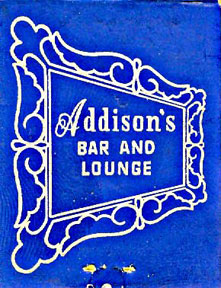
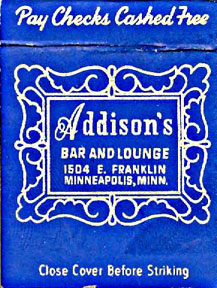

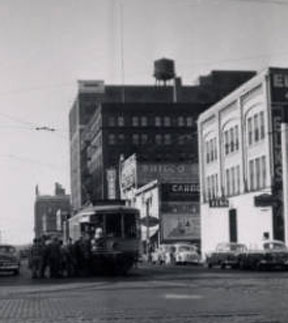
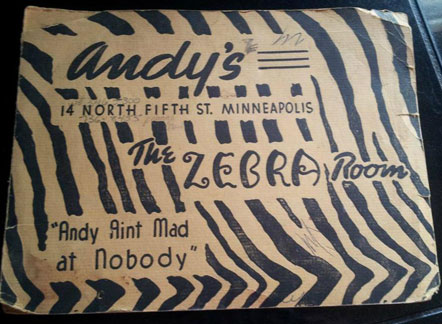
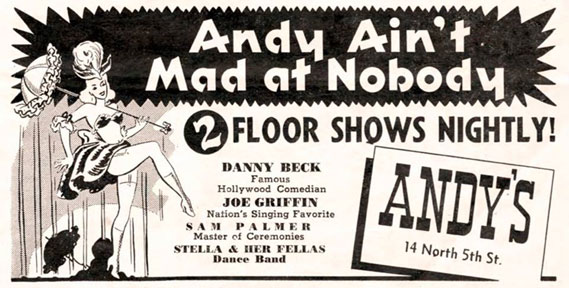
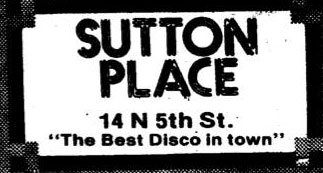
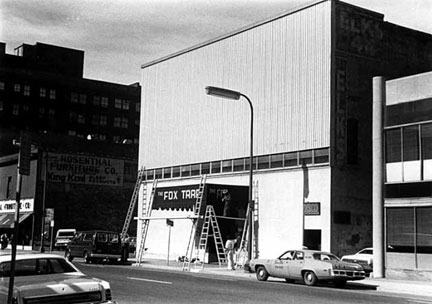
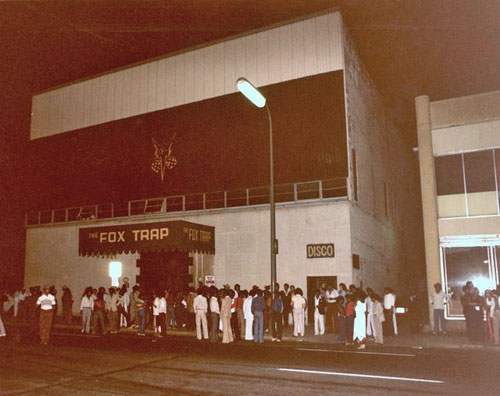

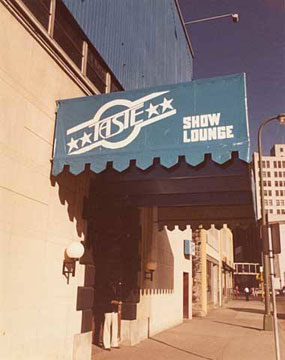
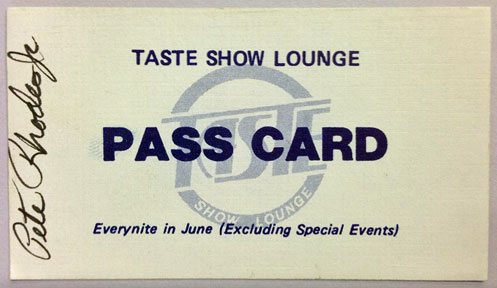
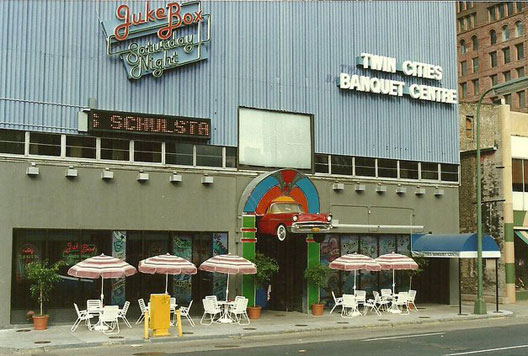
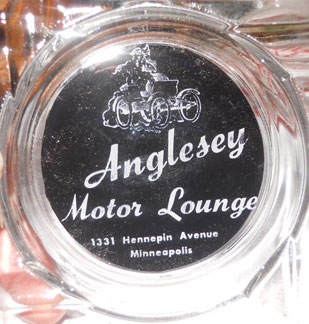
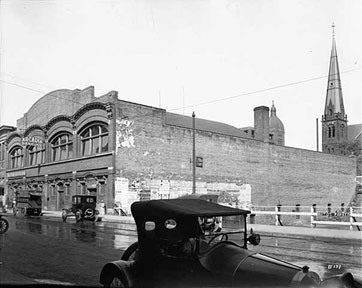
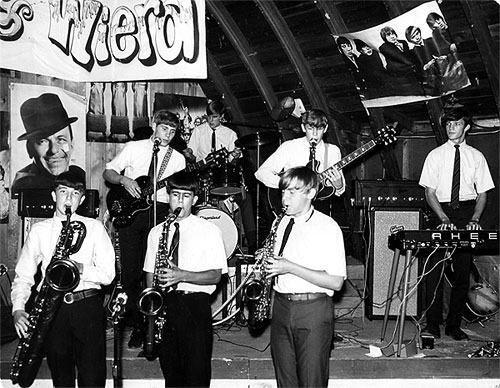
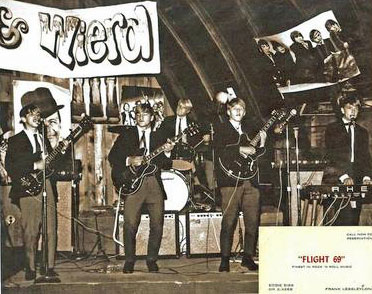
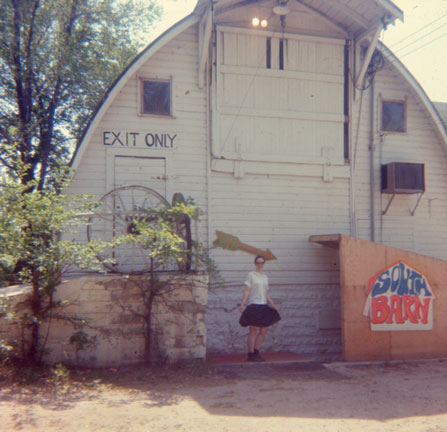
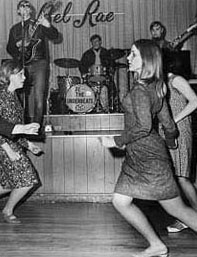 The Bel Rae Ballroom was located at 5394 Edgewood Drive NW
(Highway 10) in Moundsview (one mile west of New Brighton Arsenal). An Internet site says it was built and
operated by Elhart Ebel from 1964 to 1971. In 1967 it was open to teens
only on Tuesdays. Friday was alphabet night - people with last names starting
with letters in that night's ad got in free. A 1967 ad just had polka
acts. It was owned by Bud Raemaker in
1971 according to the Insider. At one time Tuesday nights featured Michael's Mystics.
Photo at right features the Underbeats. The building was sold to the city
on June 30, 1996 and became a community center.
The Bel Rae Ballroom was located at 5394 Edgewood Drive NW
(Highway 10) in Moundsview (one mile west of New Brighton Arsenal). An Internet site says it was built and
operated by Elhart Ebel from 1964 to 1971. In 1967 it was open to teens
only on Tuesdays. Friday was alphabet night - people with last names starting
with letters in that night's ad got in free. A 1967 ad just had polka
acts. It was owned by Bud Raemaker in
1971 according to the Insider. At one time Tuesday nights featured Michael's Mystics.
Photo at right features the Underbeats. The building was sold to the city
on June 30, 1996 and became a community center.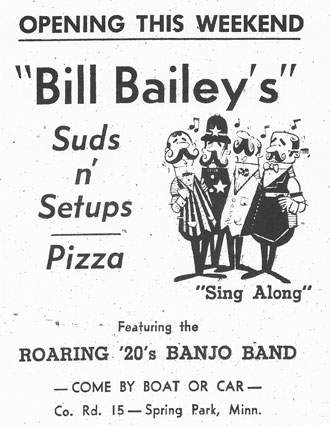
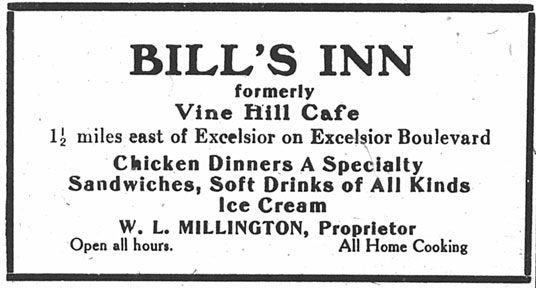

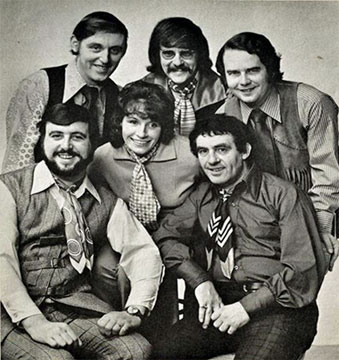
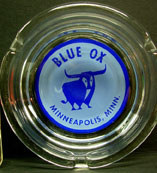
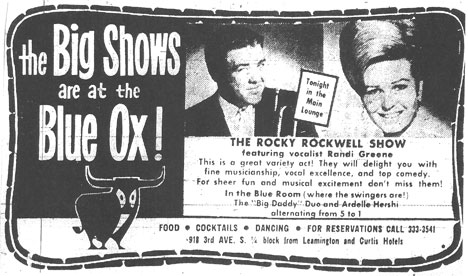 1967
1967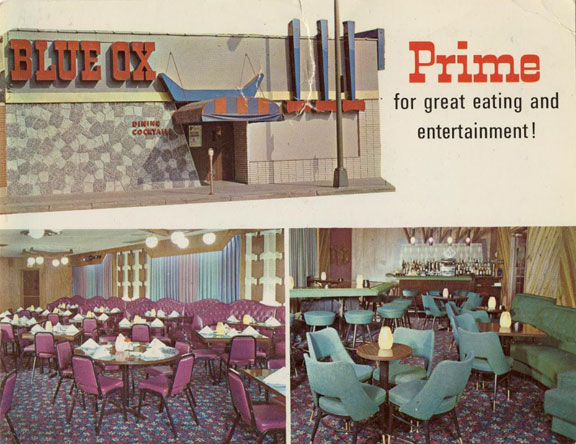
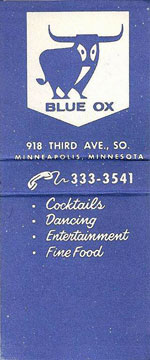
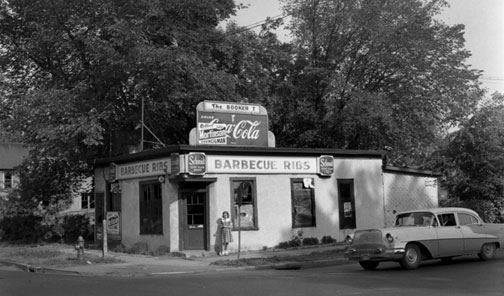

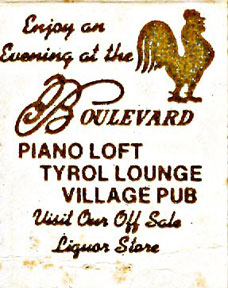
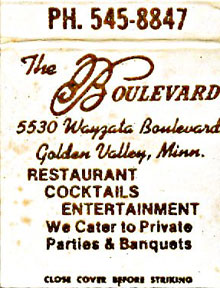

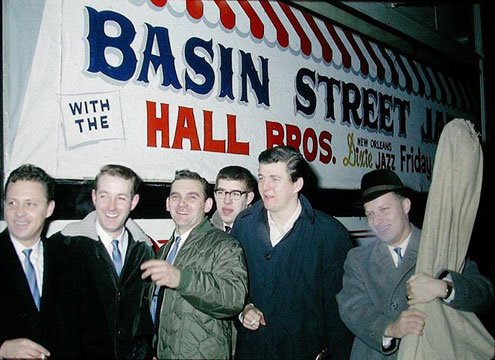

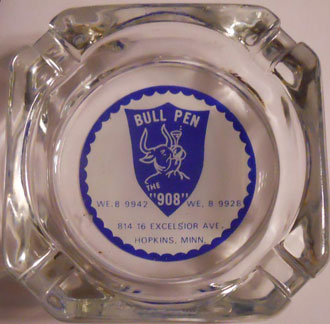
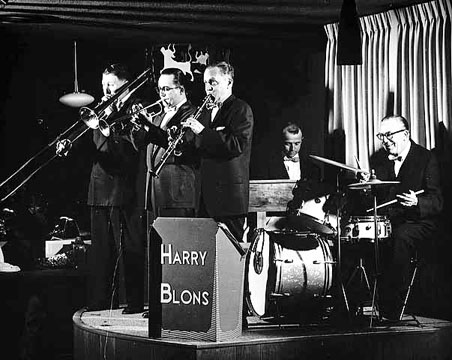
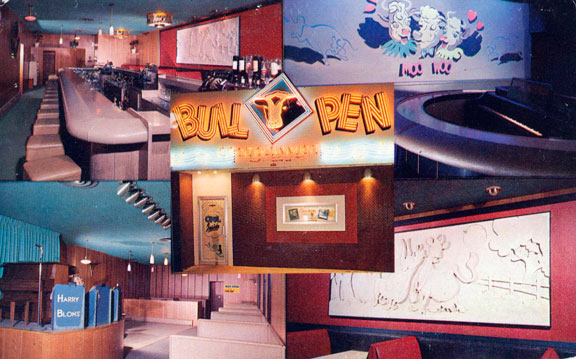
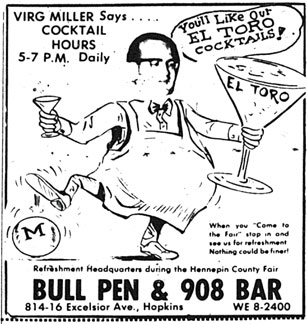


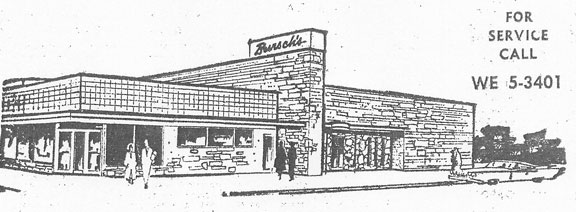
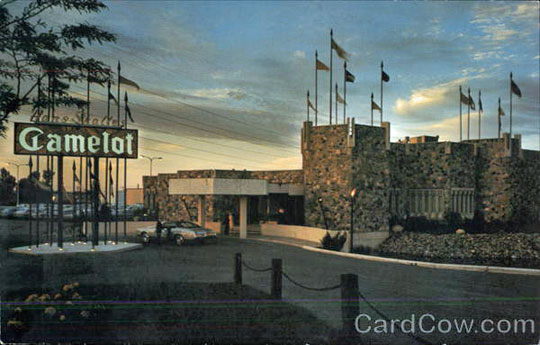
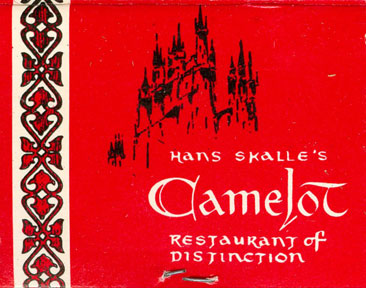
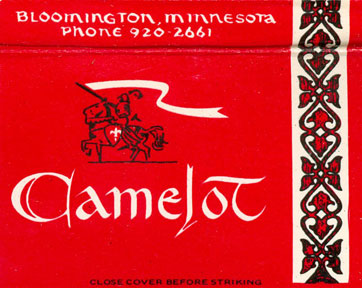
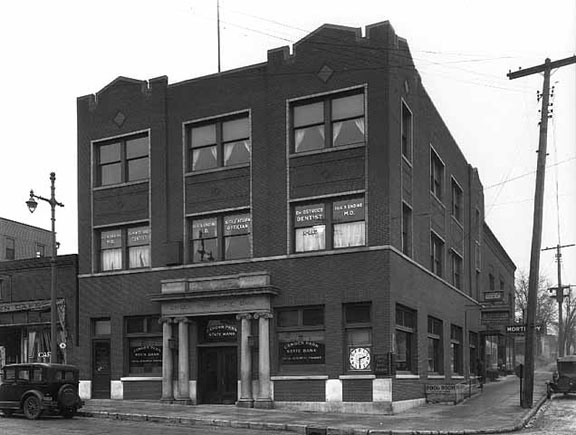
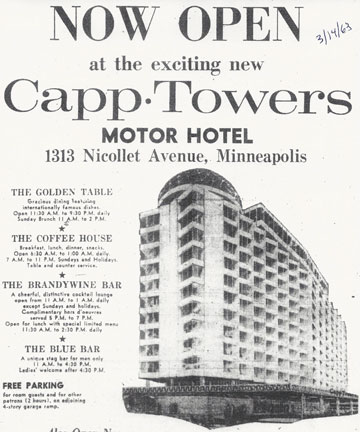
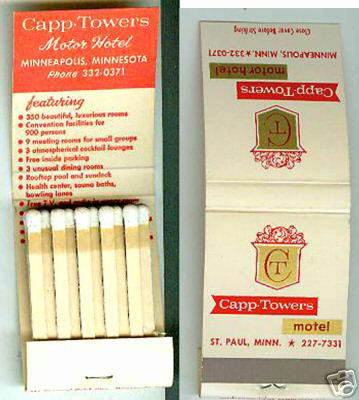
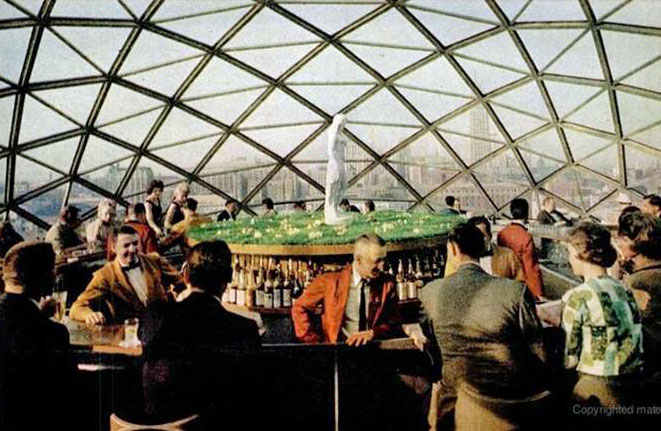
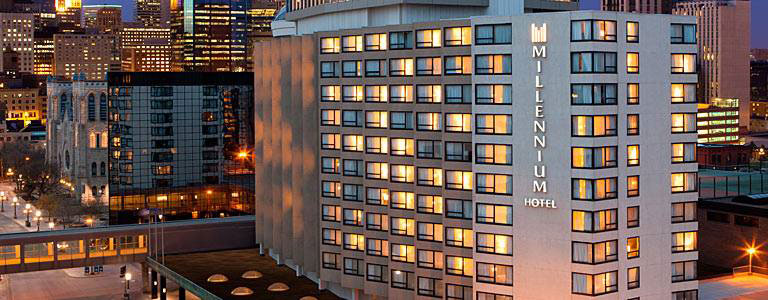
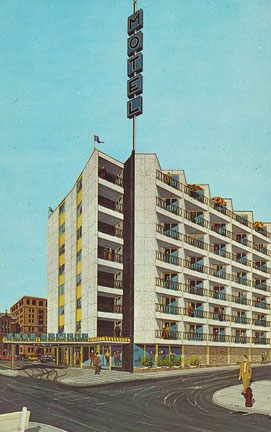
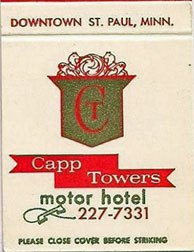
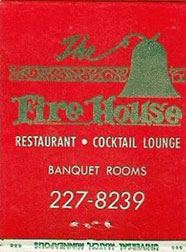

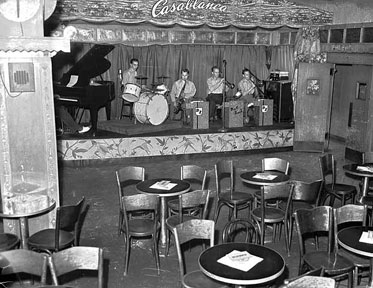

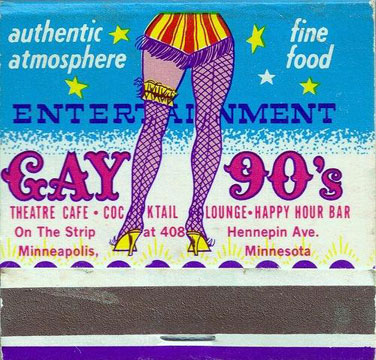
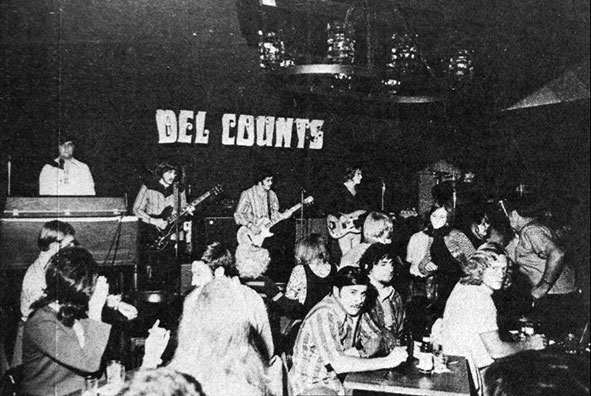
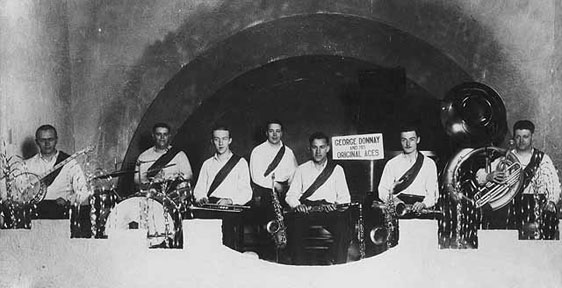
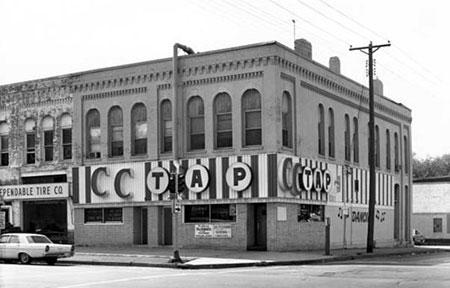
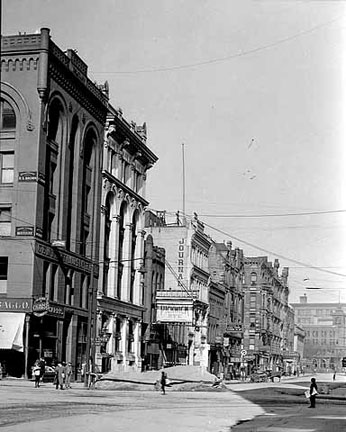

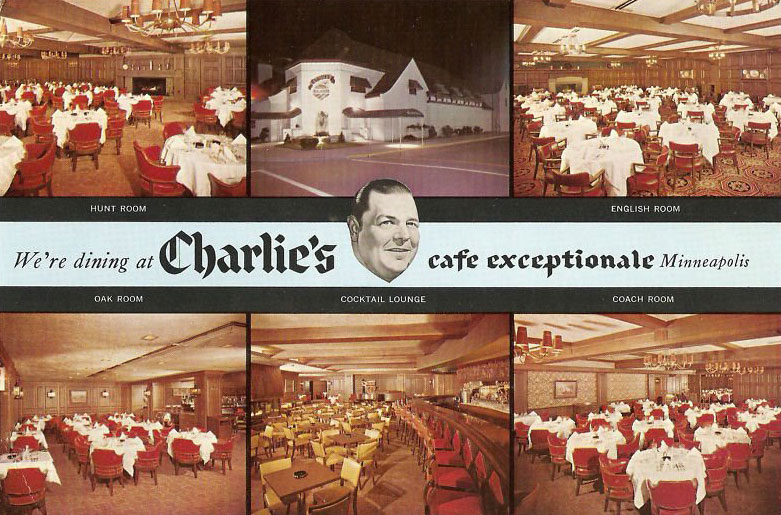
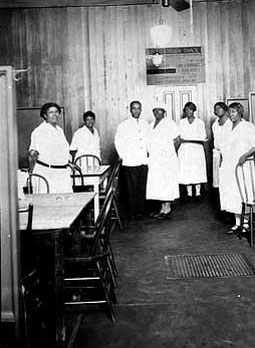
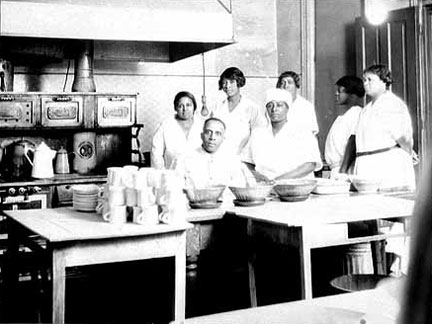


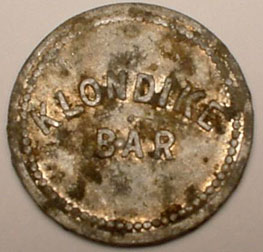 Chuck's Skol Club,
326 Cedar Ave. So., West Bank, Minneapolis. In
December 1955 there were three shows nightly. Previous
occupants of this building, probably built in 1901,
included:
Chuck's Skol Club,
326 Cedar Ave. So., West Bank, Minneapolis. In
December 1955 there were three shows nightly. Previous
occupants of this building, probably built in 1901,
included:
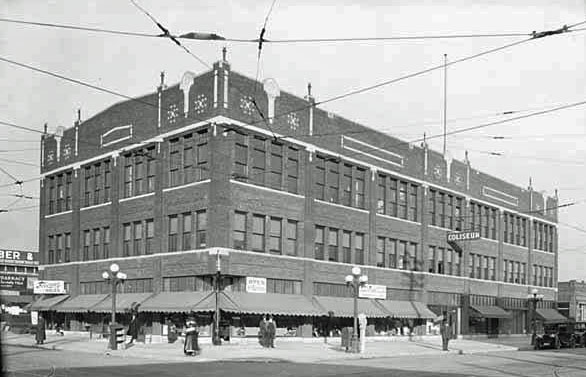
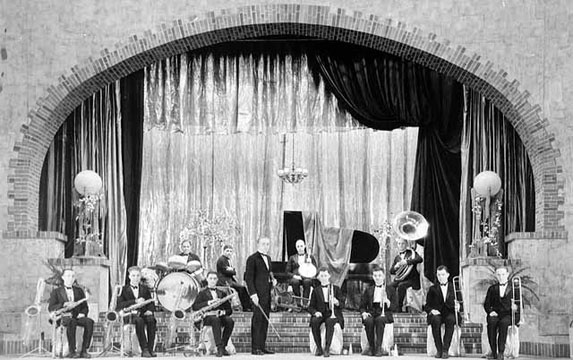
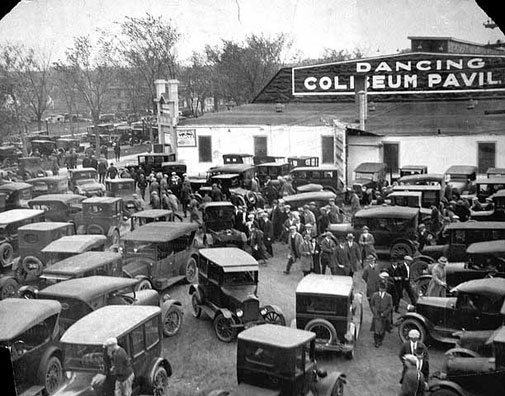
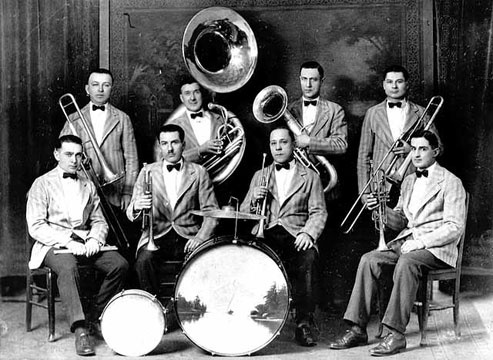
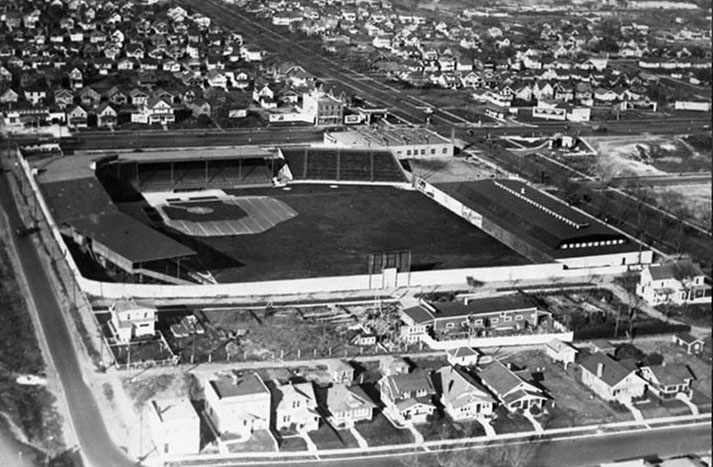
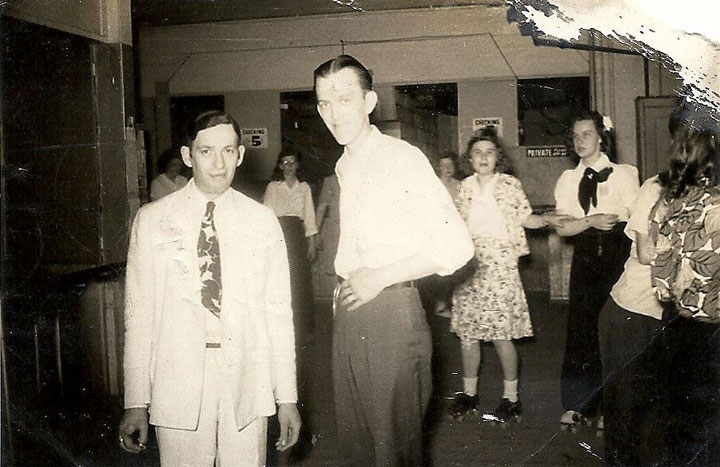
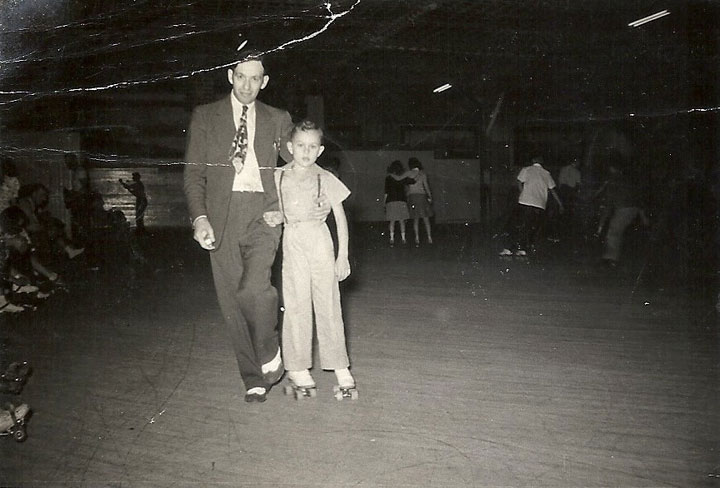
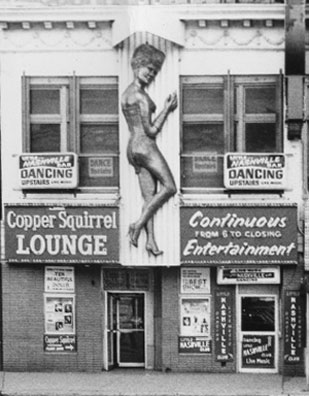
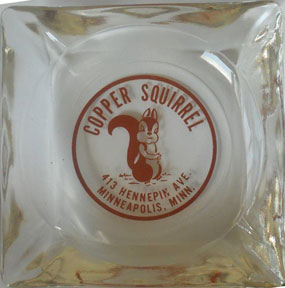
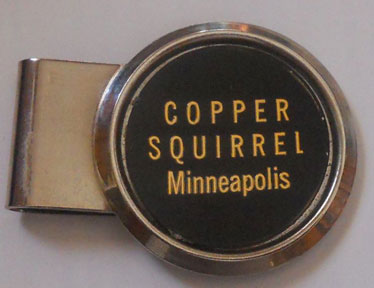
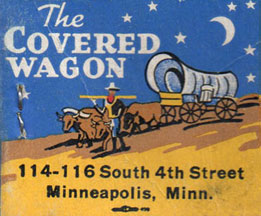
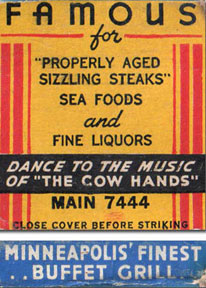
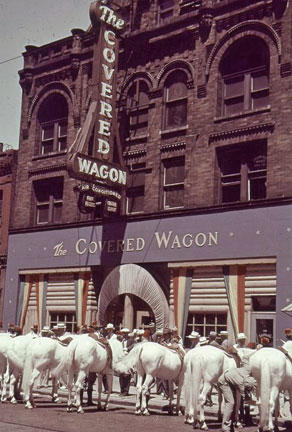
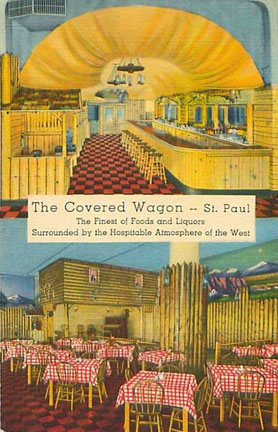
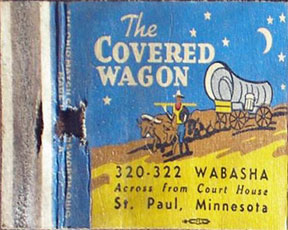
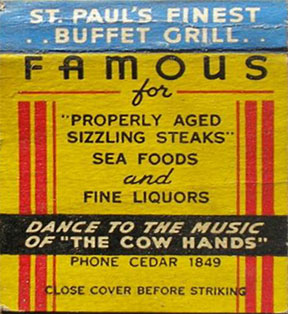
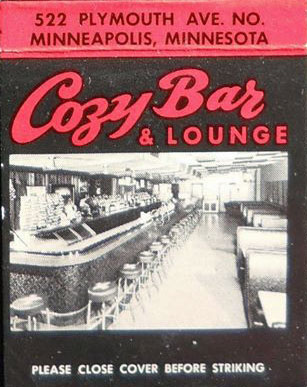
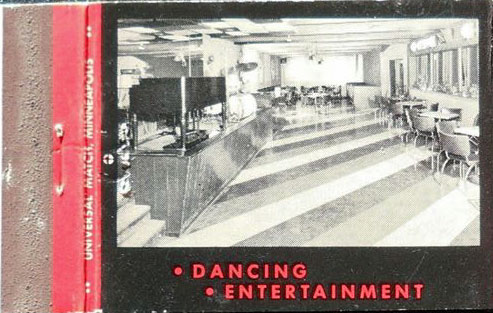
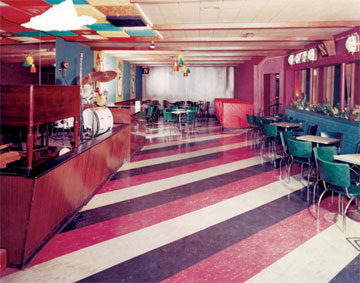
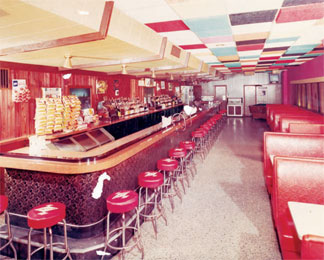
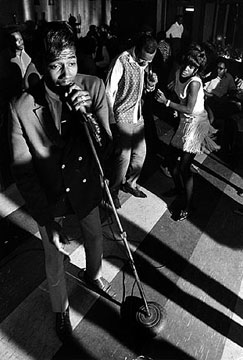
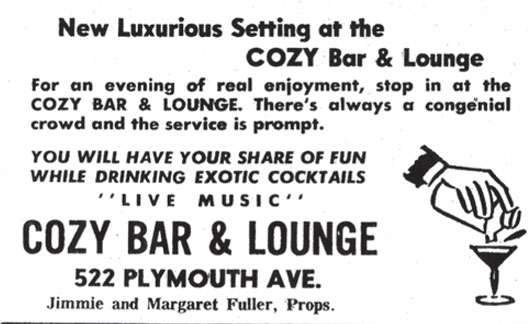
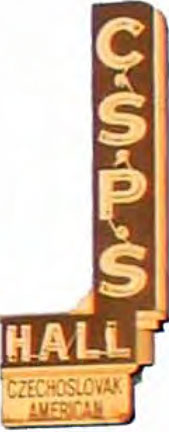
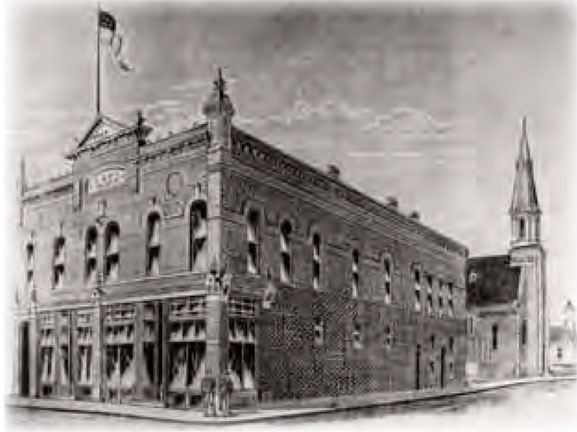
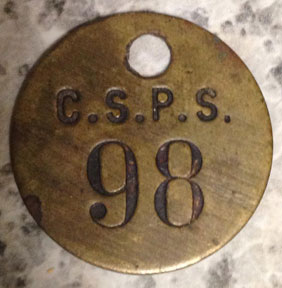
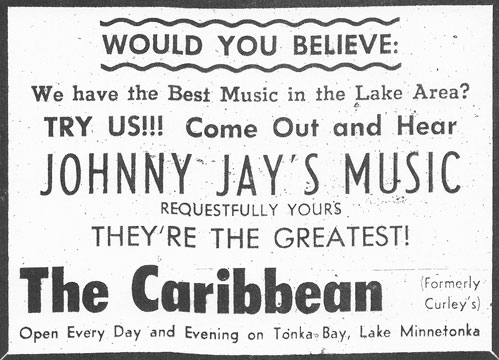
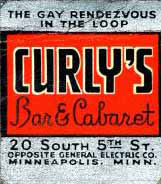
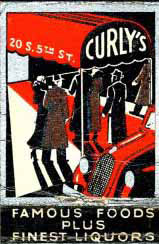
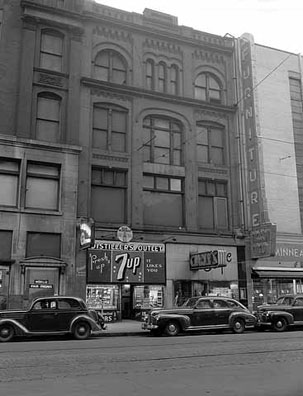
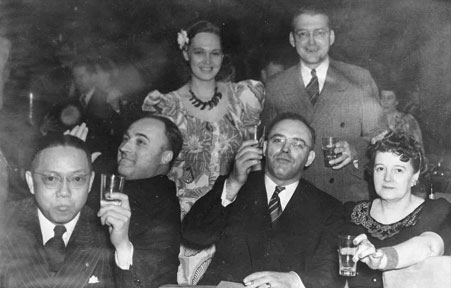
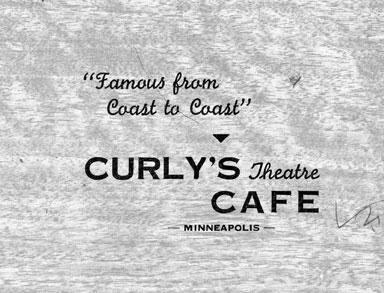
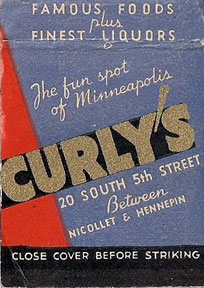
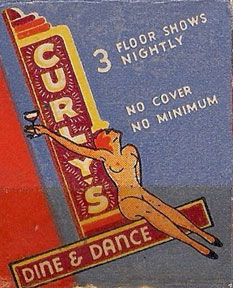
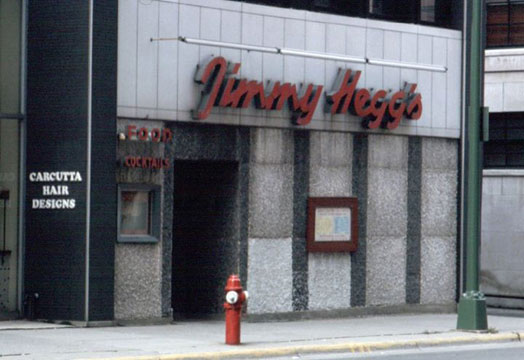
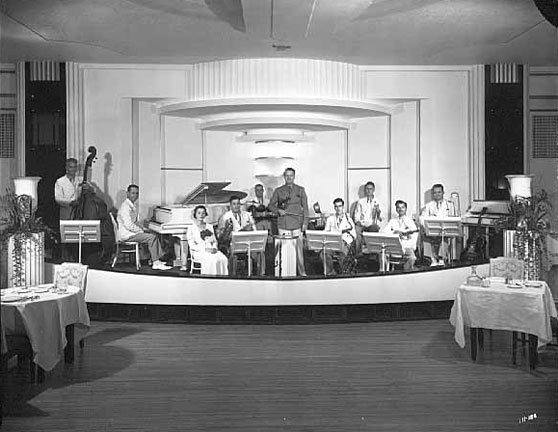
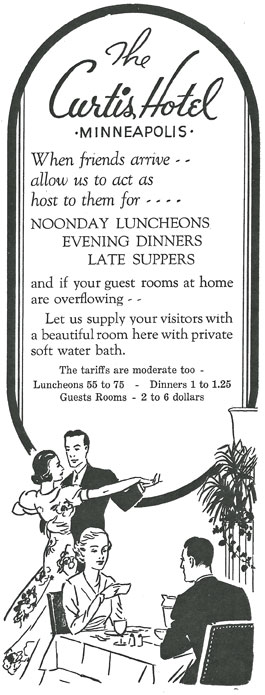
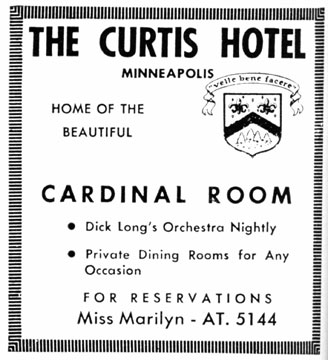
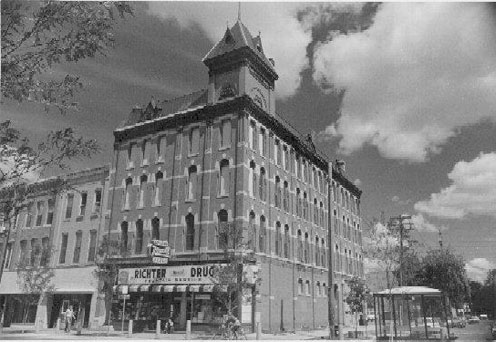
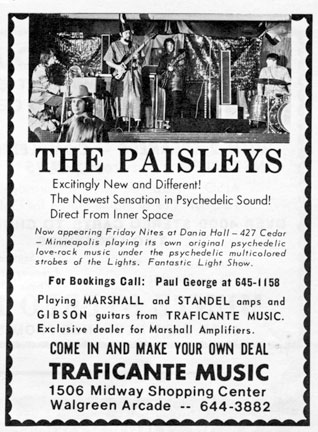
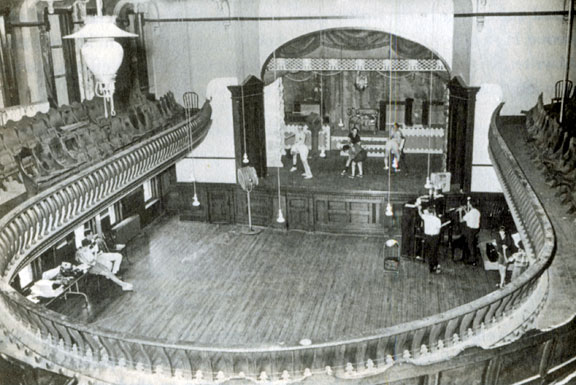
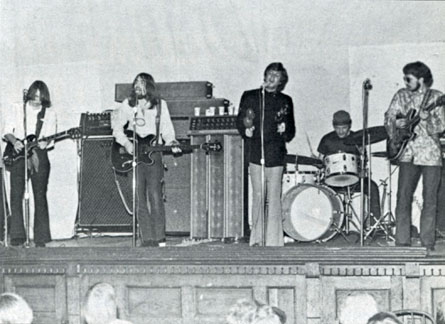
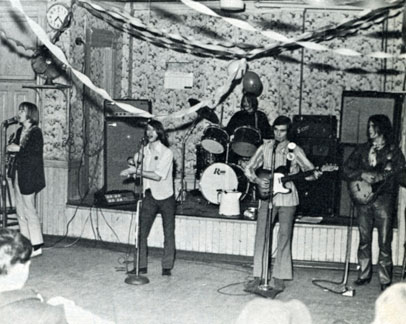
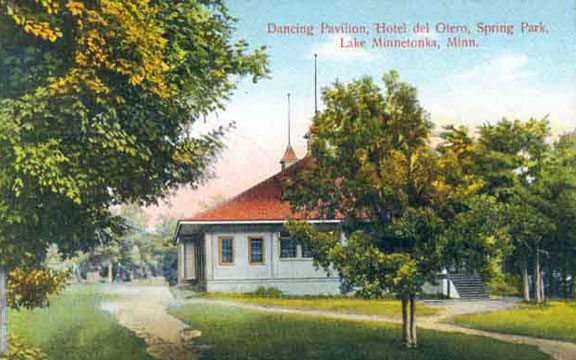
 The former Greyhound Bus Station was built in 1936 at 29 North 7th Street,
downtown Minneapolis. It stood empty for several years, owned by Ted Mann
who considered turning it into a theater. In 1970 it was purchased by Danny
Stevens of Danny's Reasons, who had a liquor license from the Hotel Hastings,
and Elizabeth Heffelfinger, who had to drop out because of illness.
Allan Fingerhut (pictured at right, from the Insider) then stepped in with the financing, and Abby Rosenthal was
formerly the manager of George's in the Park. Danny's brother Mickey
and Skip Goucher were creative partners. Another name mentioned in the Insider
as an owner was Clearance (sic) Kramer.
The former Greyhound Bus Station was built in 1936 at 29 North 7th Street,
downtown Minneapolis. It stood empty for several years, owned by Ted Mann
who considered turning it into a theater. In 1970 it was purchased by Danny
Stevens of Danny's Reasons, who had a liquor license from the Hotel Hastings,
and Elizabeth Heffelfinger, who had to drop out because of illness.
Allan Fingerhut (pictured at right, from the Insider) then stepped in with the financing, and Abby Rosenthal was
formerly the manager of George's in the Park. Danny's brother Mickey
and Skip Goucher were creative partners. Another name mentioned in the Insider
as an owner was Clearance (sic) Kramer.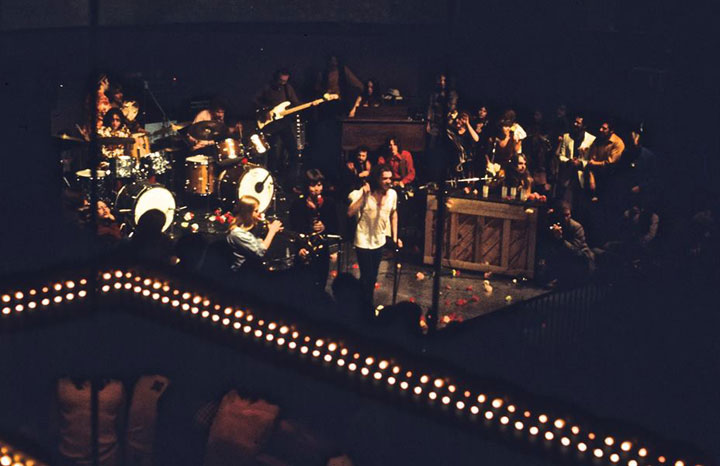
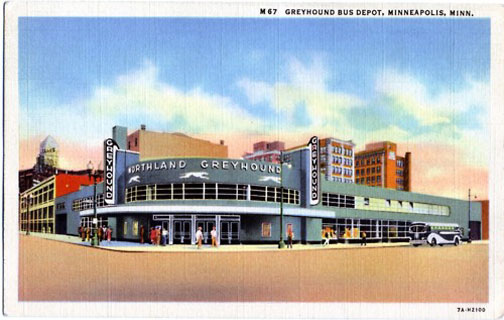
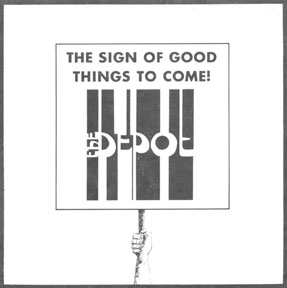
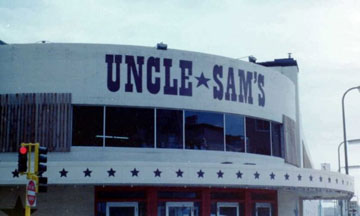


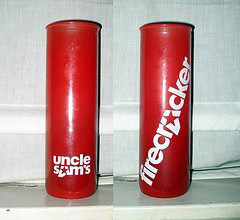
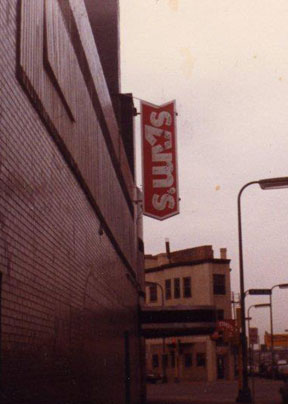
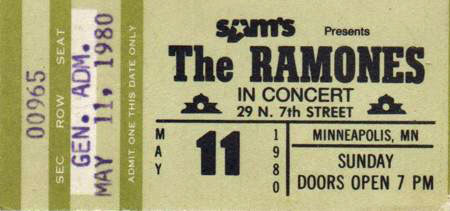
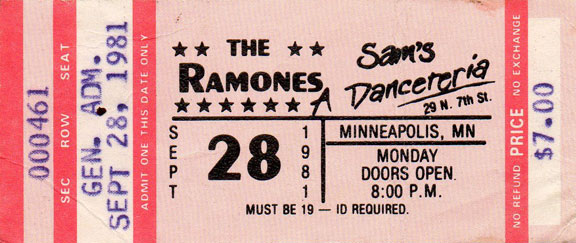
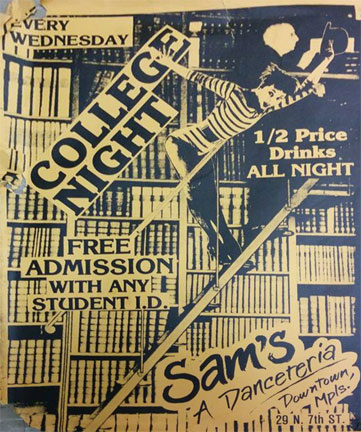

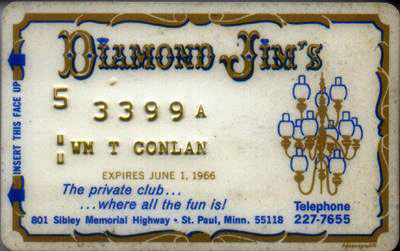

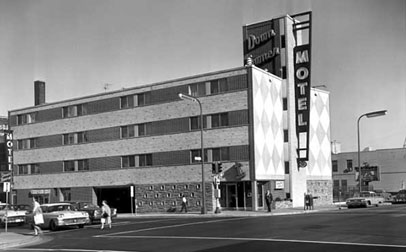
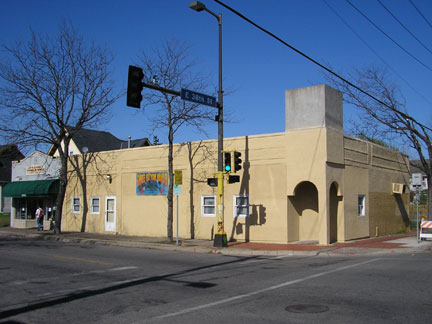
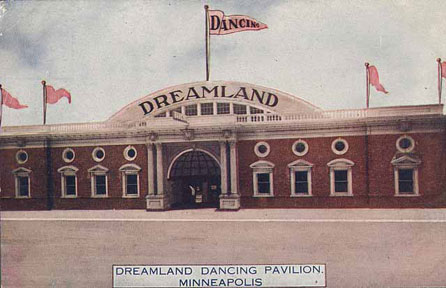
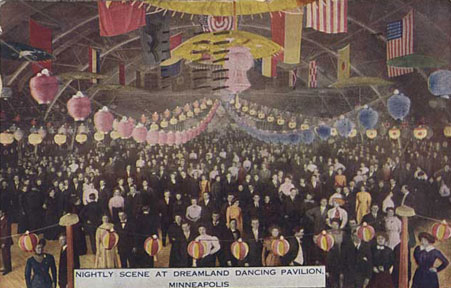
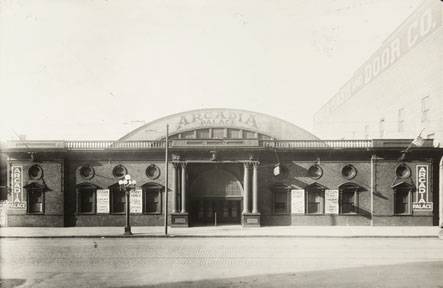
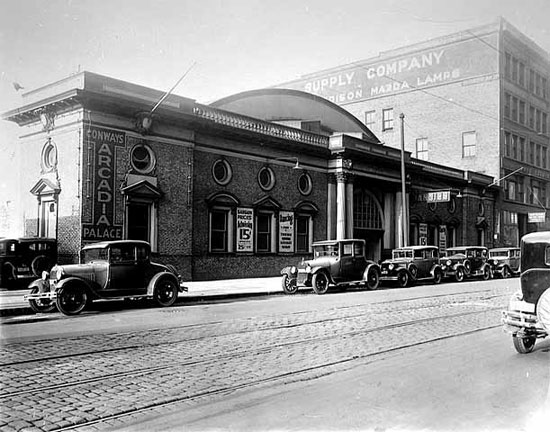
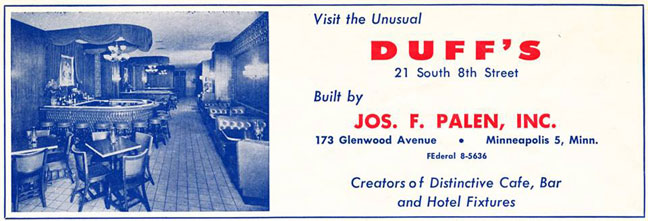
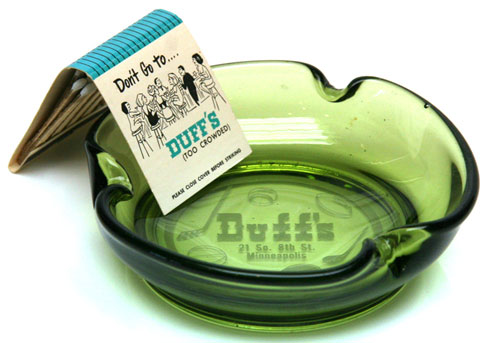
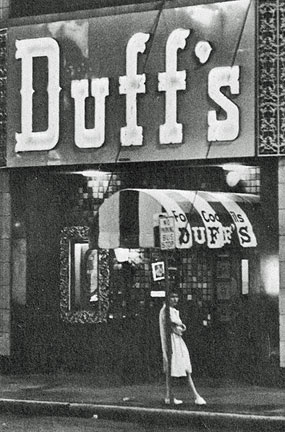
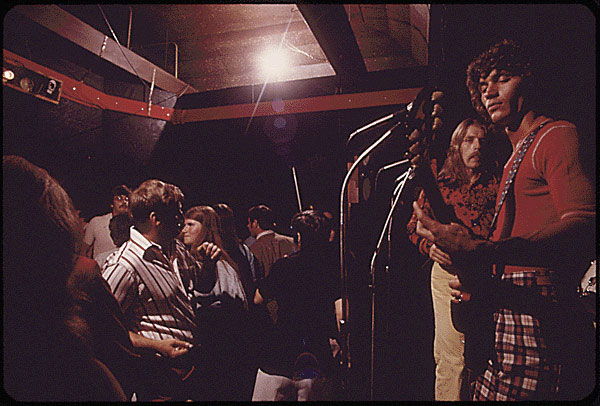
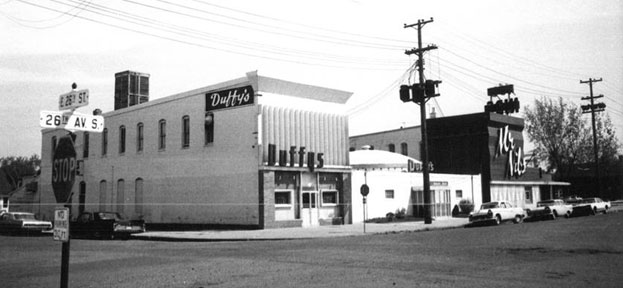
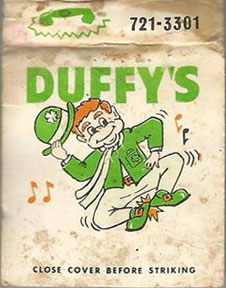
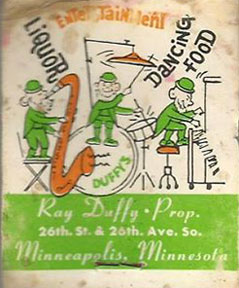
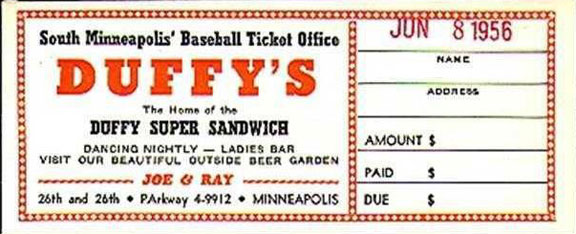

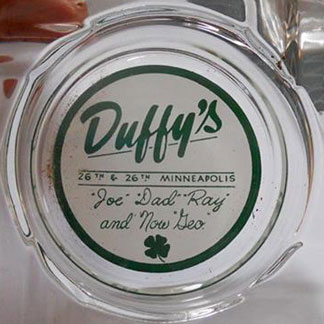
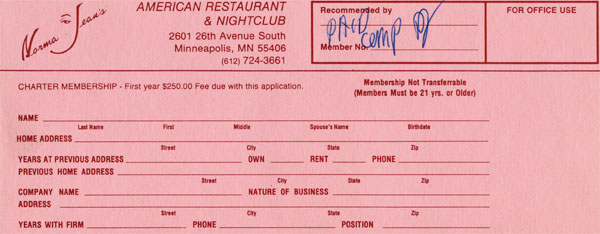
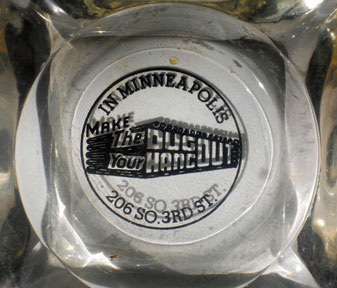
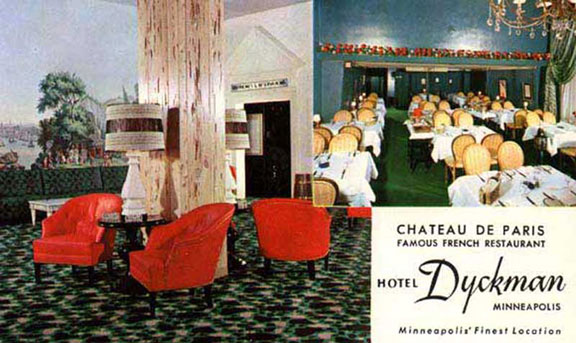
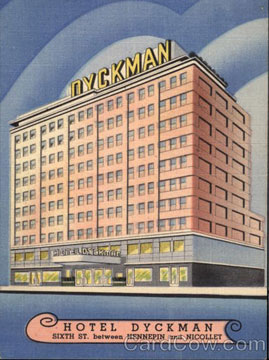
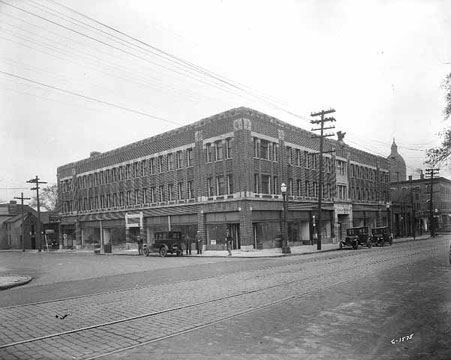
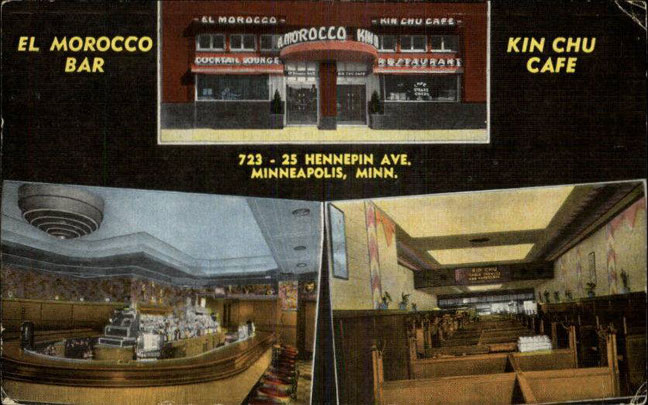
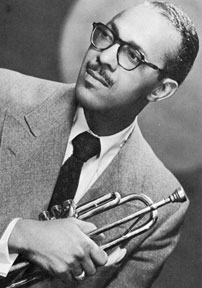
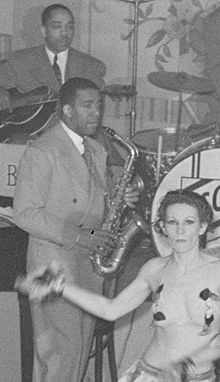
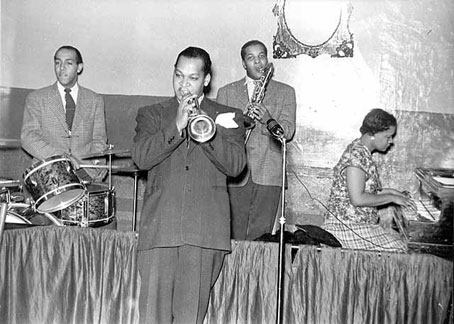
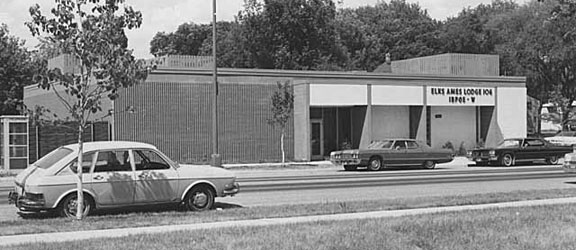
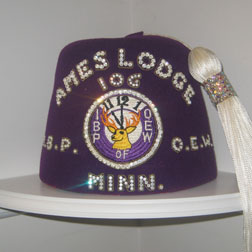
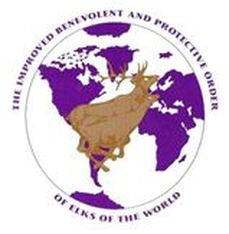
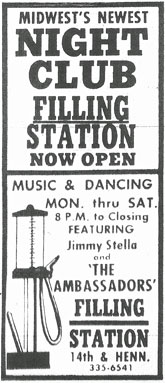
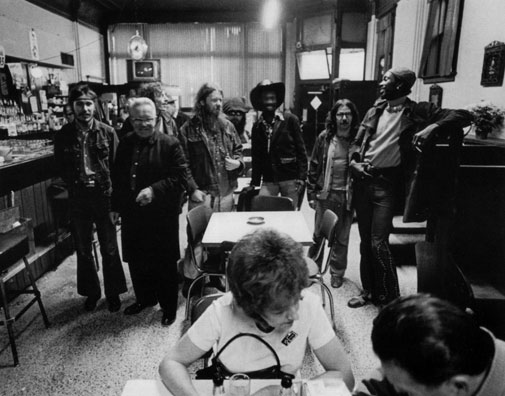
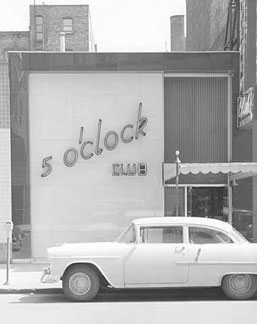
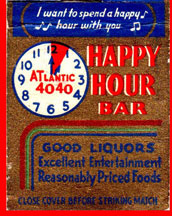
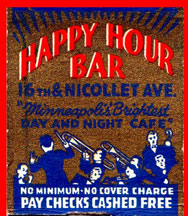
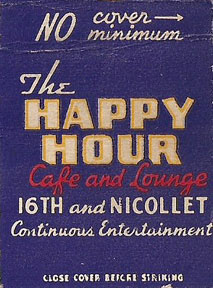
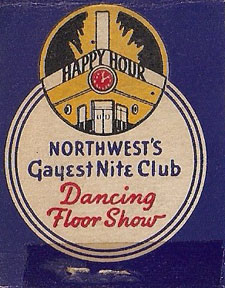

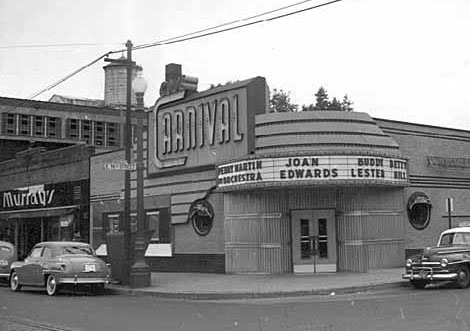
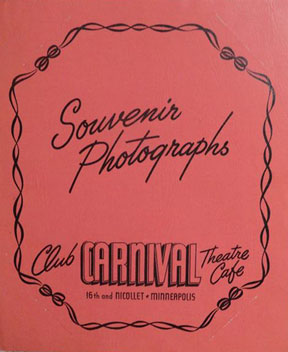
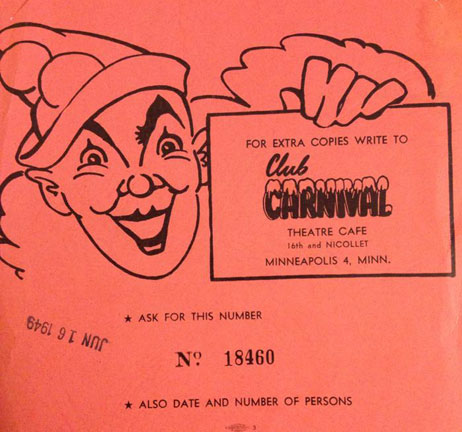
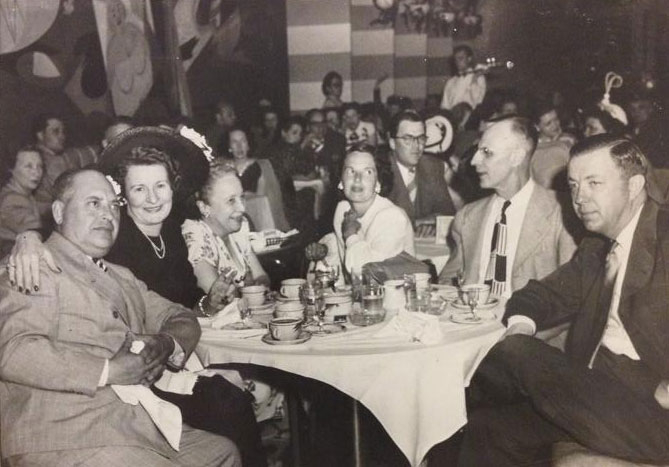
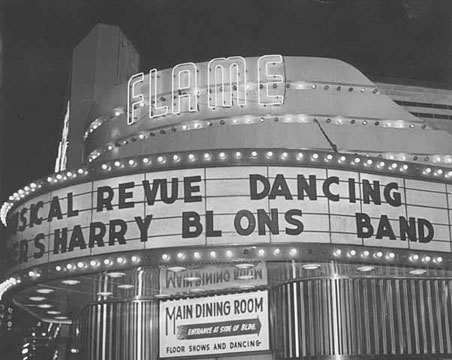

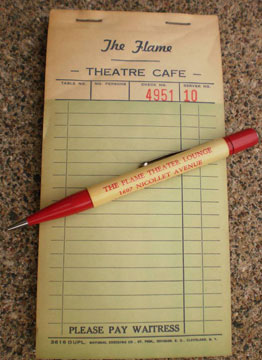
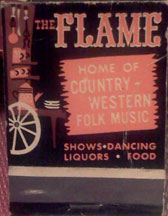
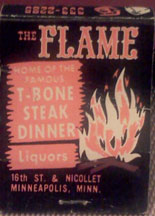
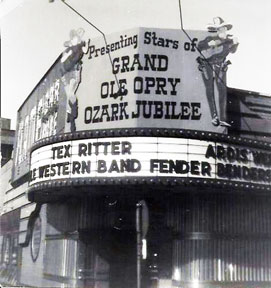
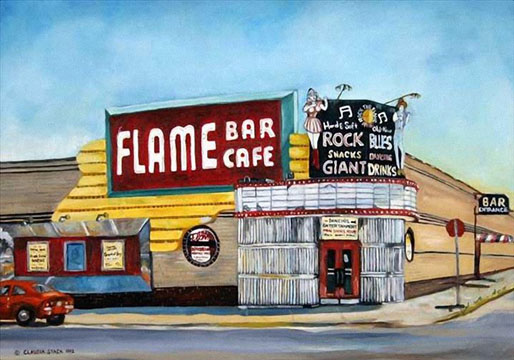
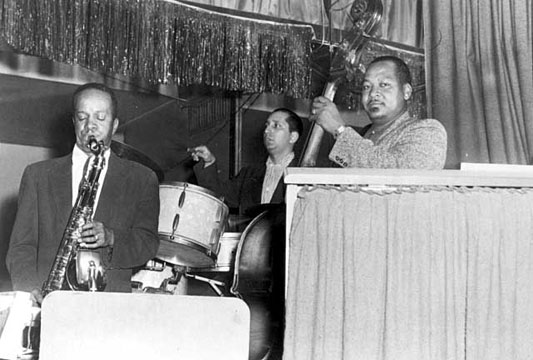
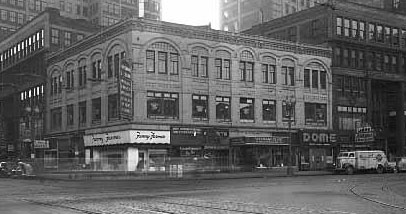



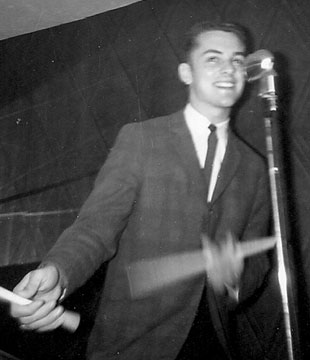

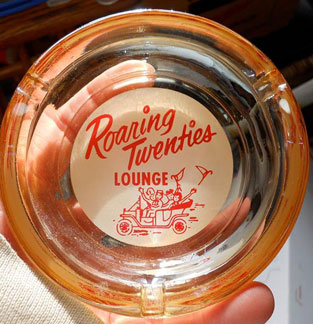
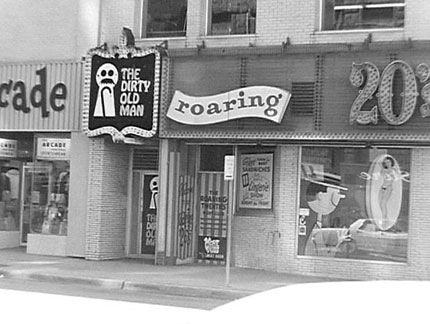
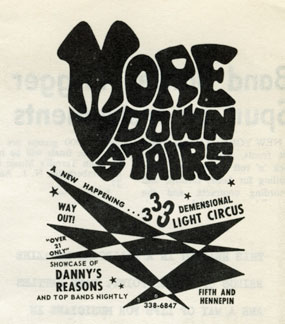
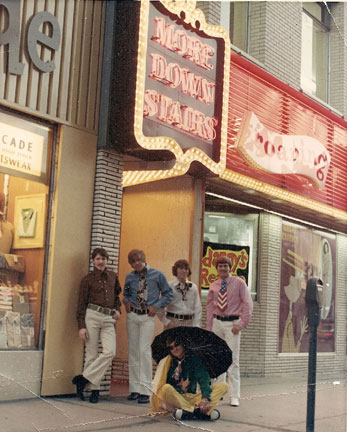
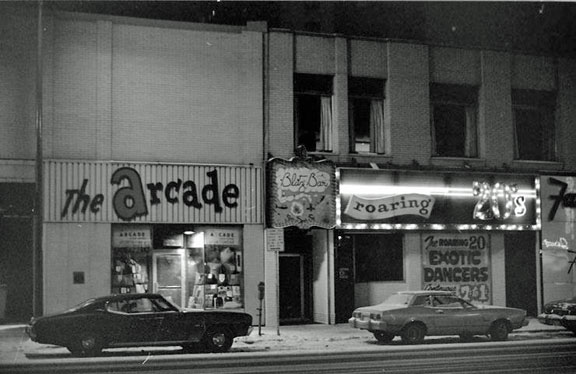
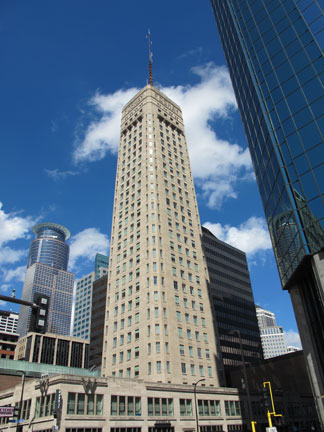


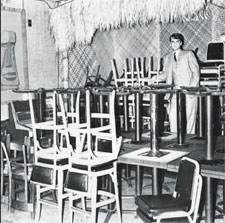
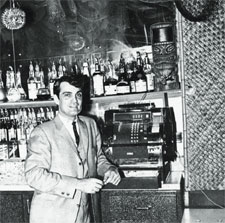
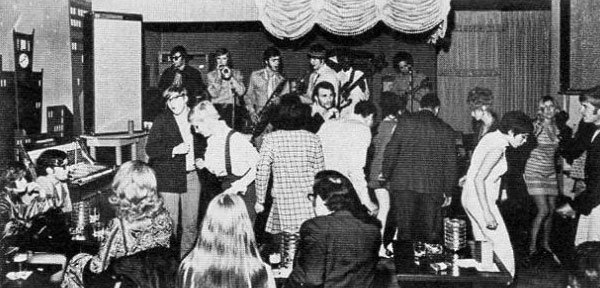
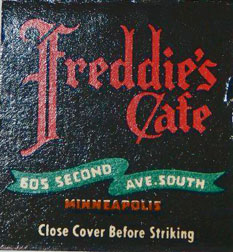
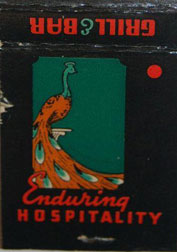
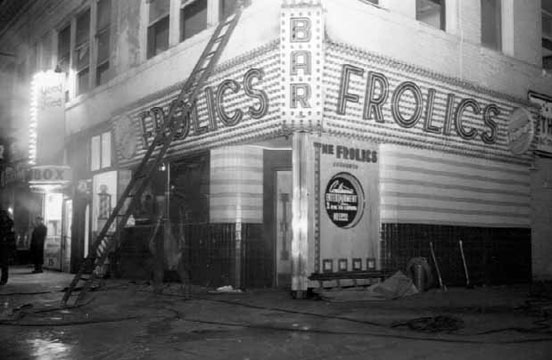
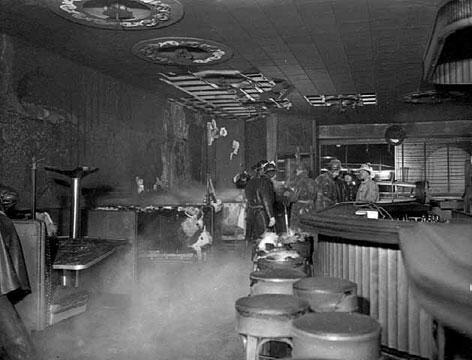
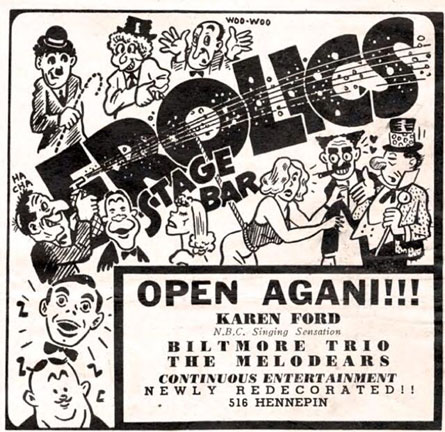
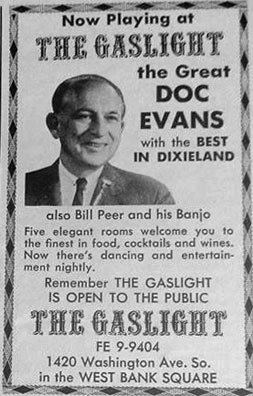
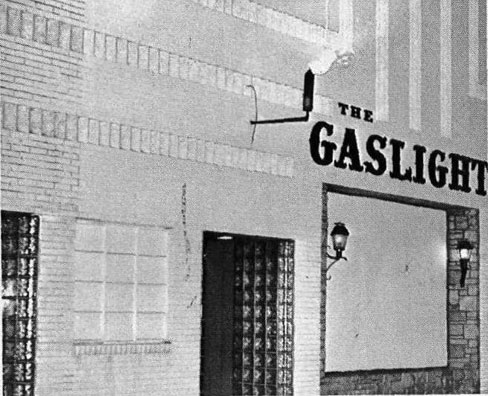
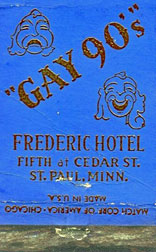
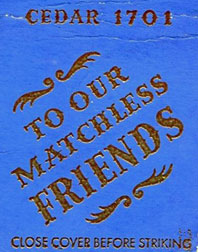
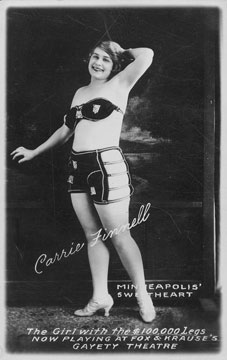
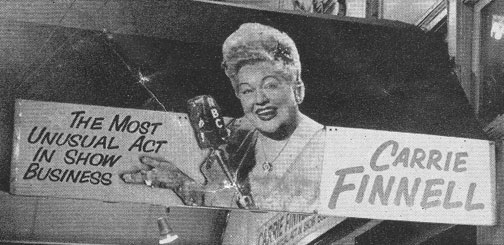

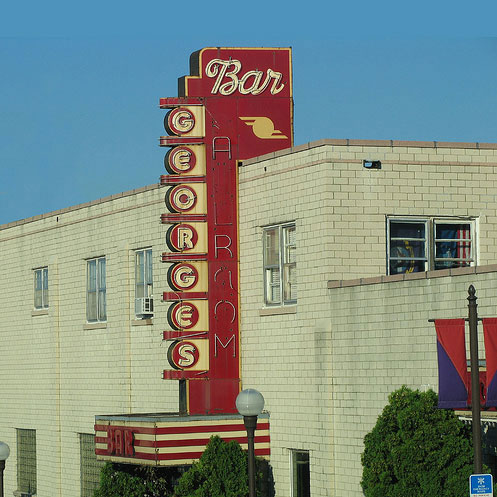
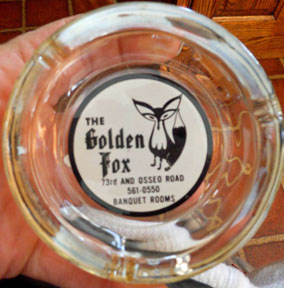

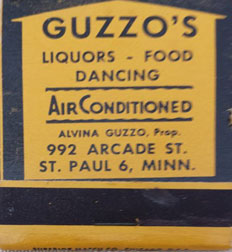
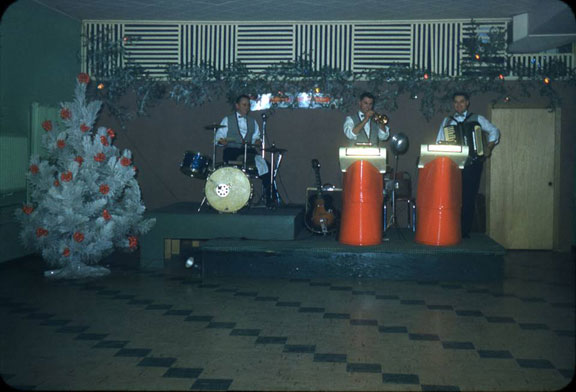
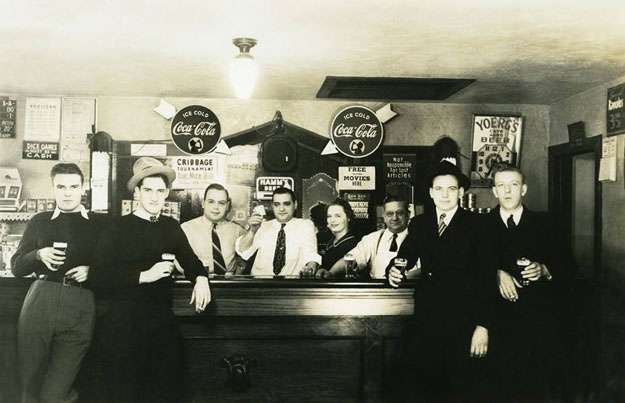
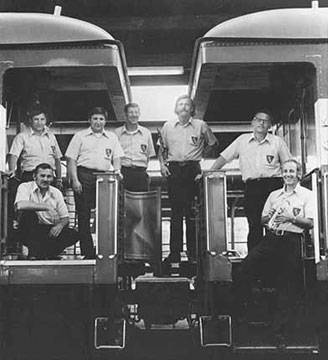
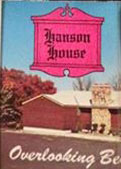
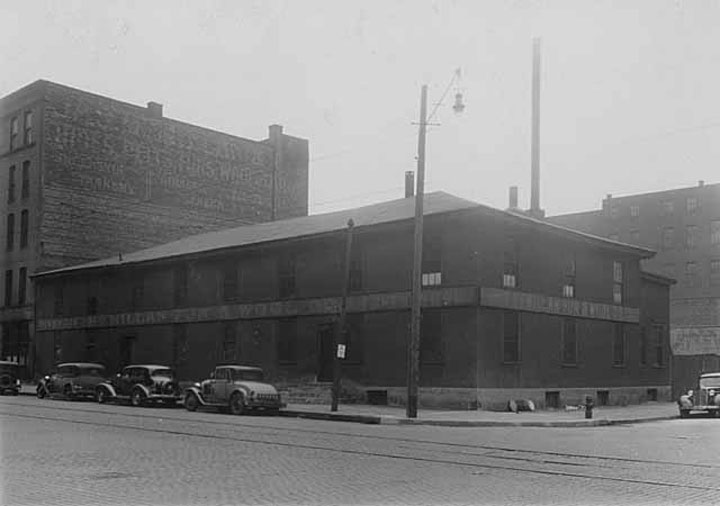
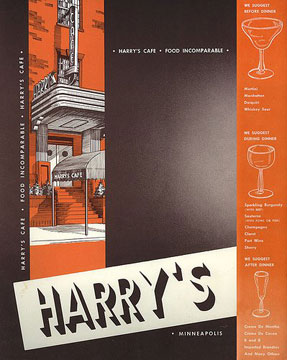
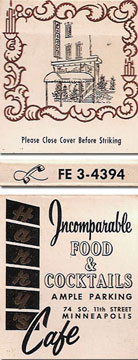
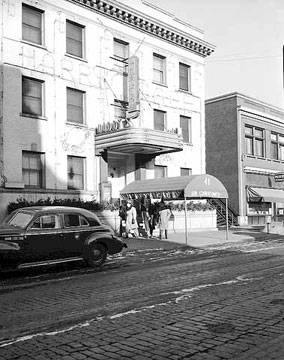
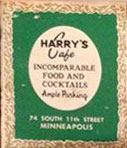
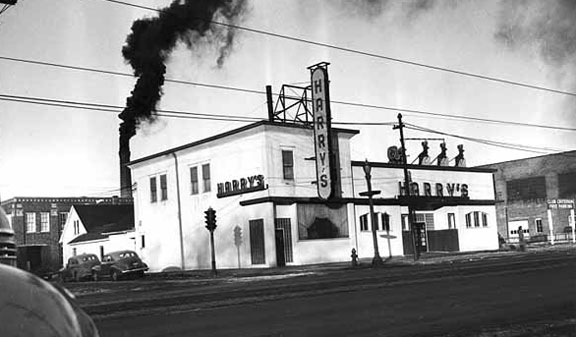
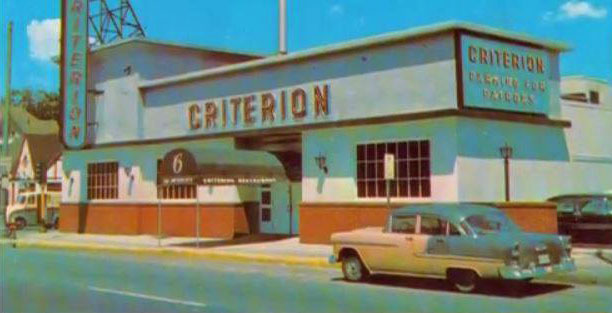
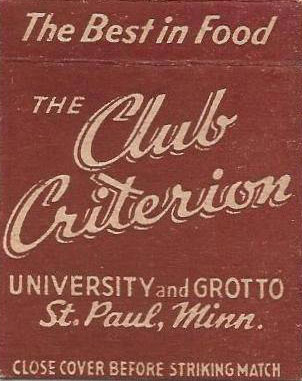
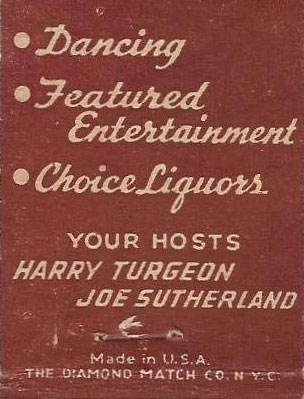
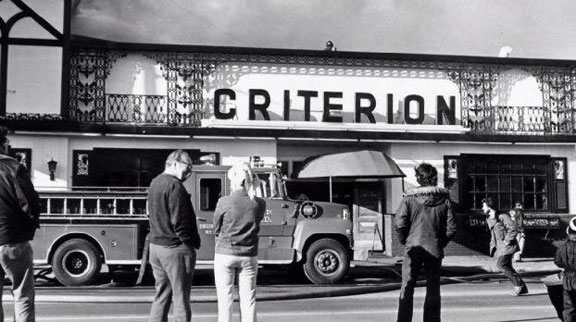
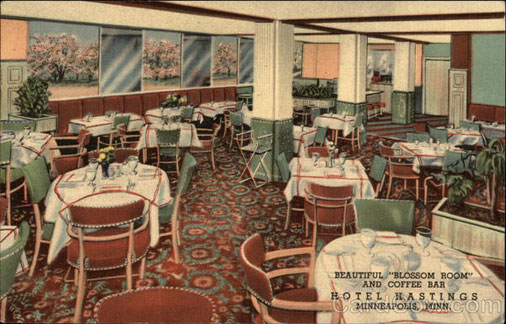
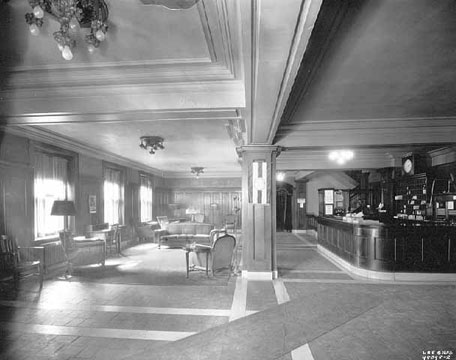
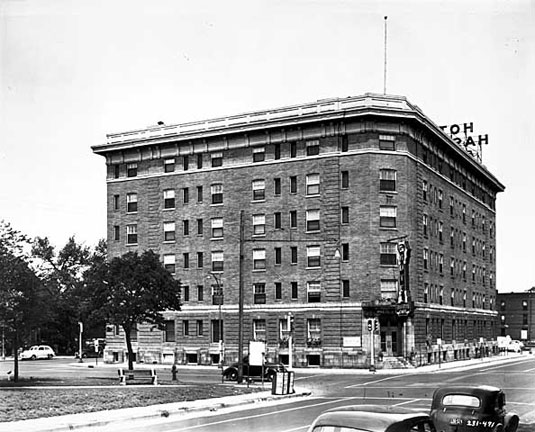
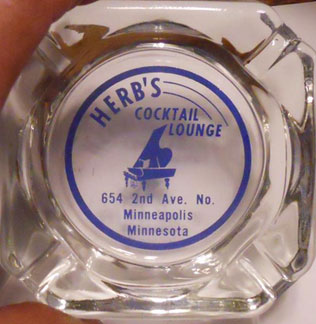

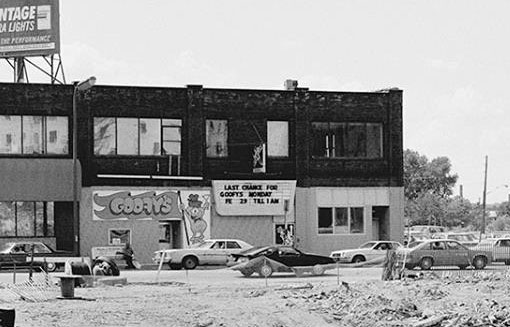
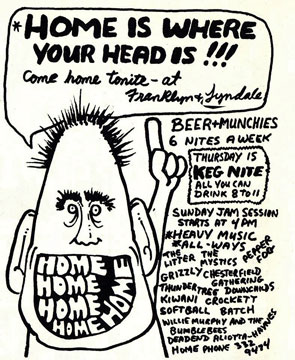 Insider ad, 1970/71
Insider ad, 1970/71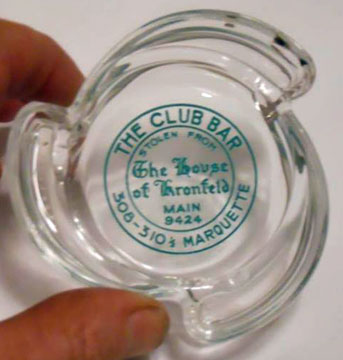
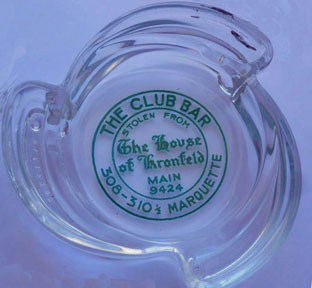
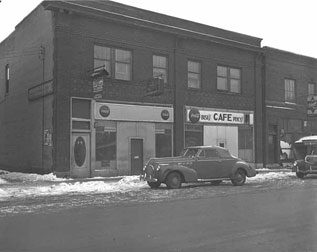
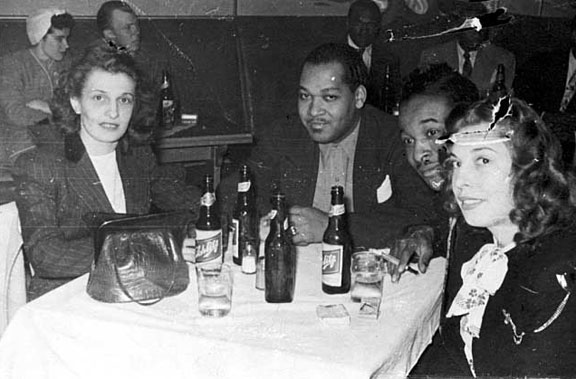
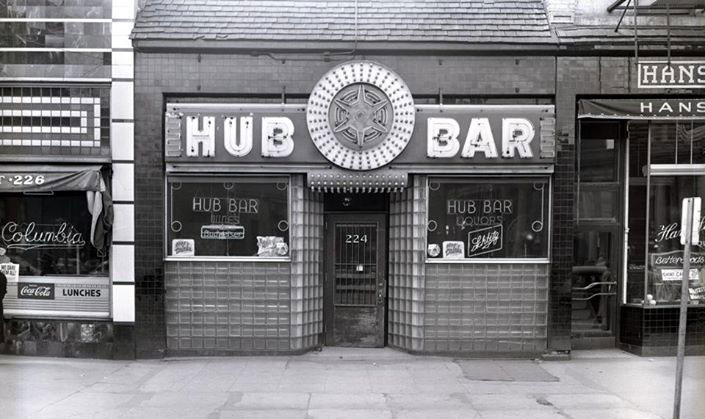
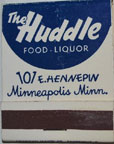
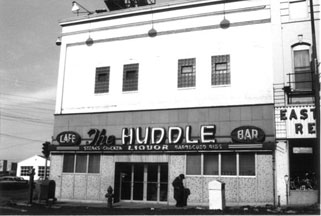
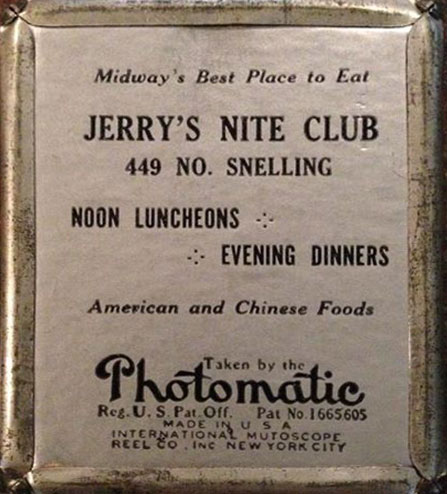
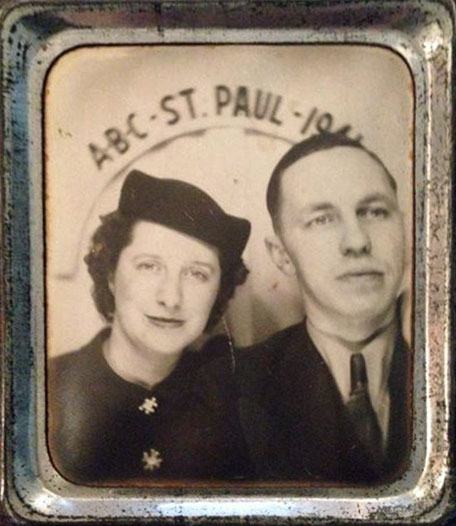
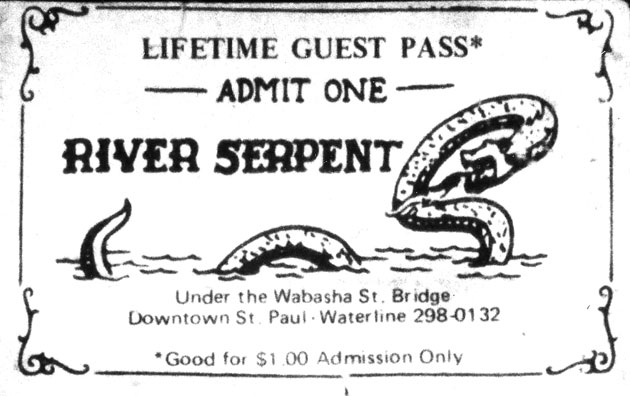
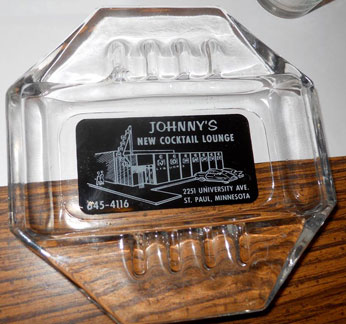
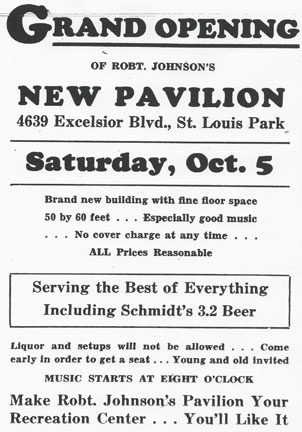
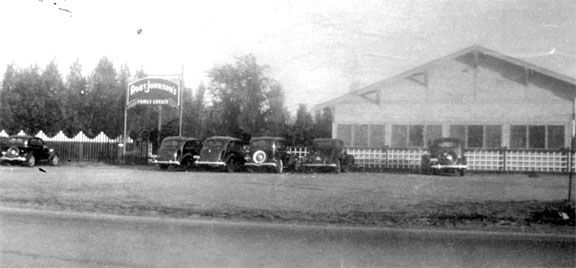
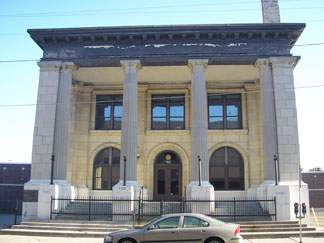
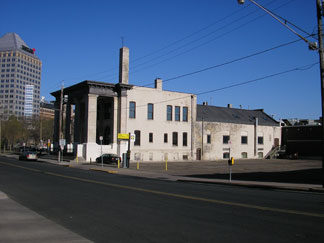
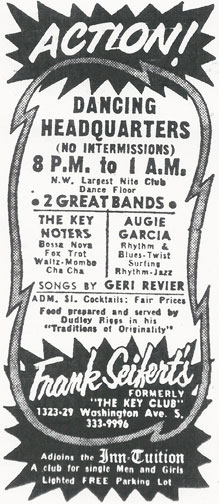 The
South of the Border Bar was located at 1327 Washington Ave., opening date
unknown. On December 19, 1951, The Key Club opened next door at 1325
Washington Ave. So. Both establishments were owned by Henry Sabes.
The first act at the Key Club was the Four Blazes. The
club became a main venue for jazz and rhythm & blues
in the 1950s, as advertised in the Minneapolis Spokesman. 1955 acts
included
The
South of the Border Bar was located at 1327 Washington Ave., opening date
unknown. On December 19, 1951, The Key Club opened next door at 1325
Washington Ave. So. Both establishments were owned by Henry Sabes.
The first act at the Key Club was the Four Blazes. The
club became a main venue for jazz and rhythm & blues
in the 1950s, as advertised in the Minneapolis Spokesman. 1955 acts
included 

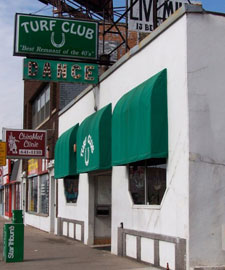
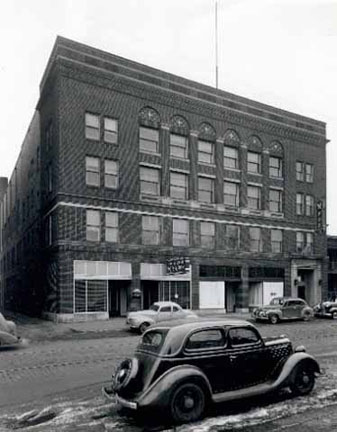
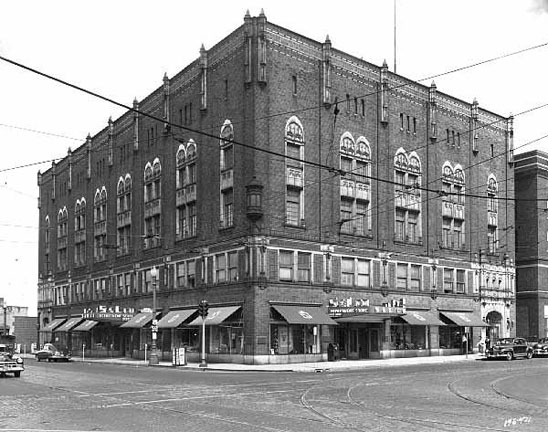
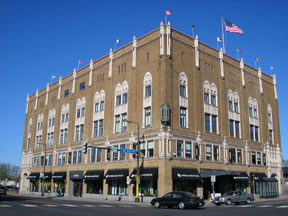
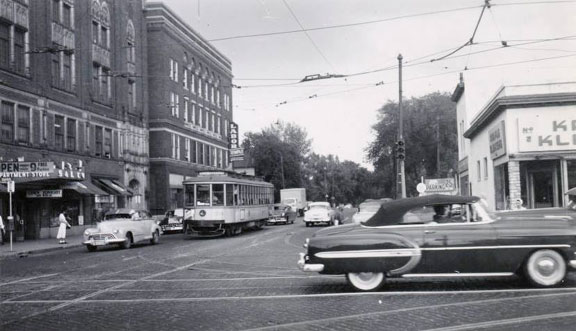

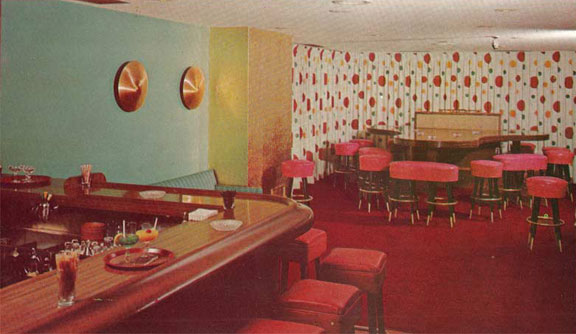
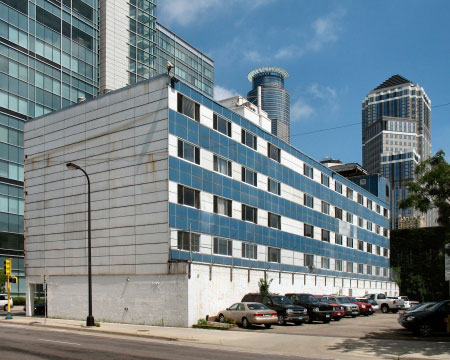
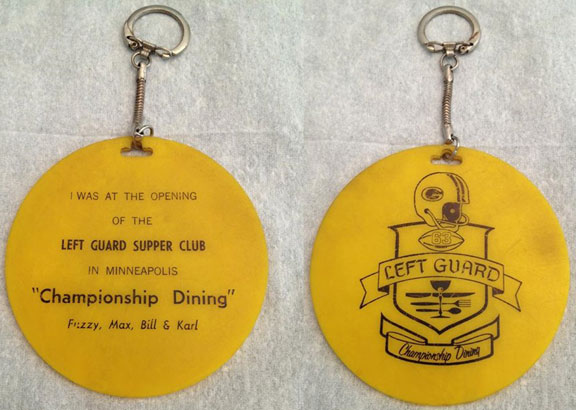


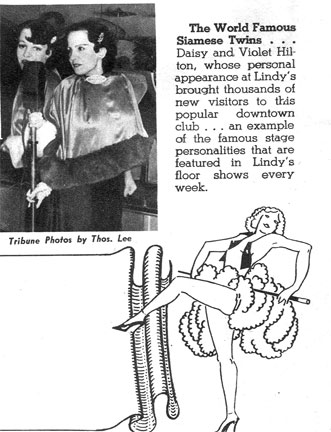



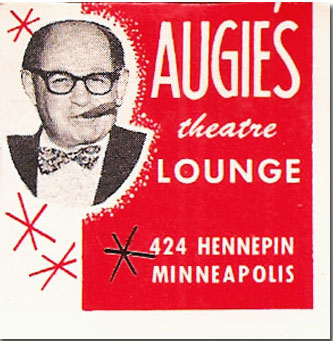
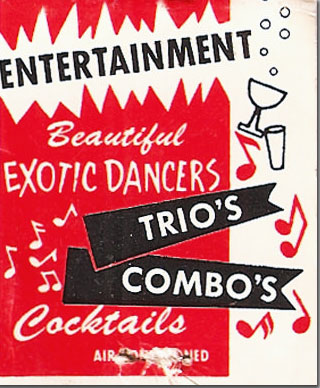
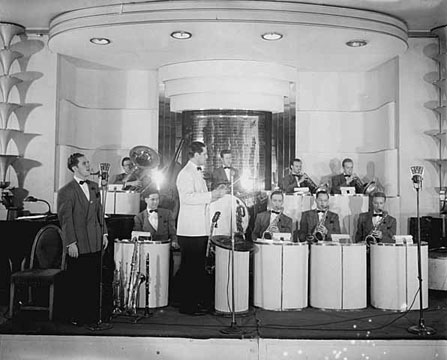
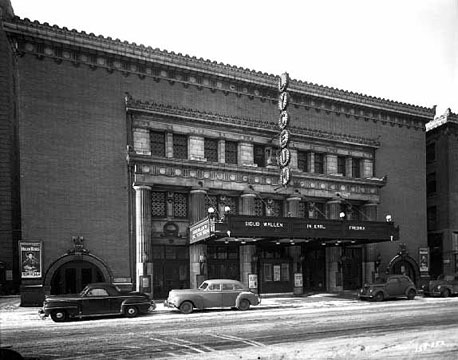
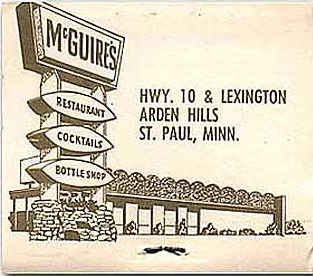

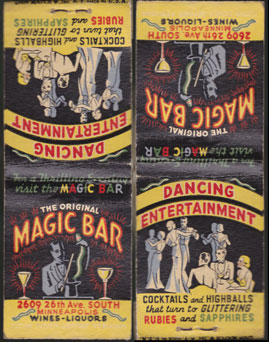
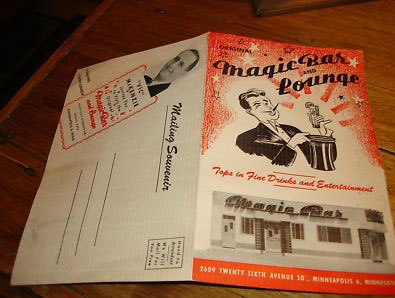
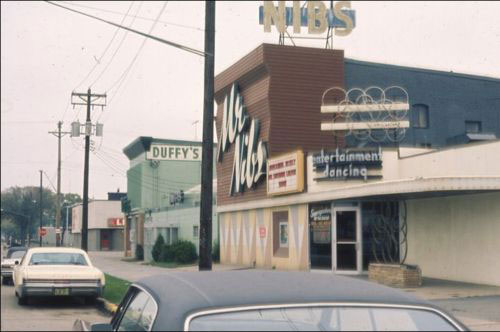
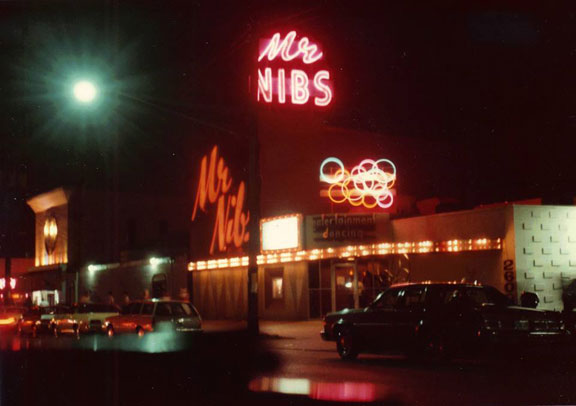
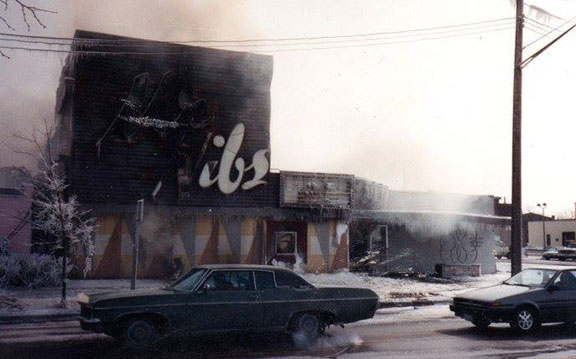
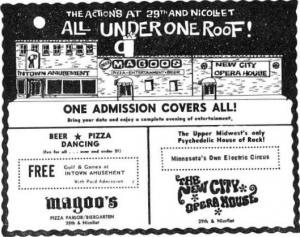
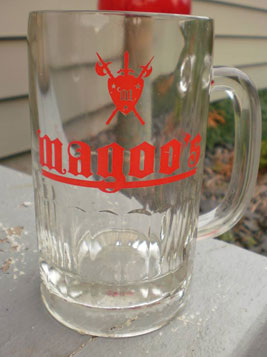

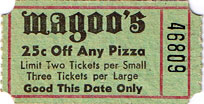
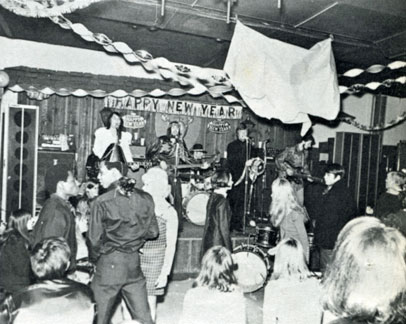
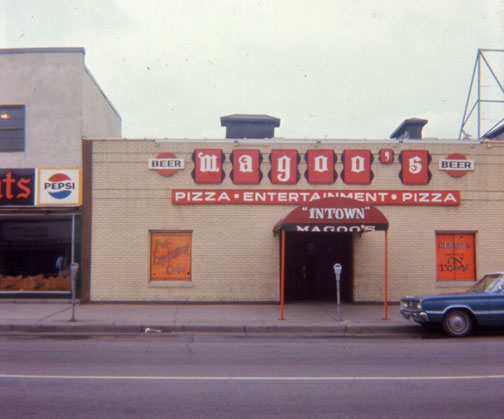
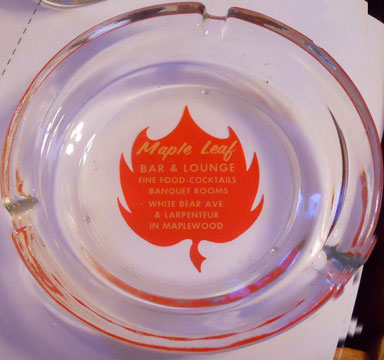
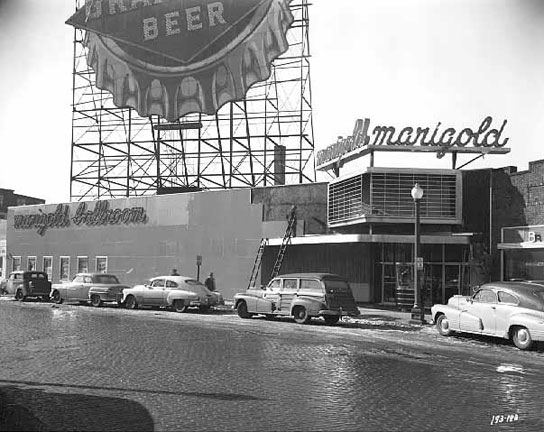
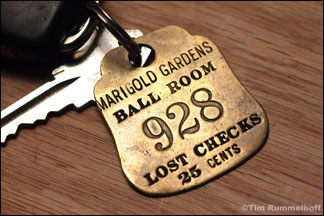
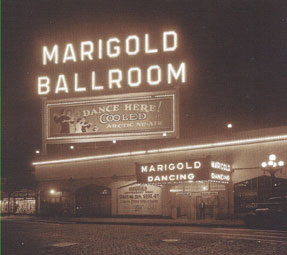
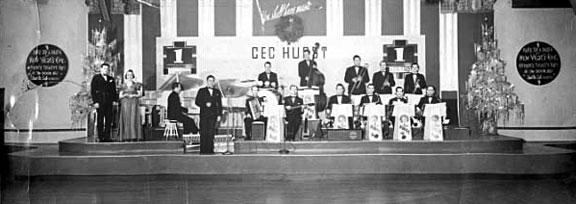
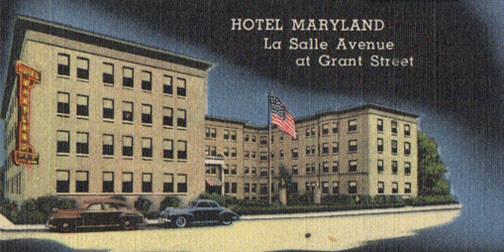
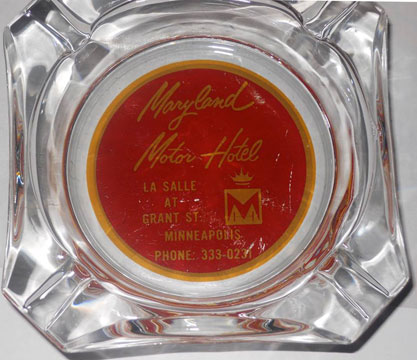
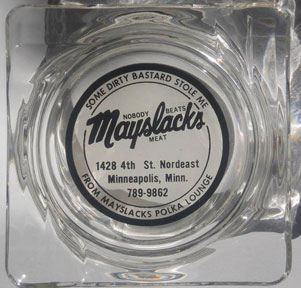

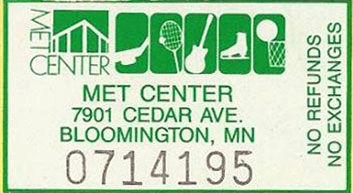
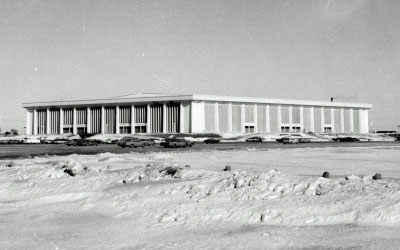
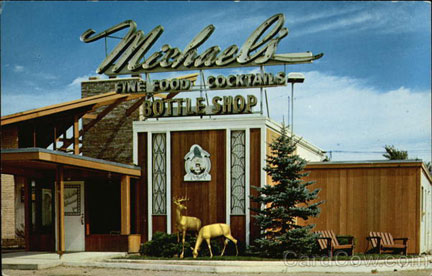
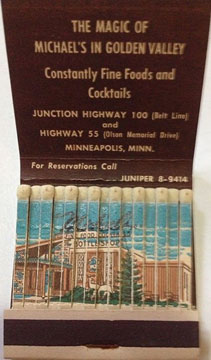
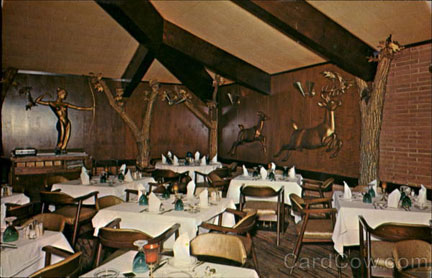
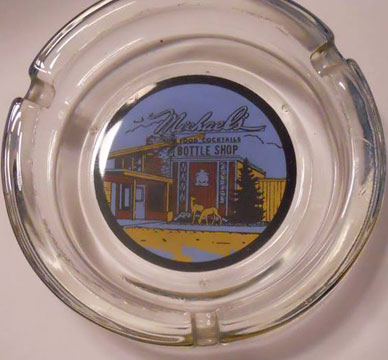
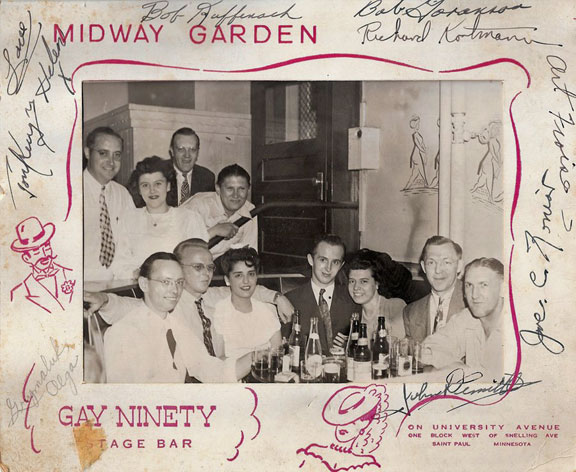
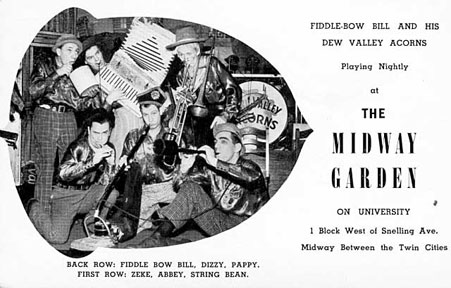
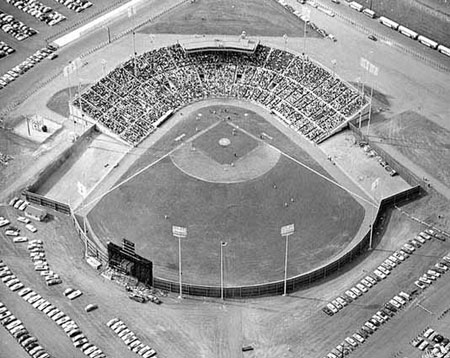
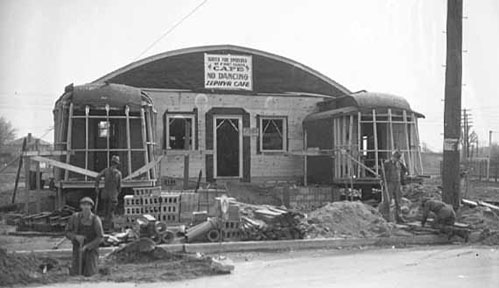
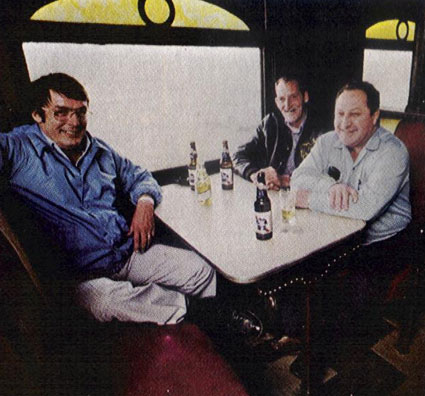

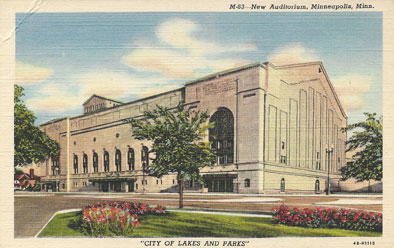
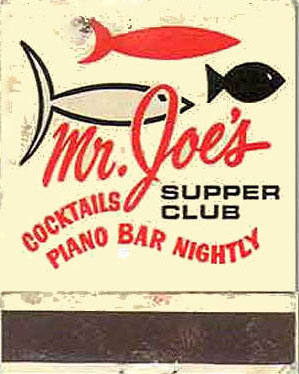
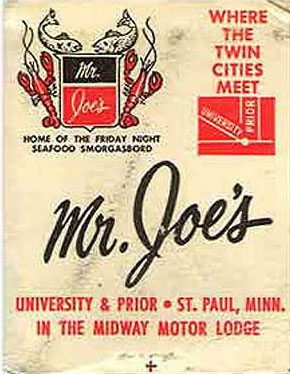
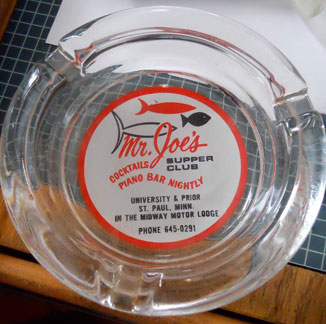
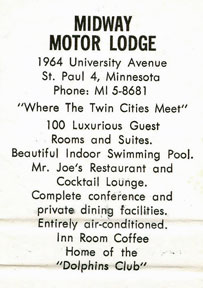
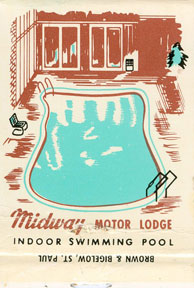
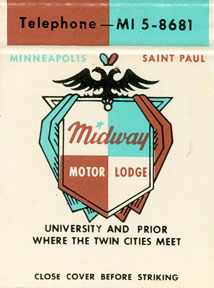
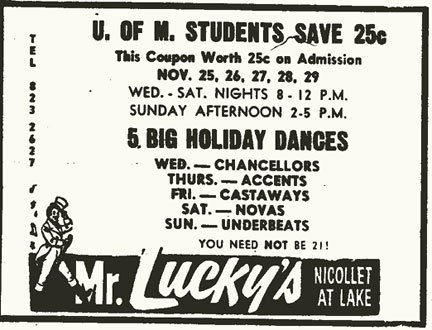
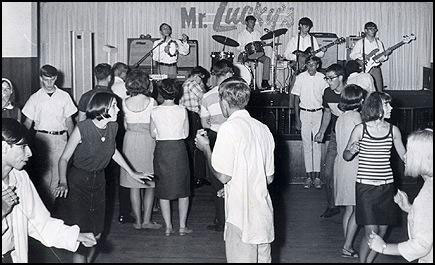
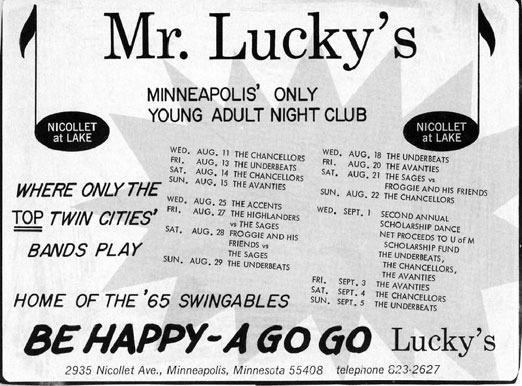
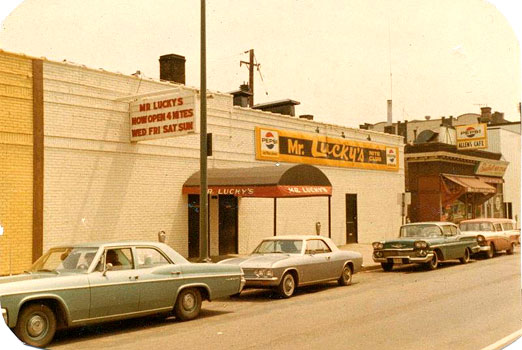
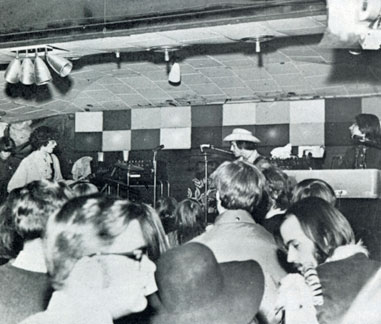
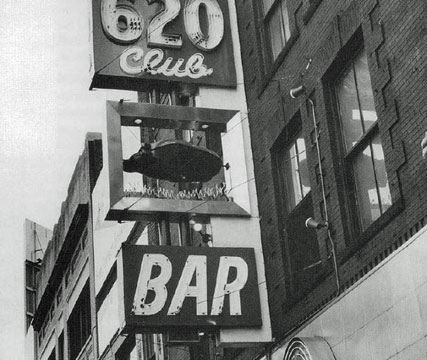

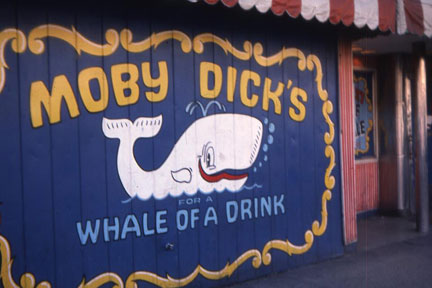
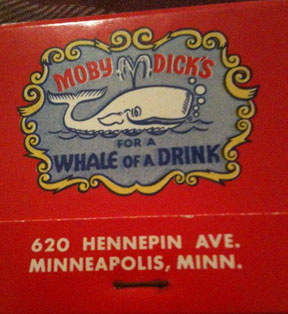
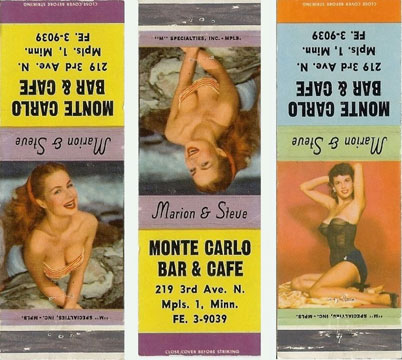
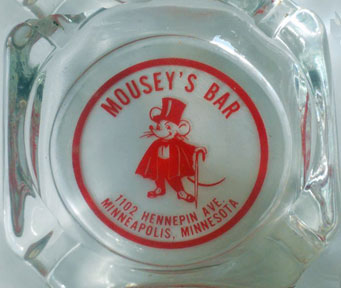
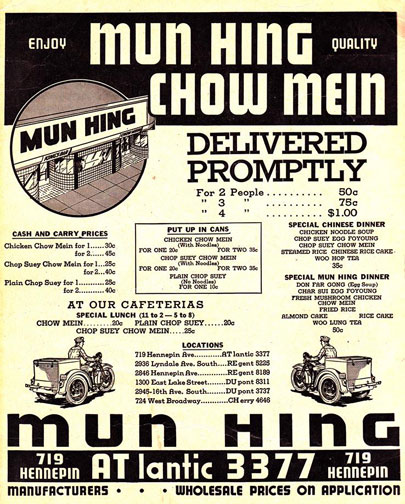
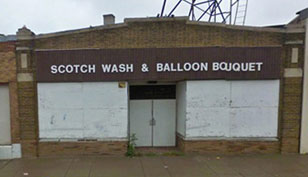
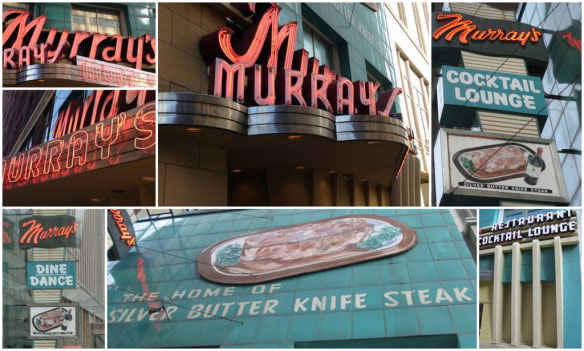
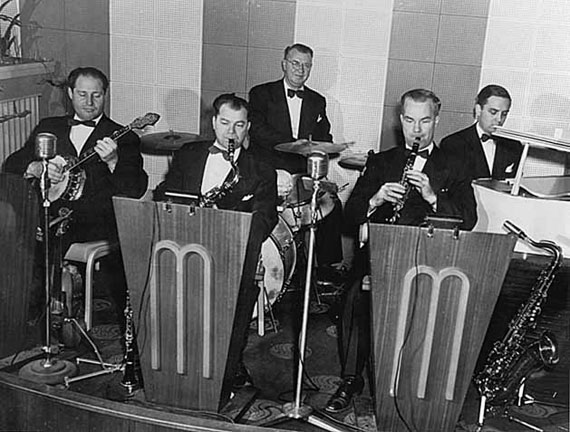
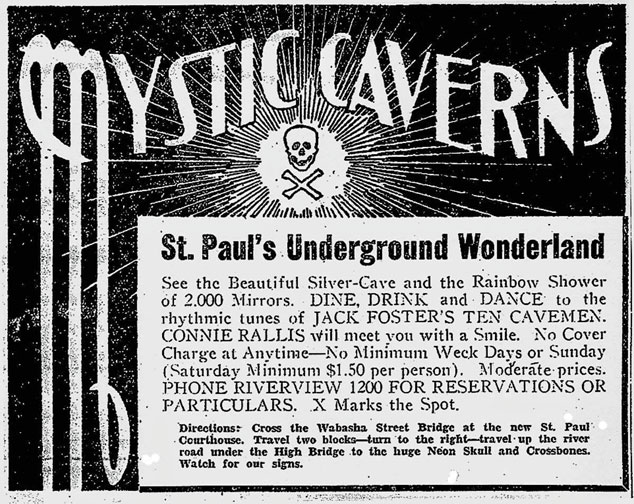
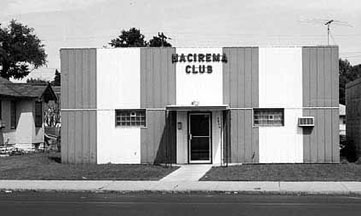
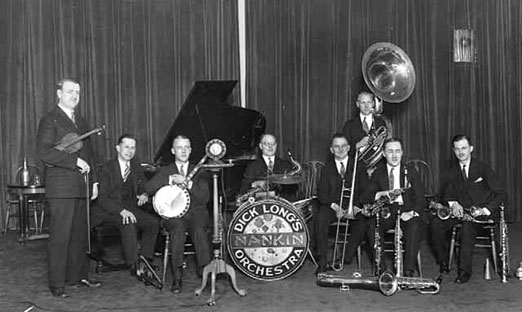
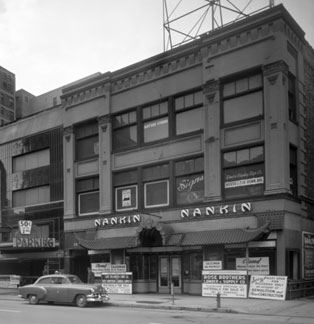
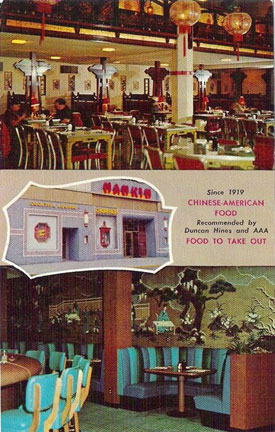
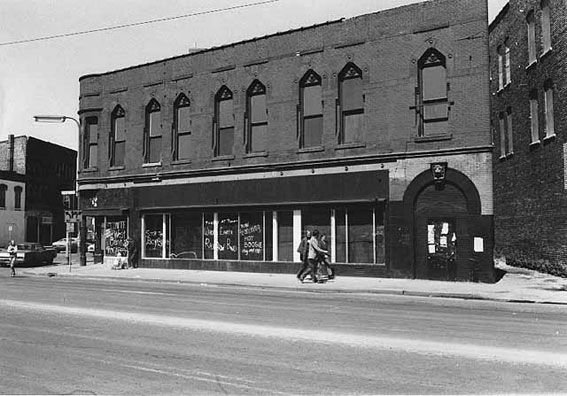
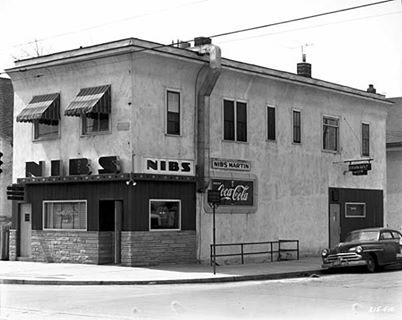
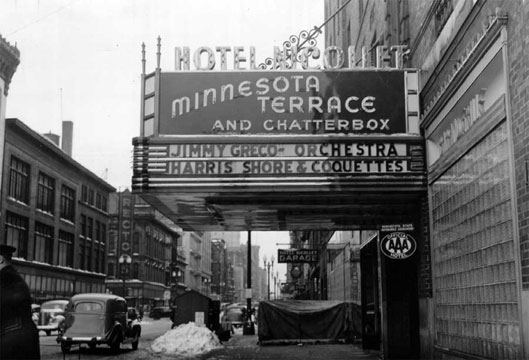
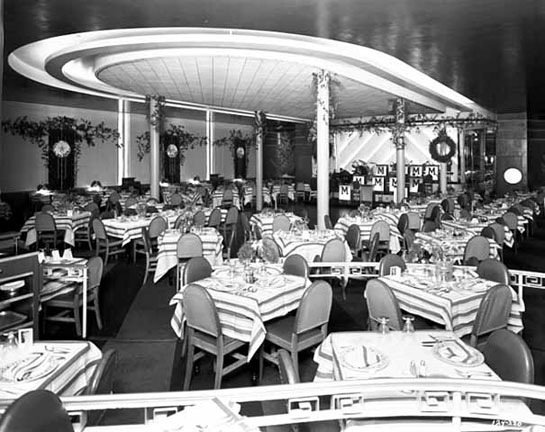
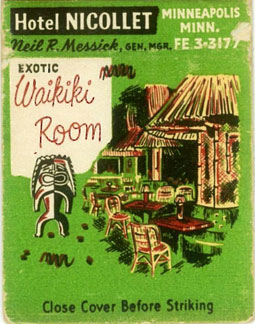
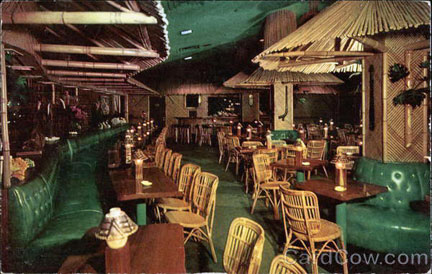
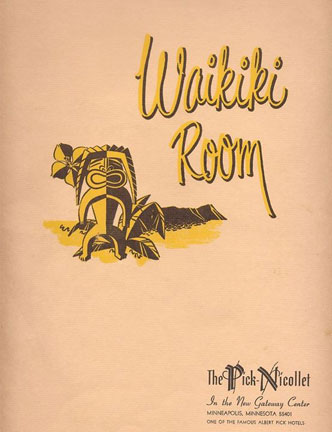
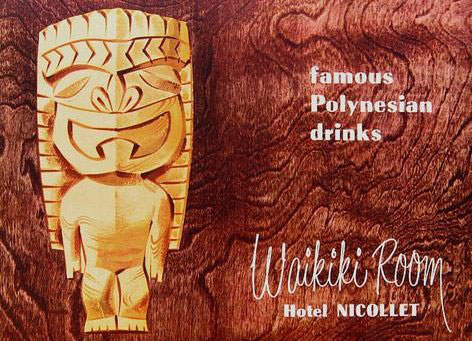
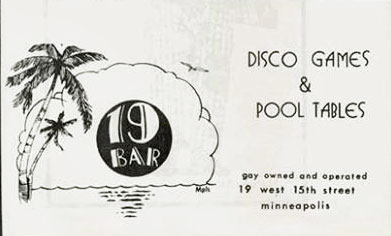
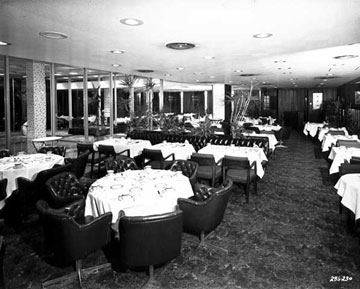
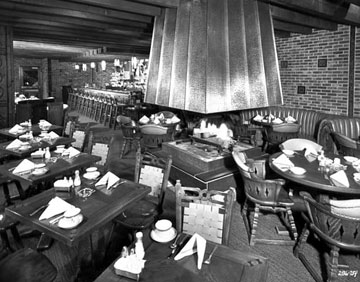
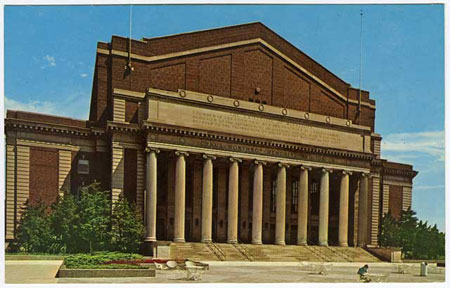
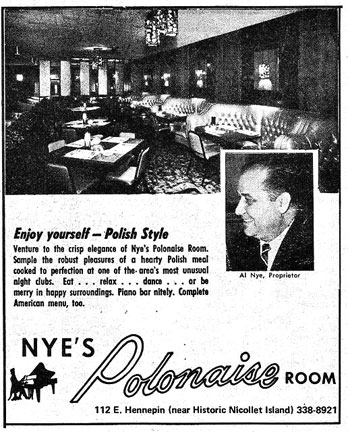
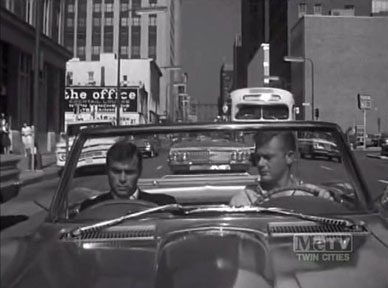
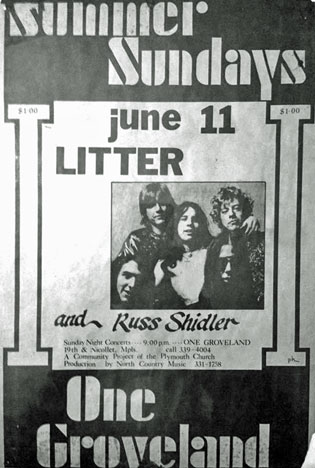

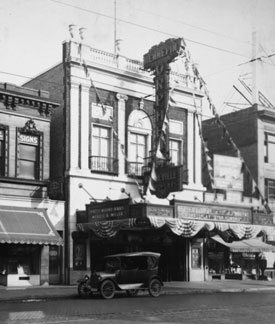
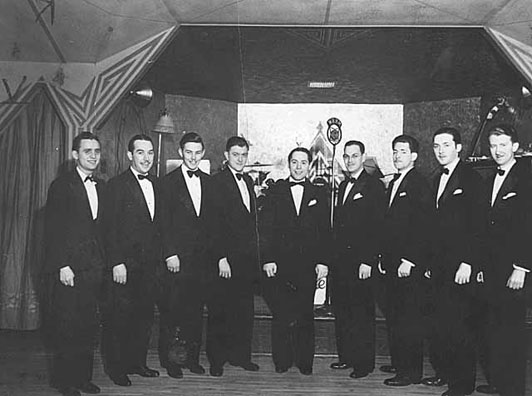
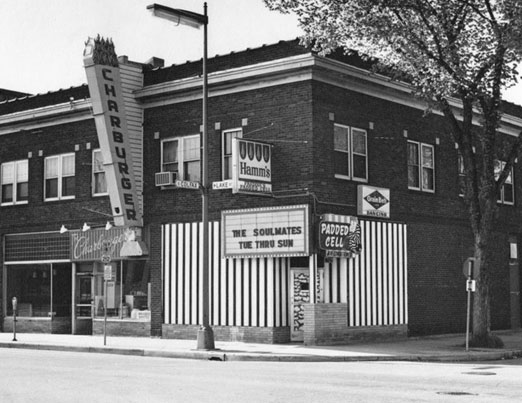
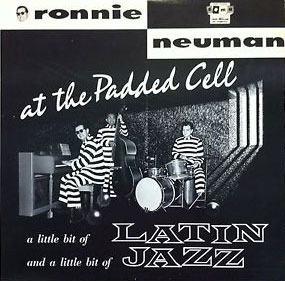 If you've got $250 you can buy this SOMA LP on ebay!
If you've got $250 you can buy this SOMA LP on ebay!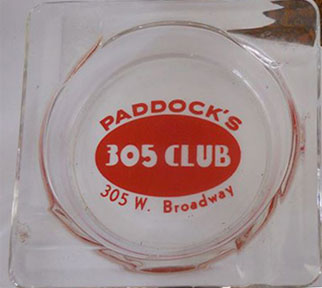
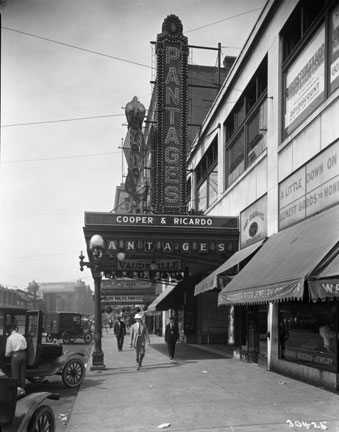
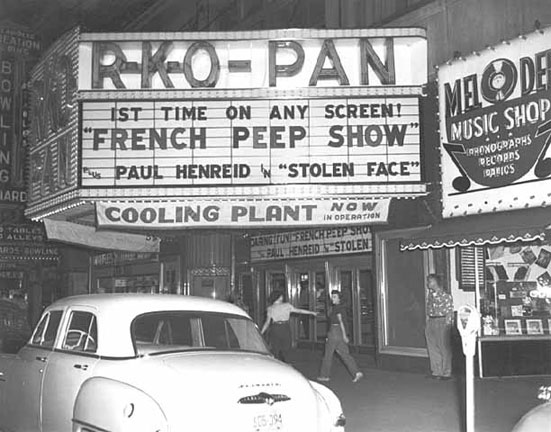
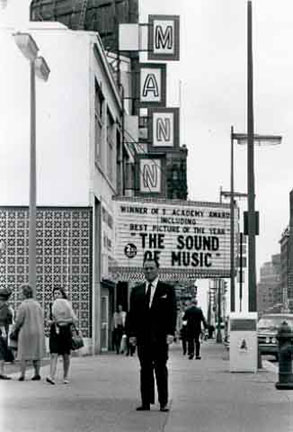 Ted Mann, 1966 - photo courtesy MHS
Ted Mann, 1966 - photo courtesy MHS